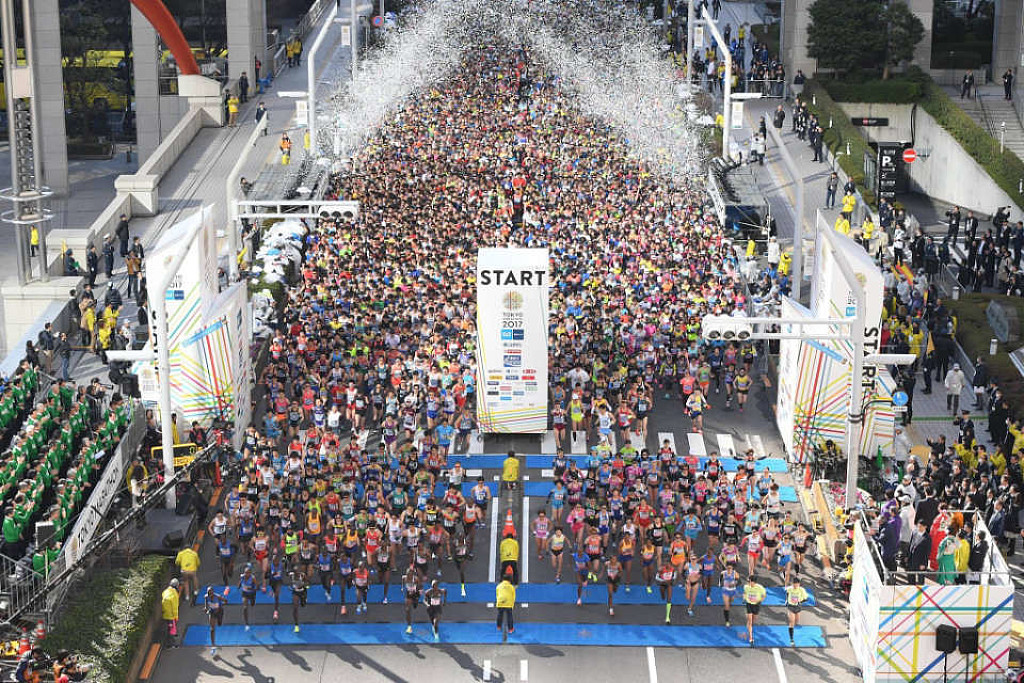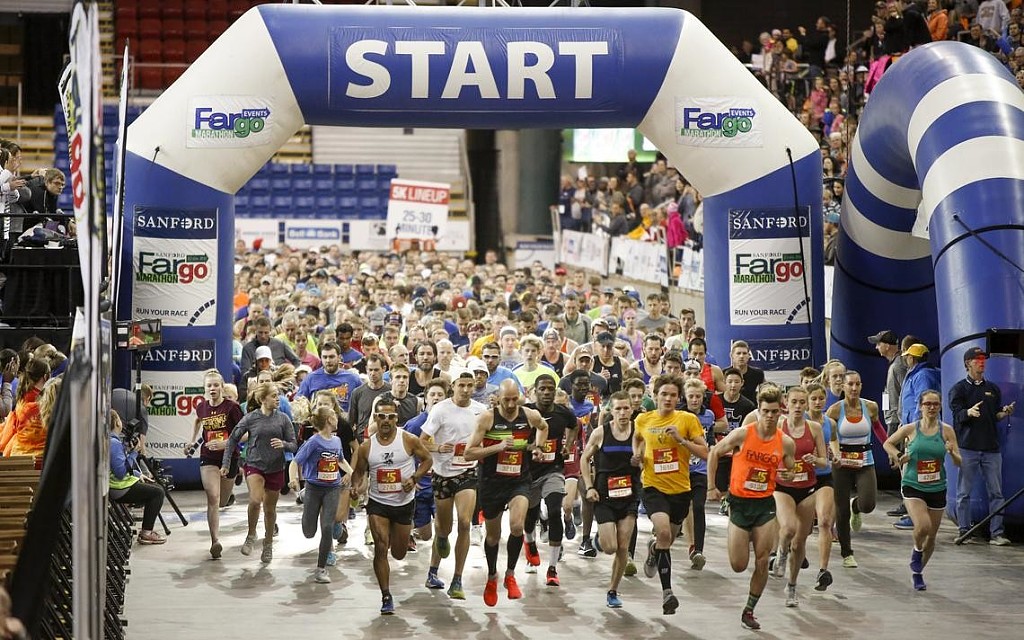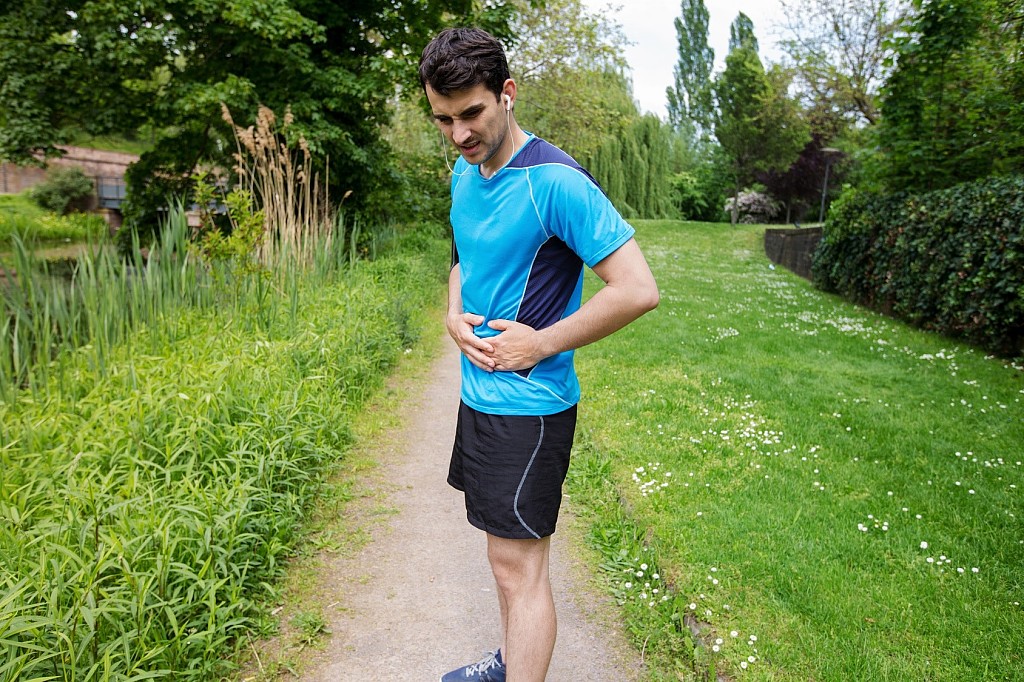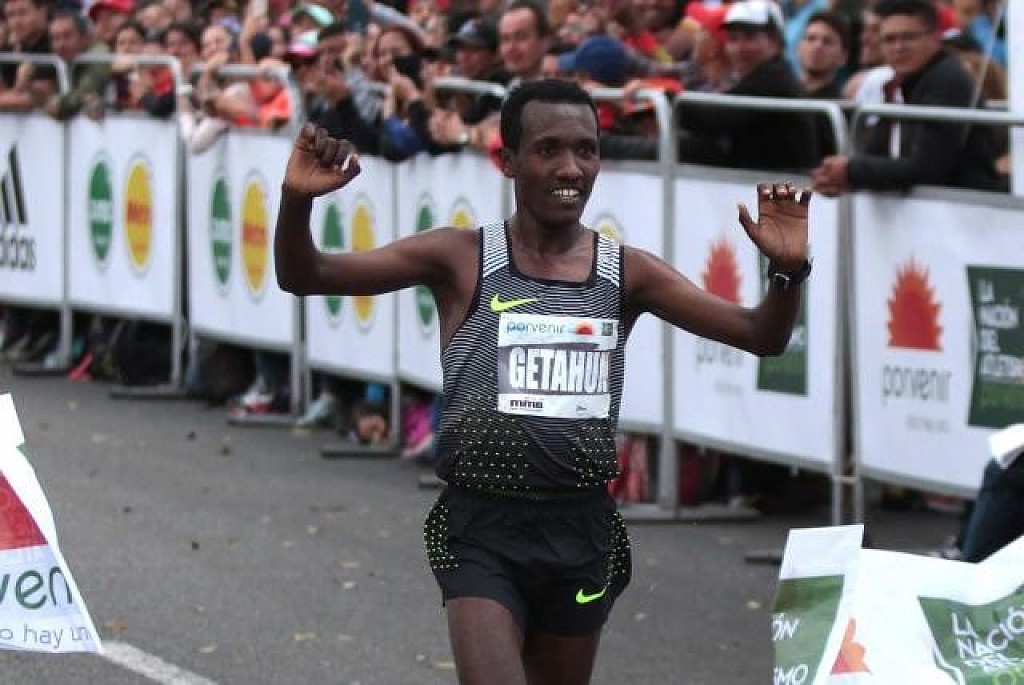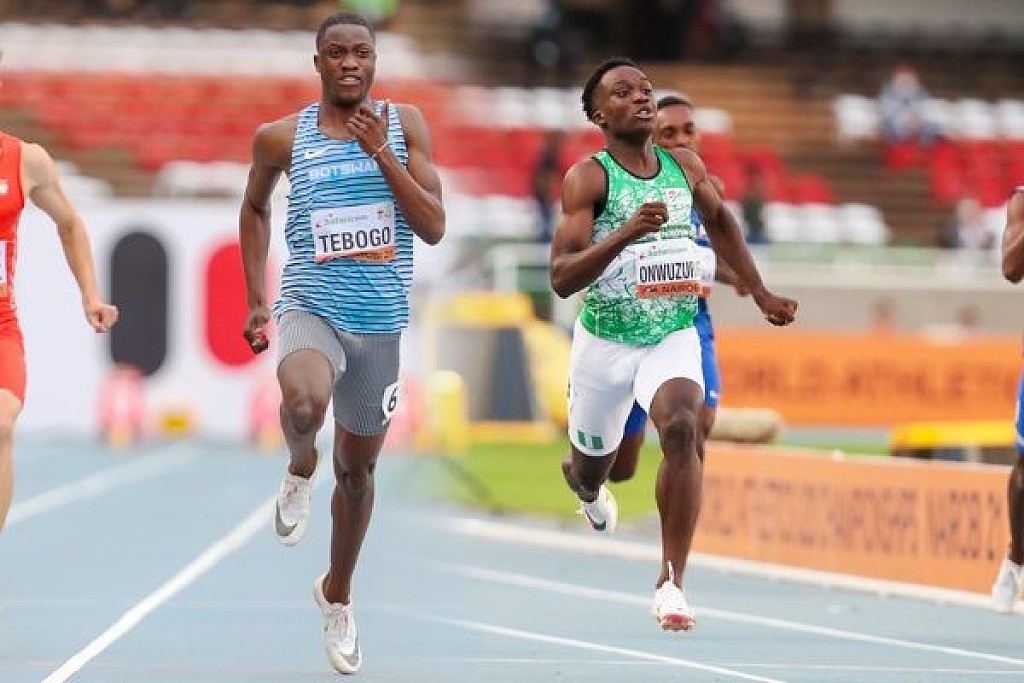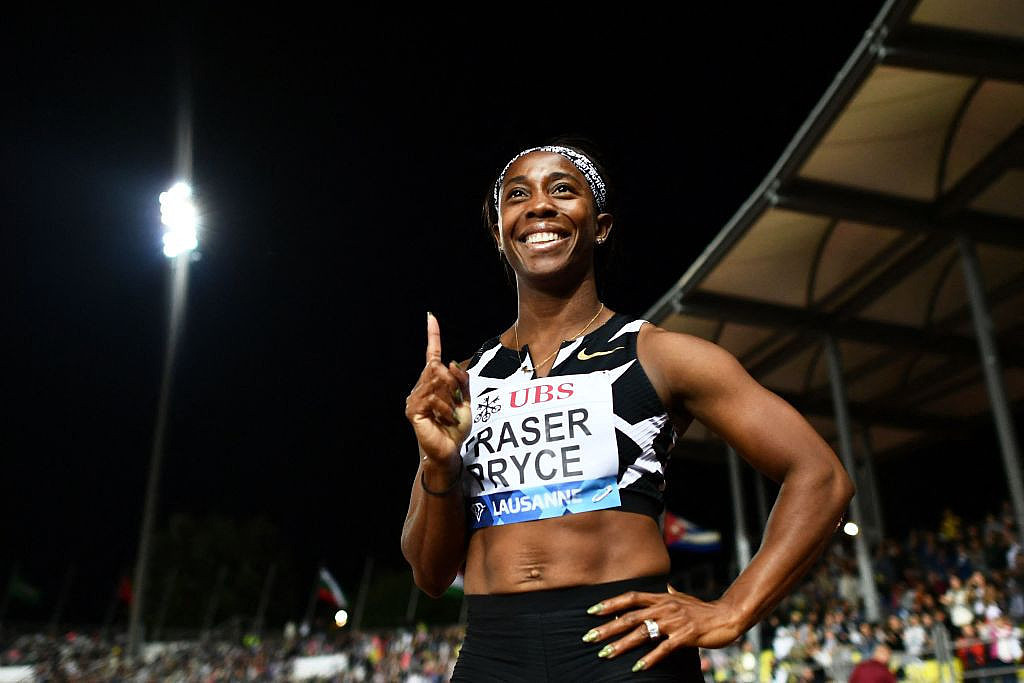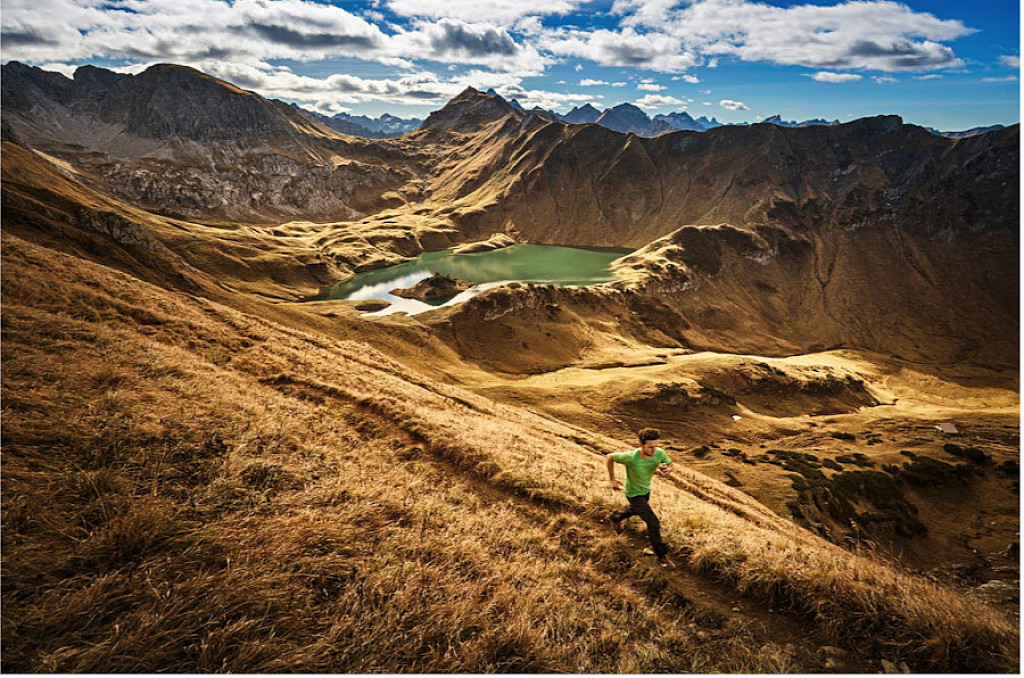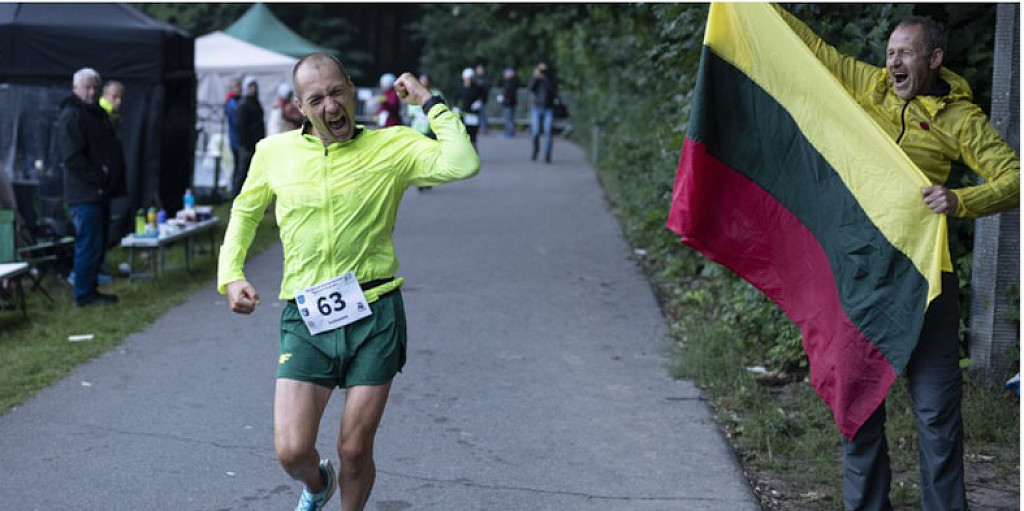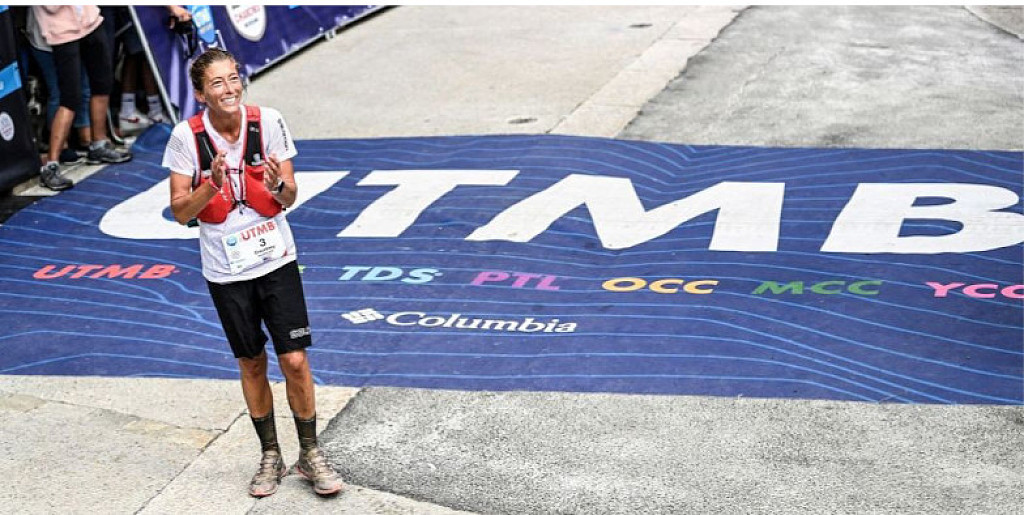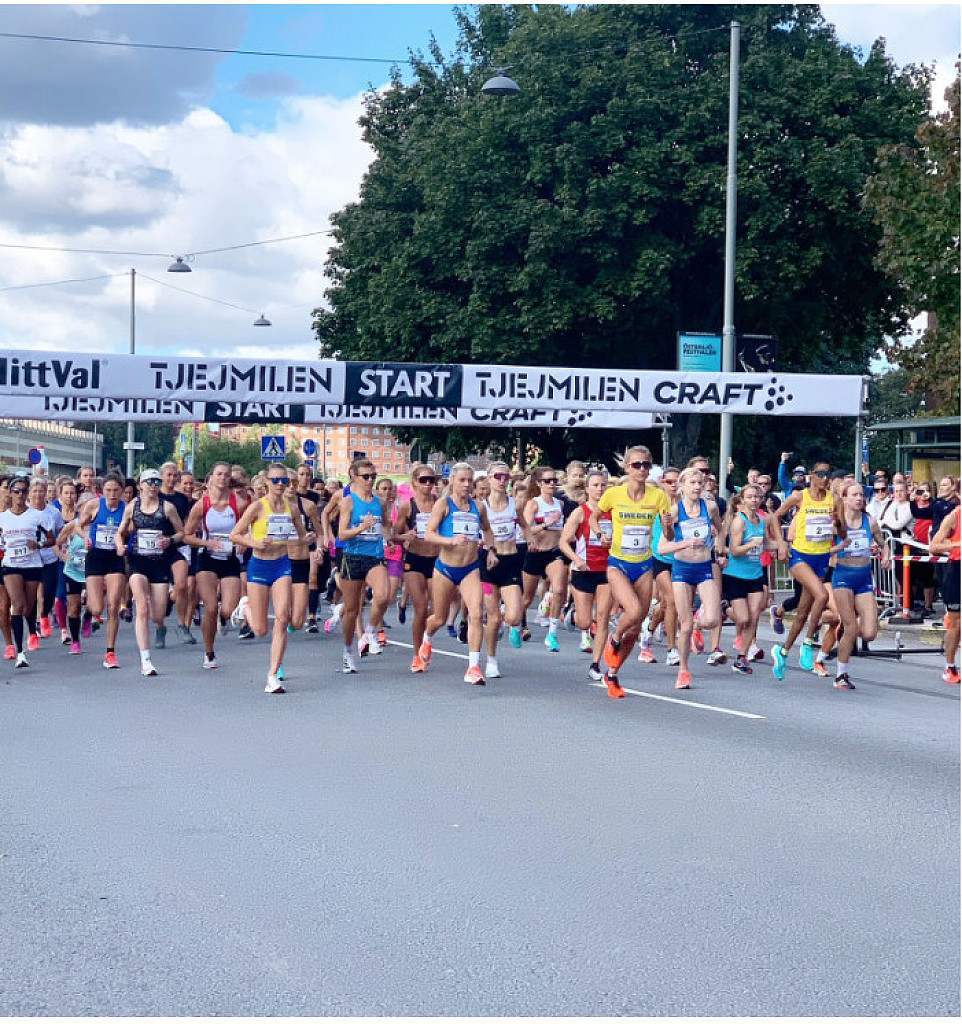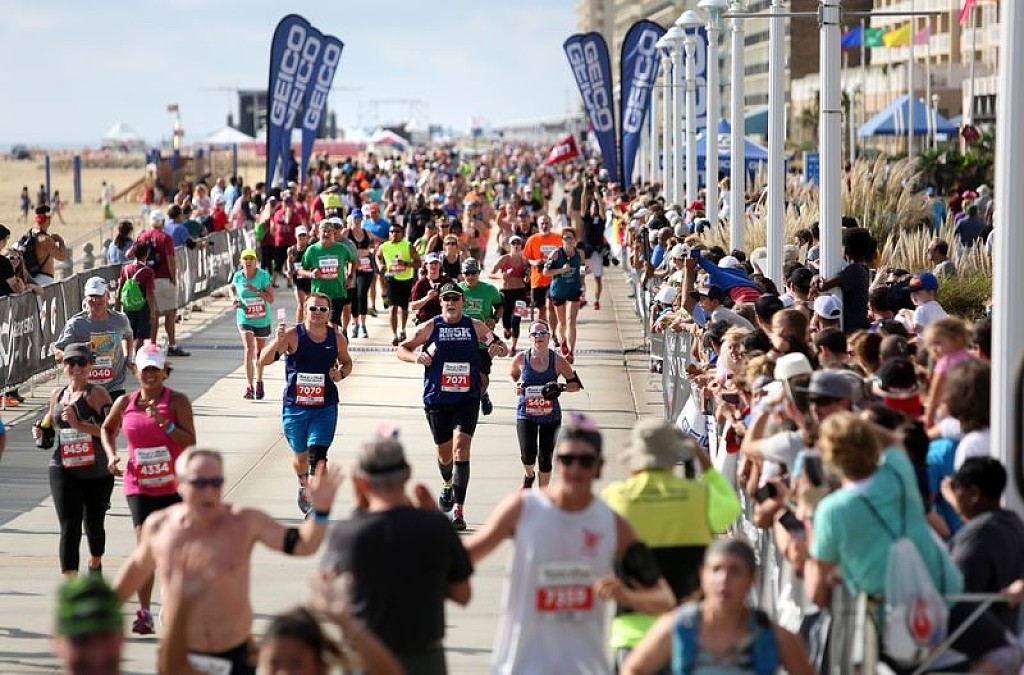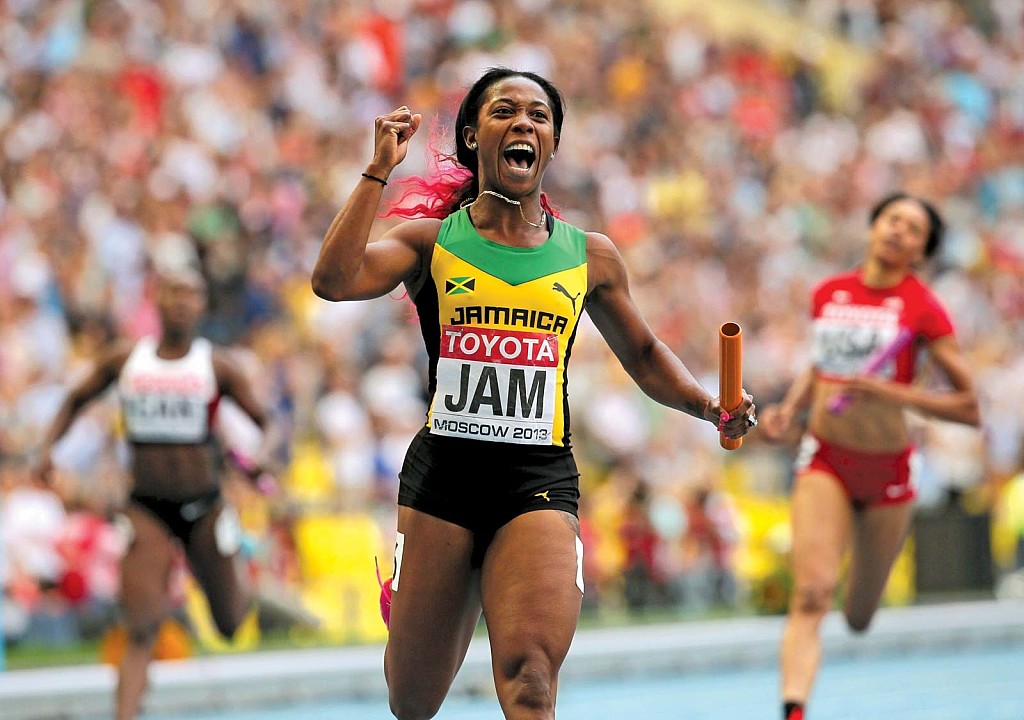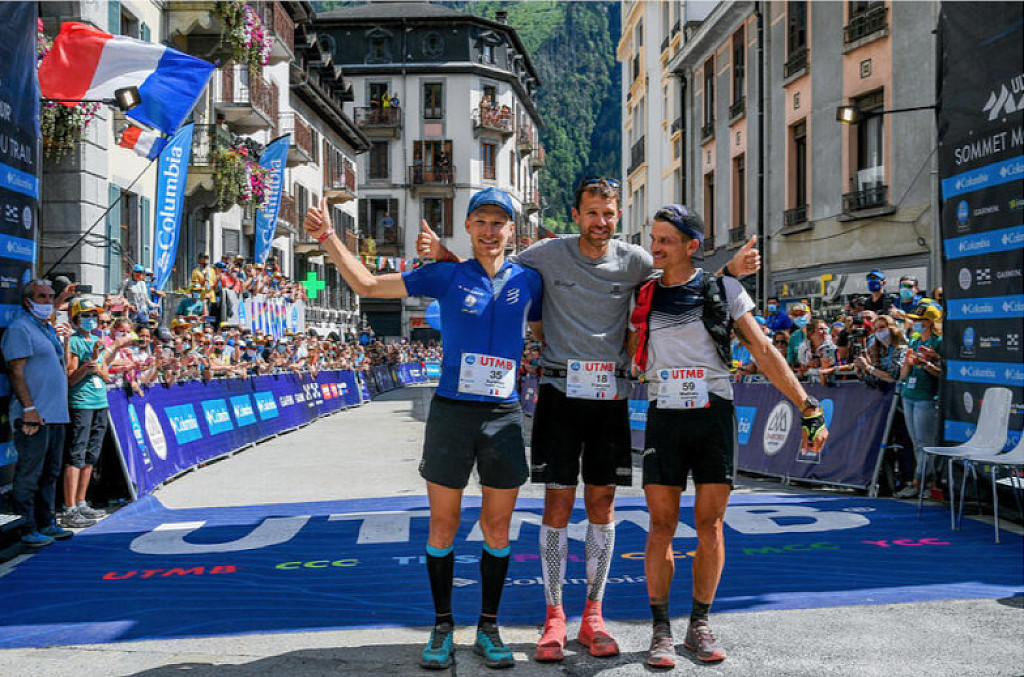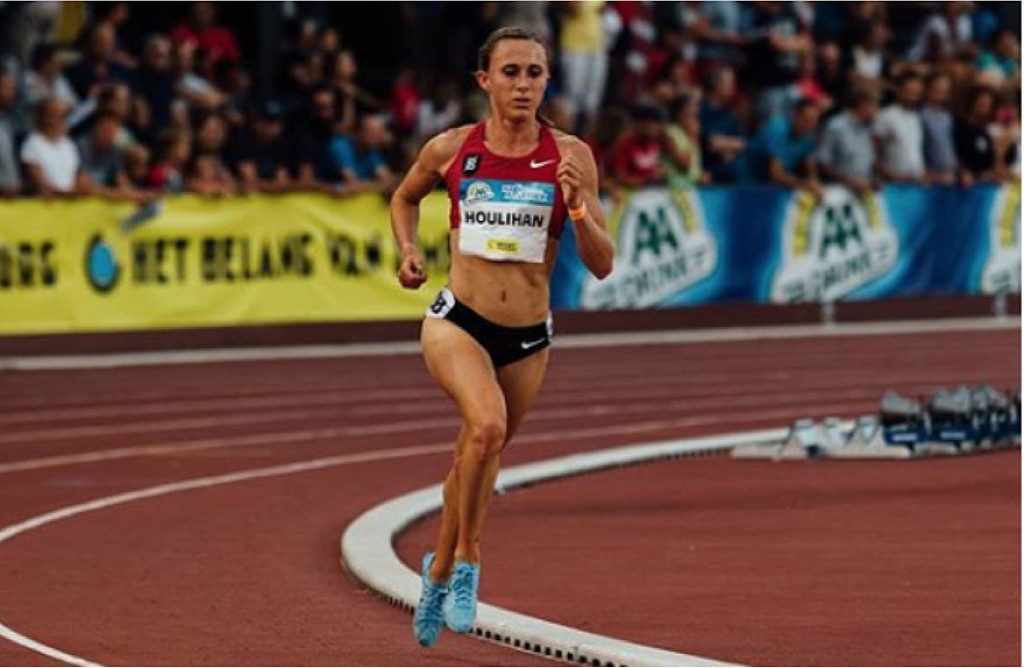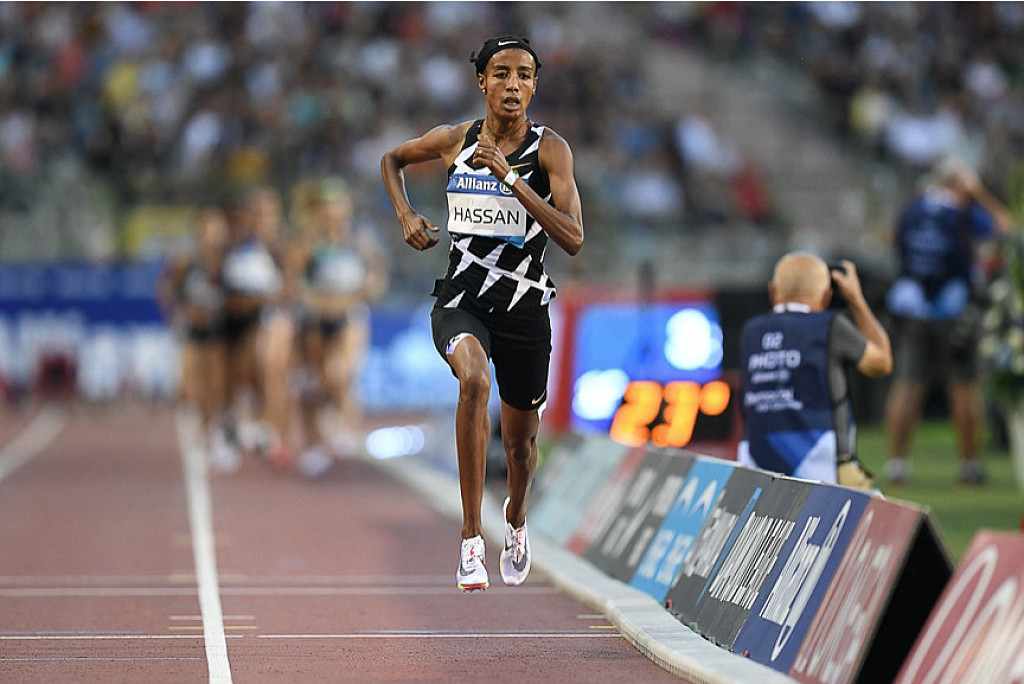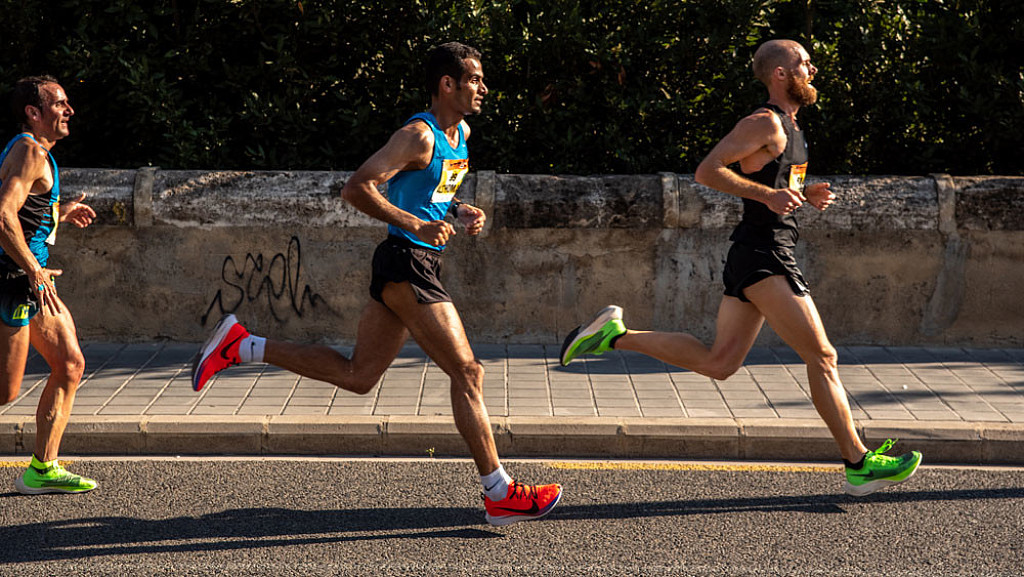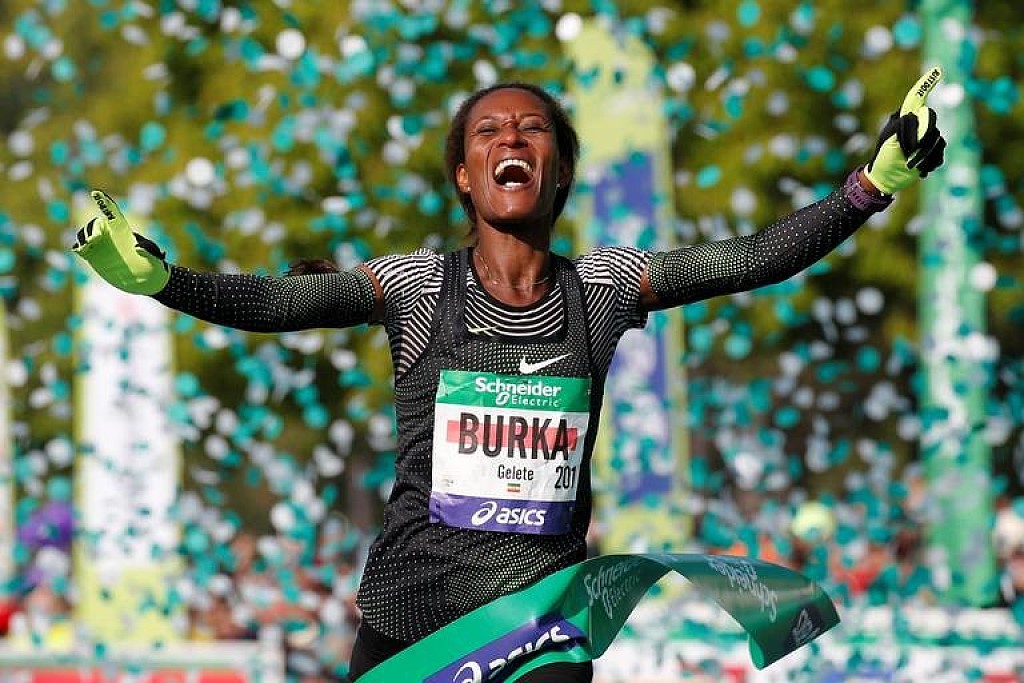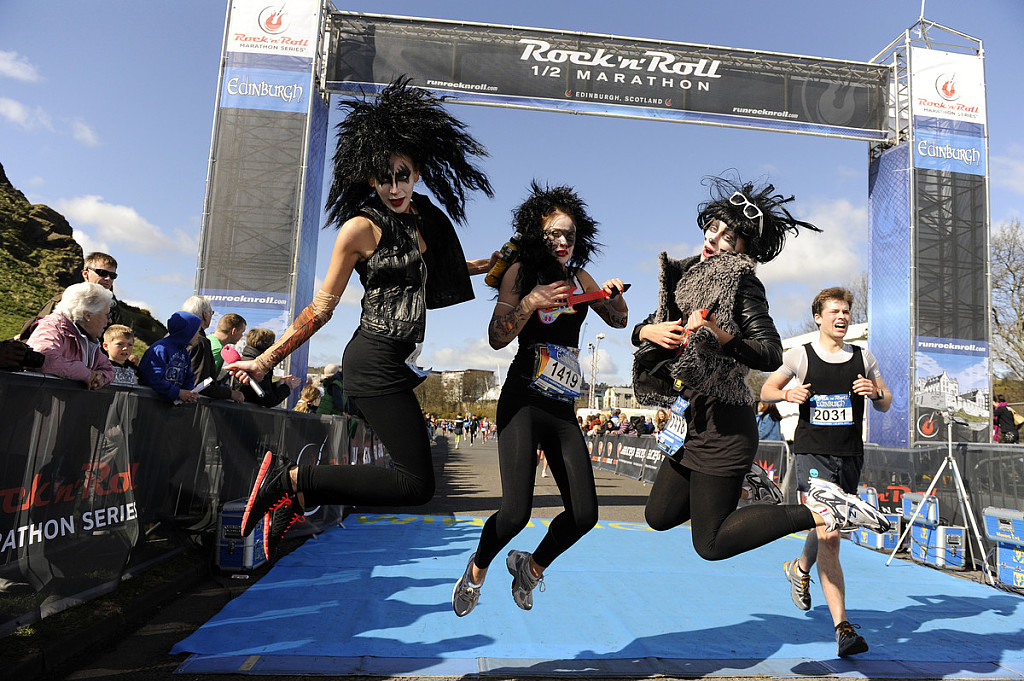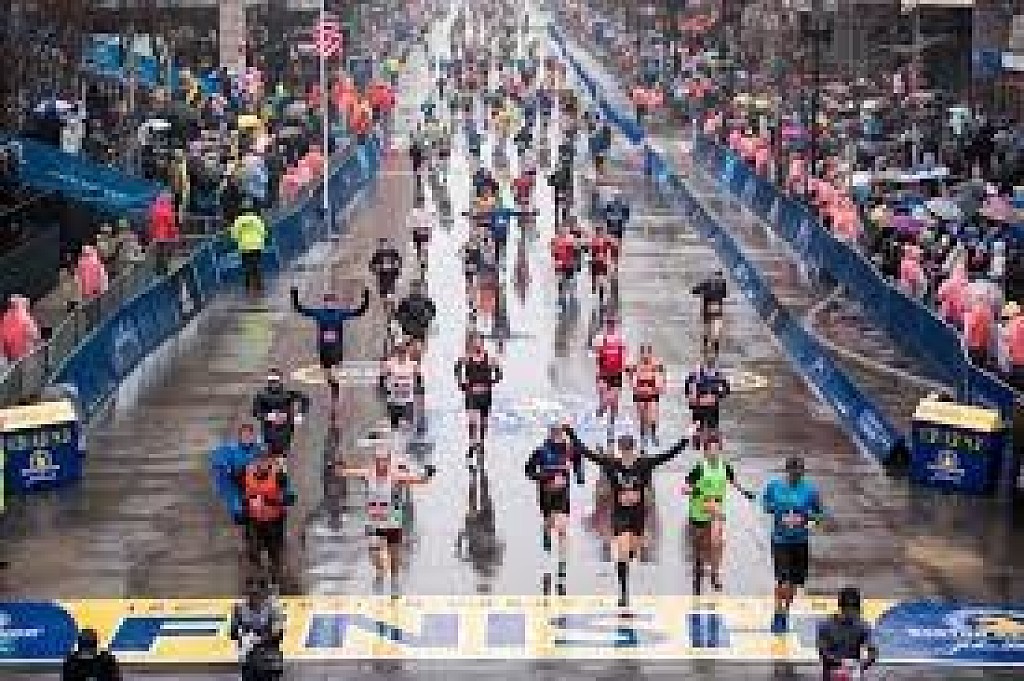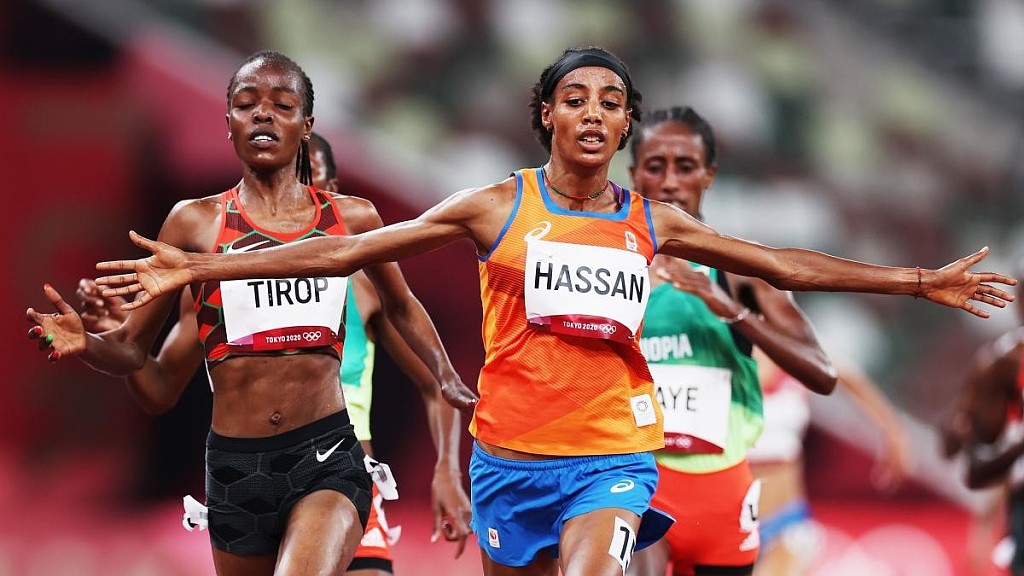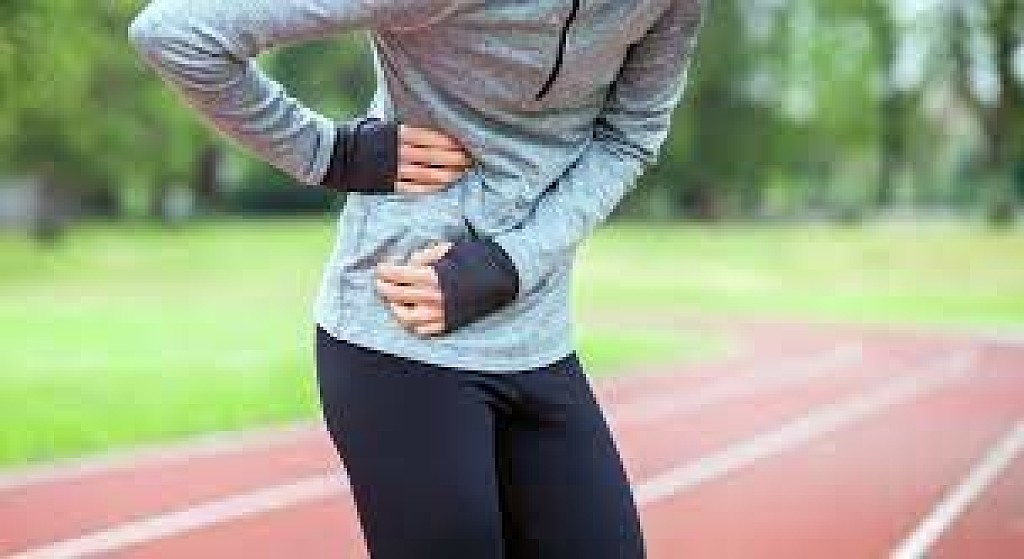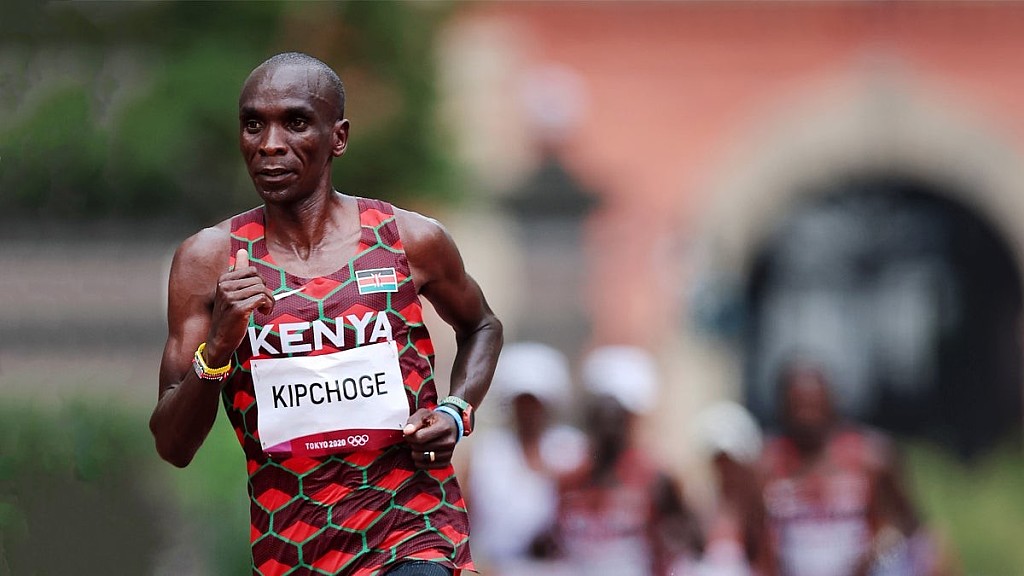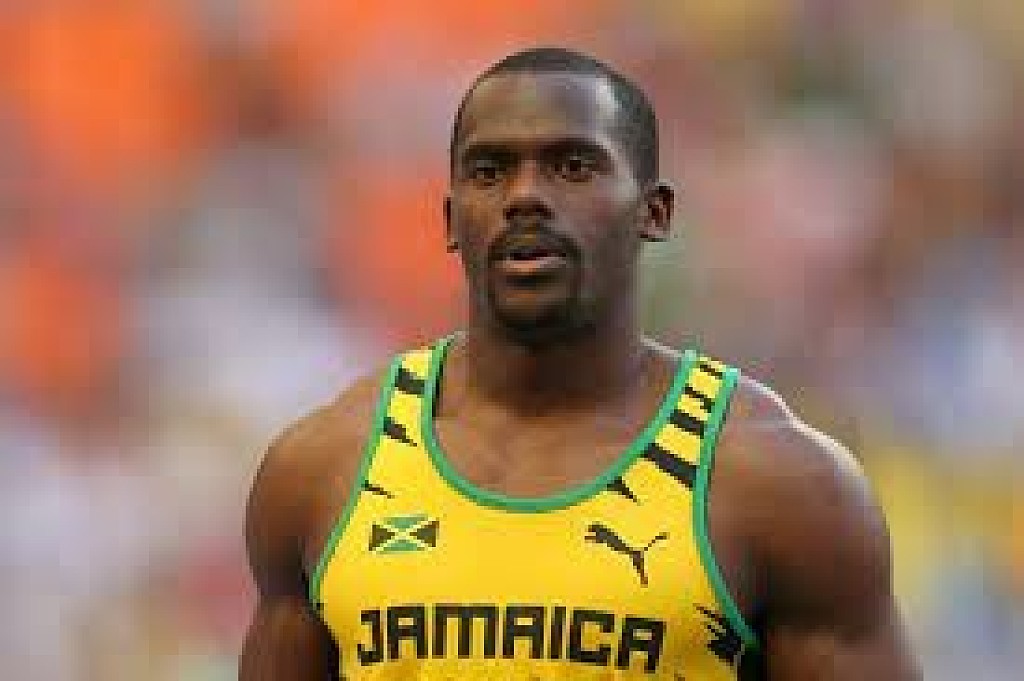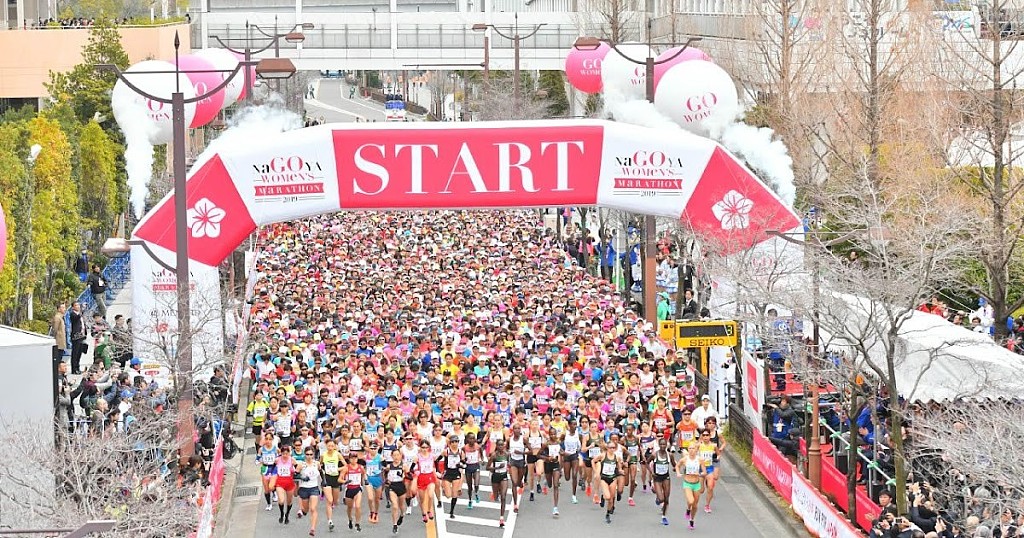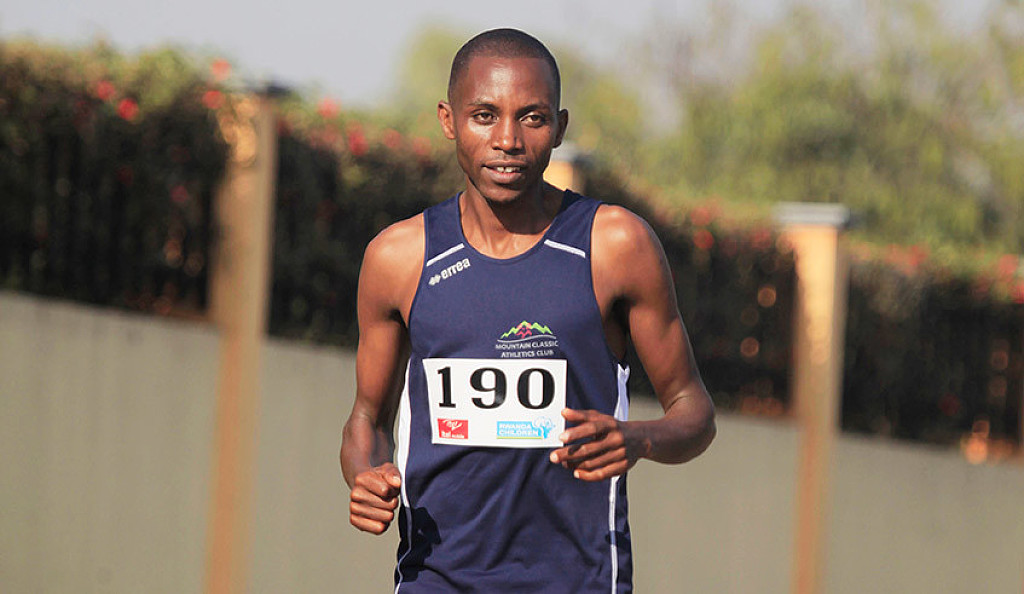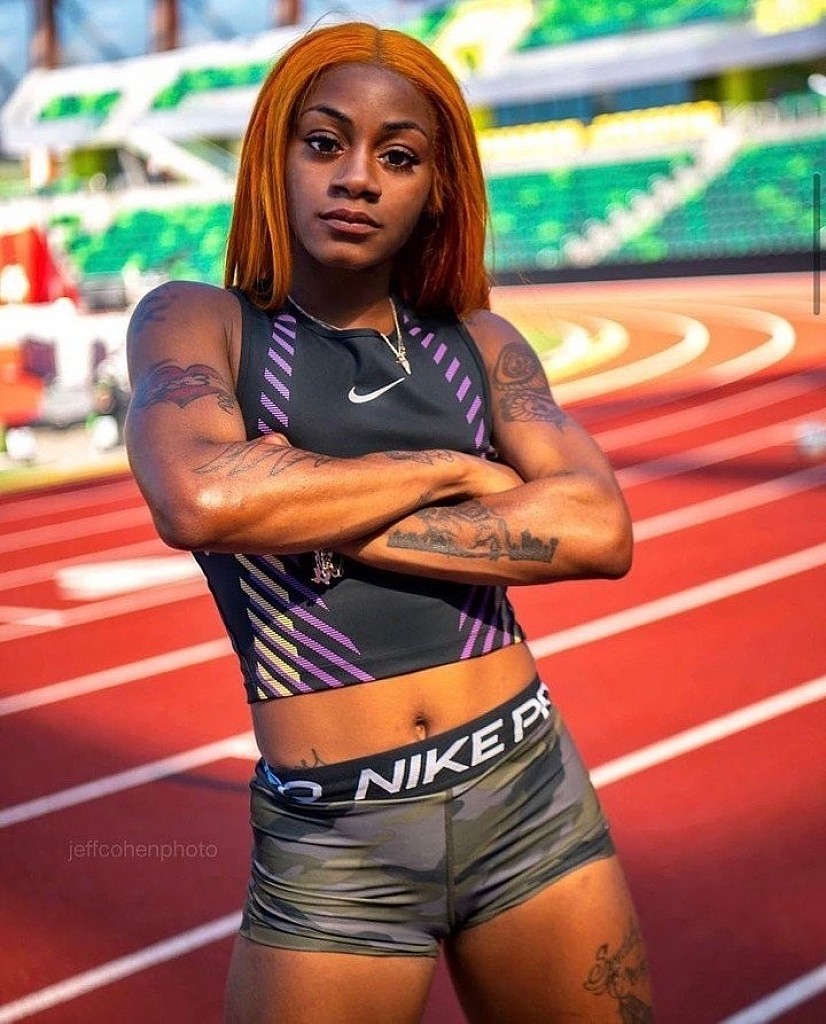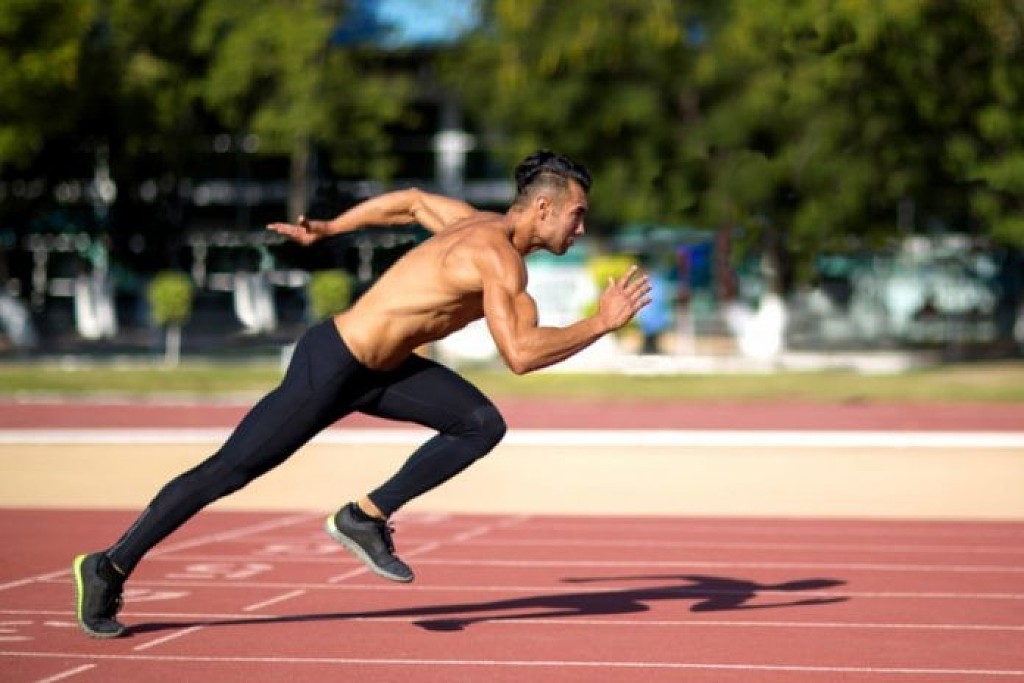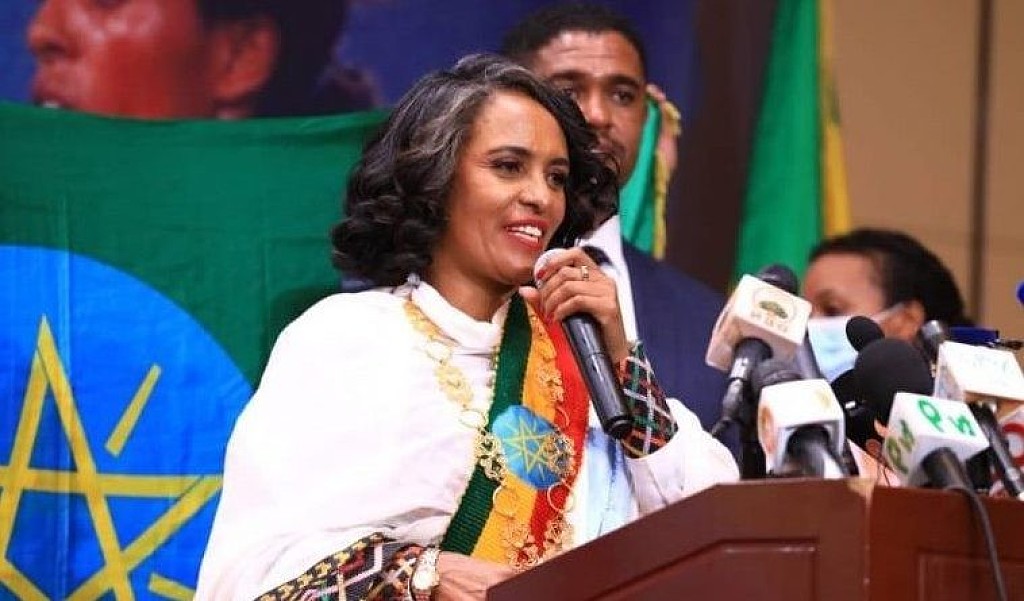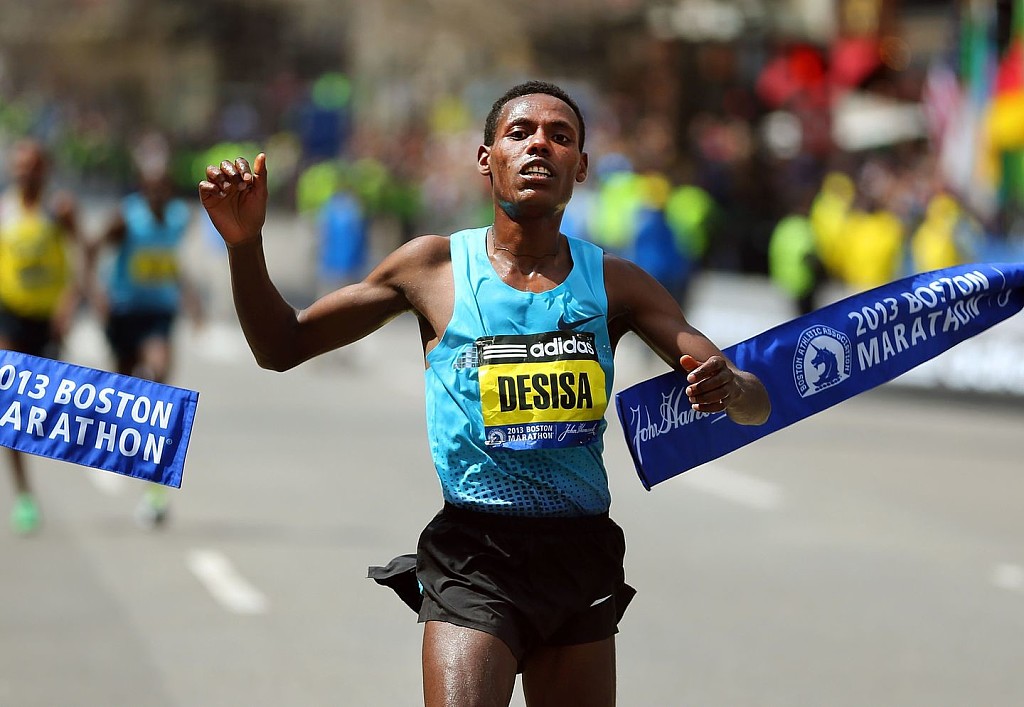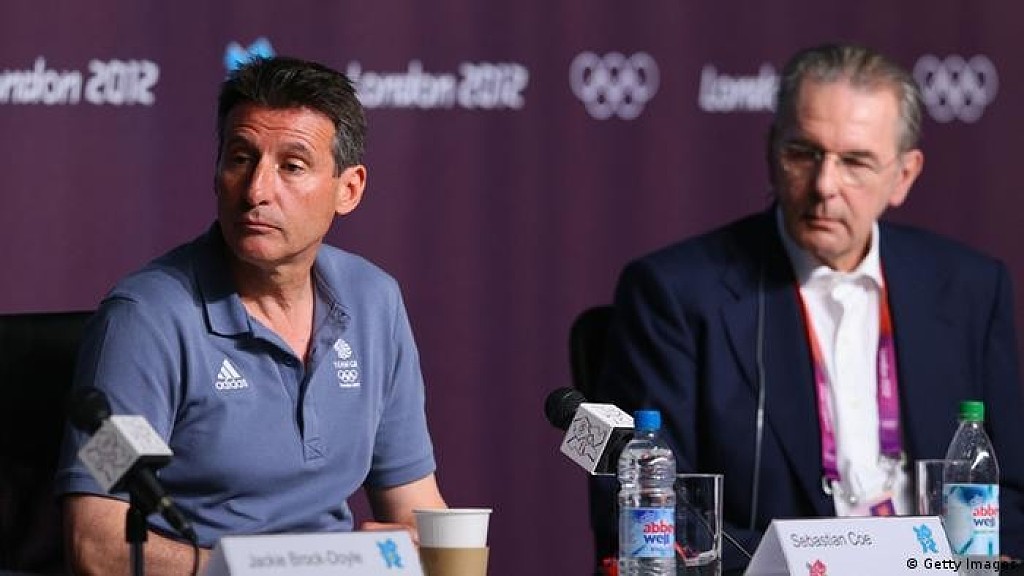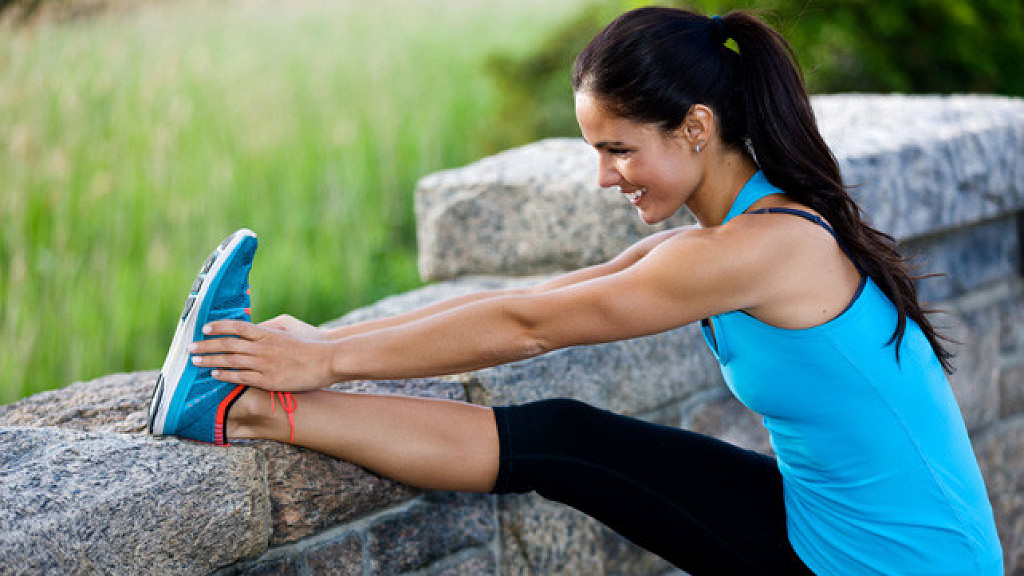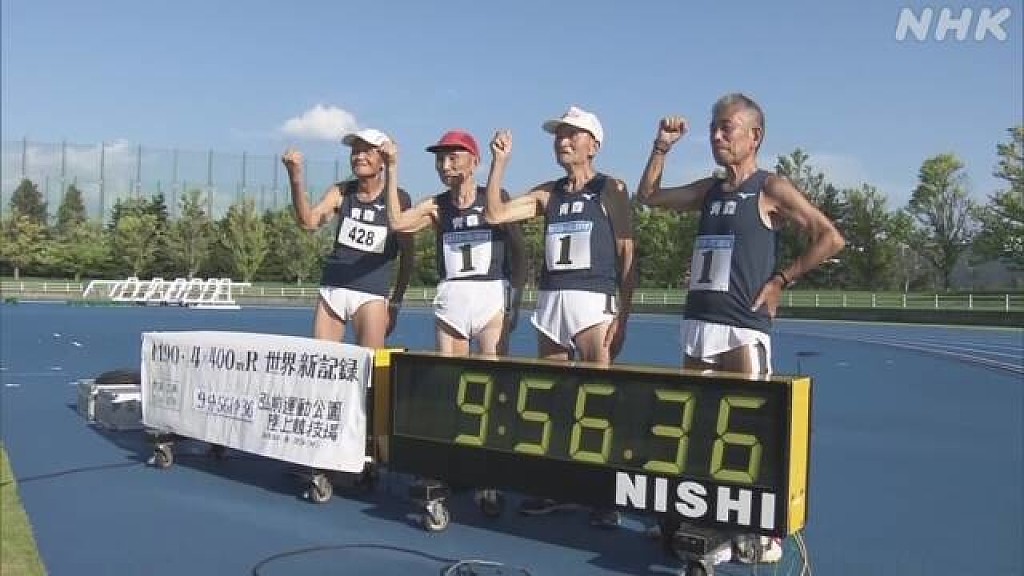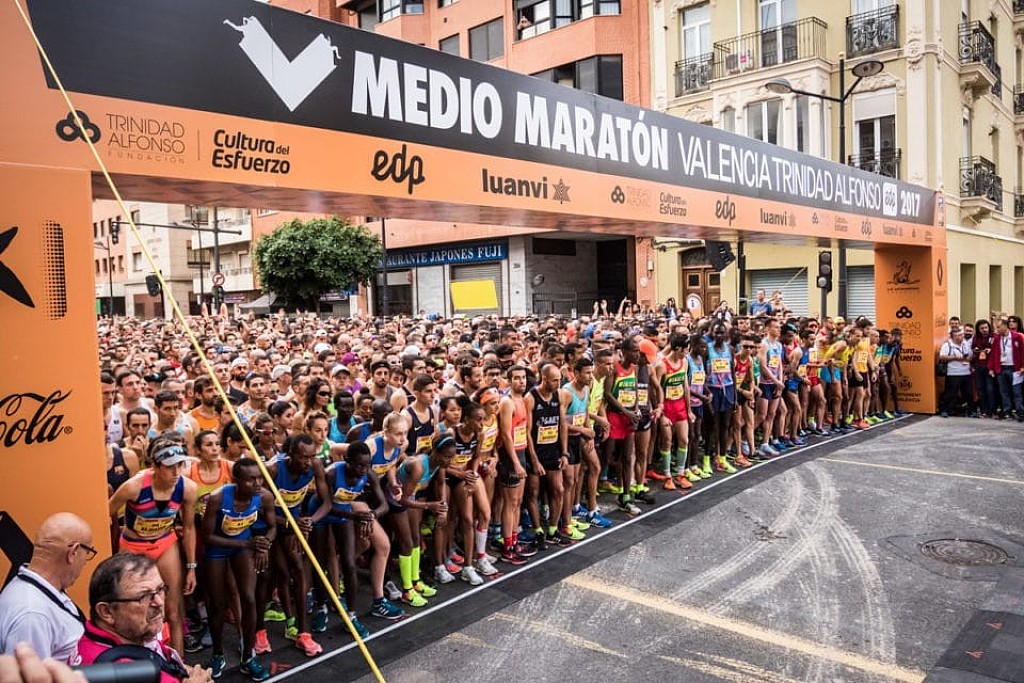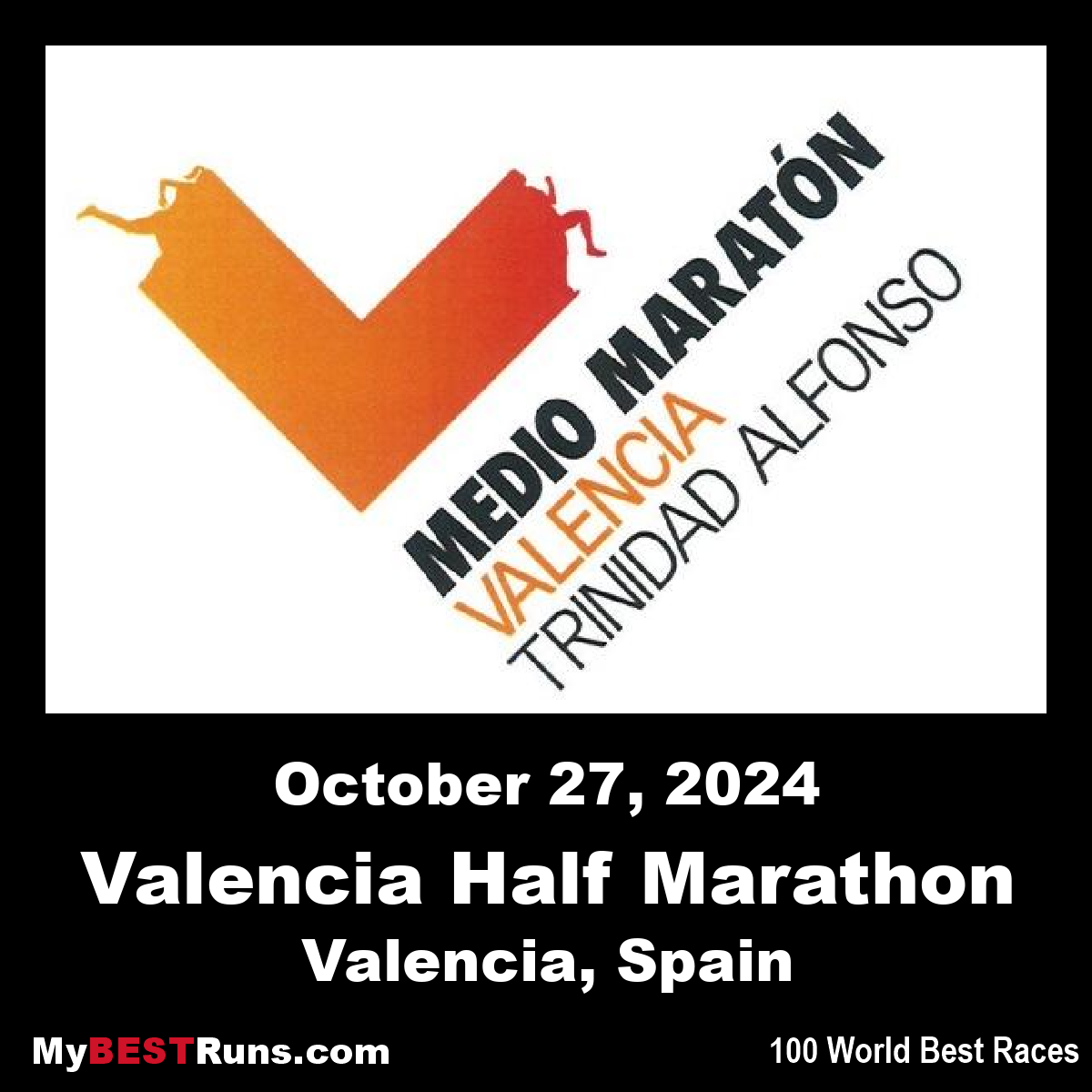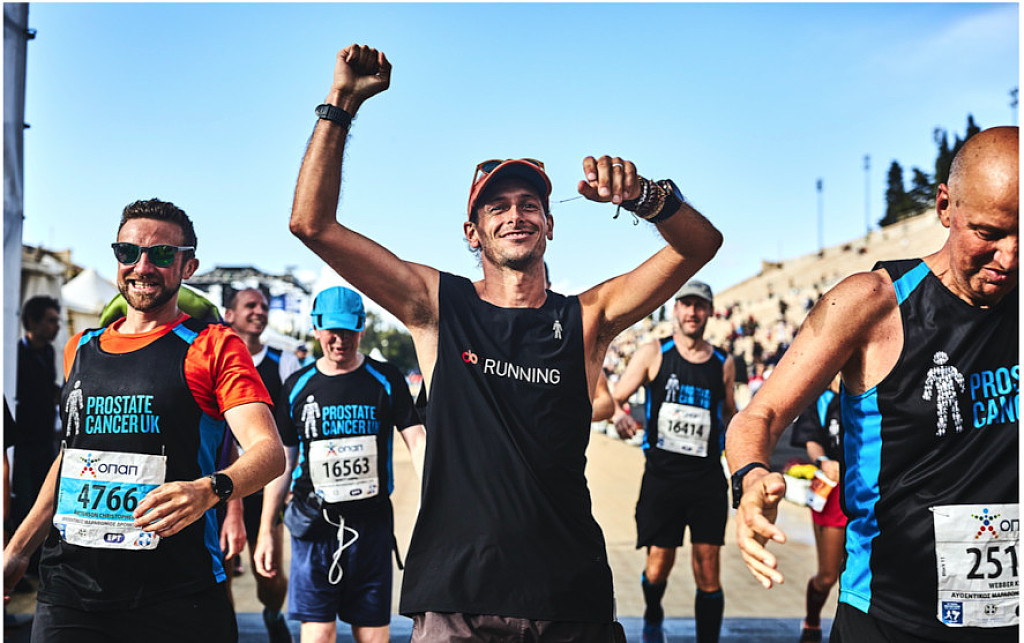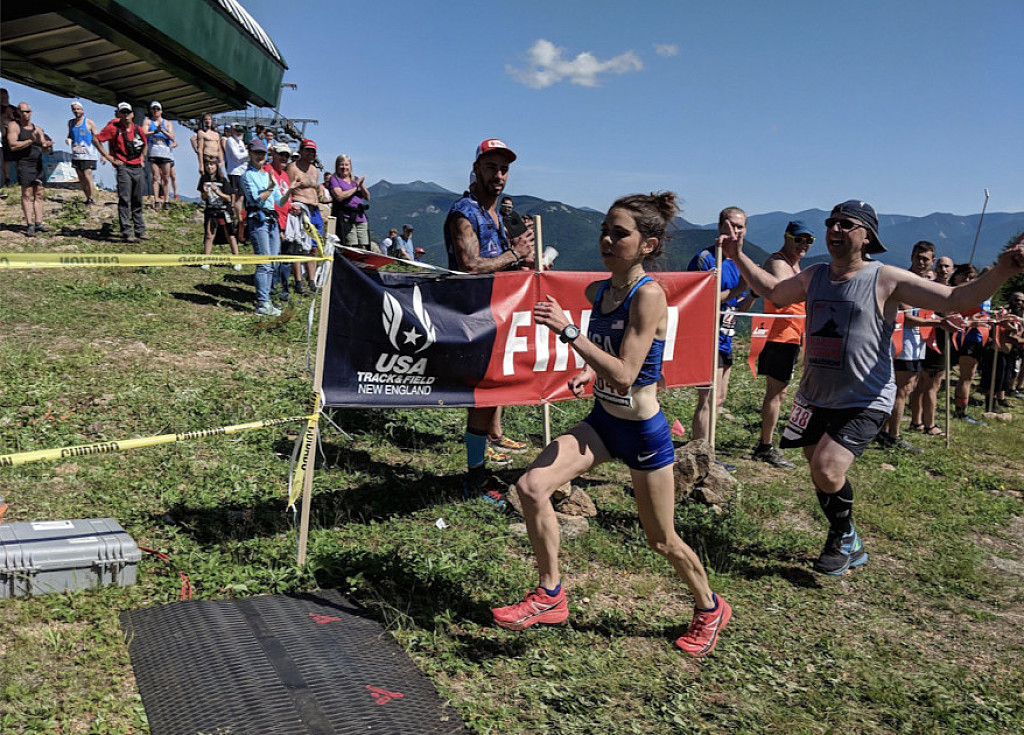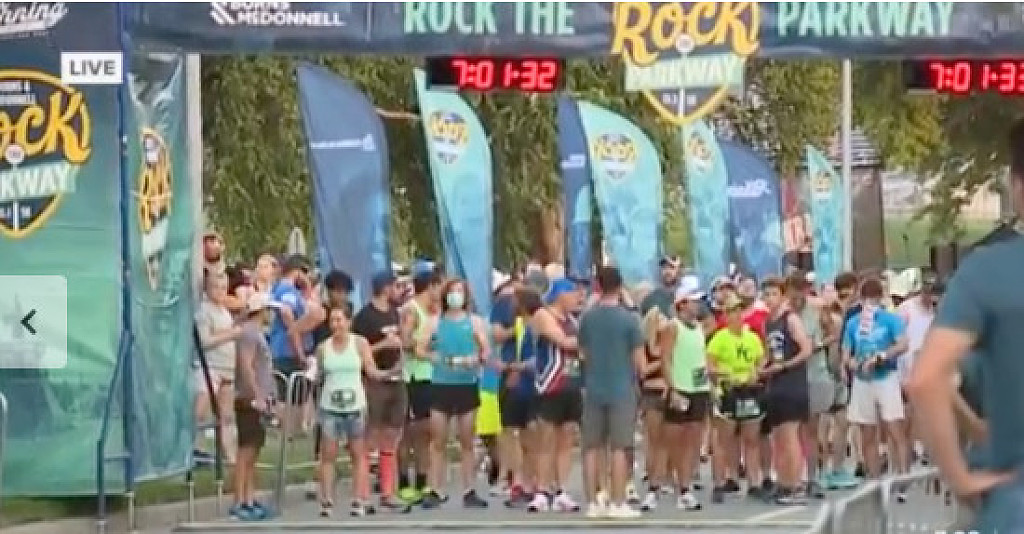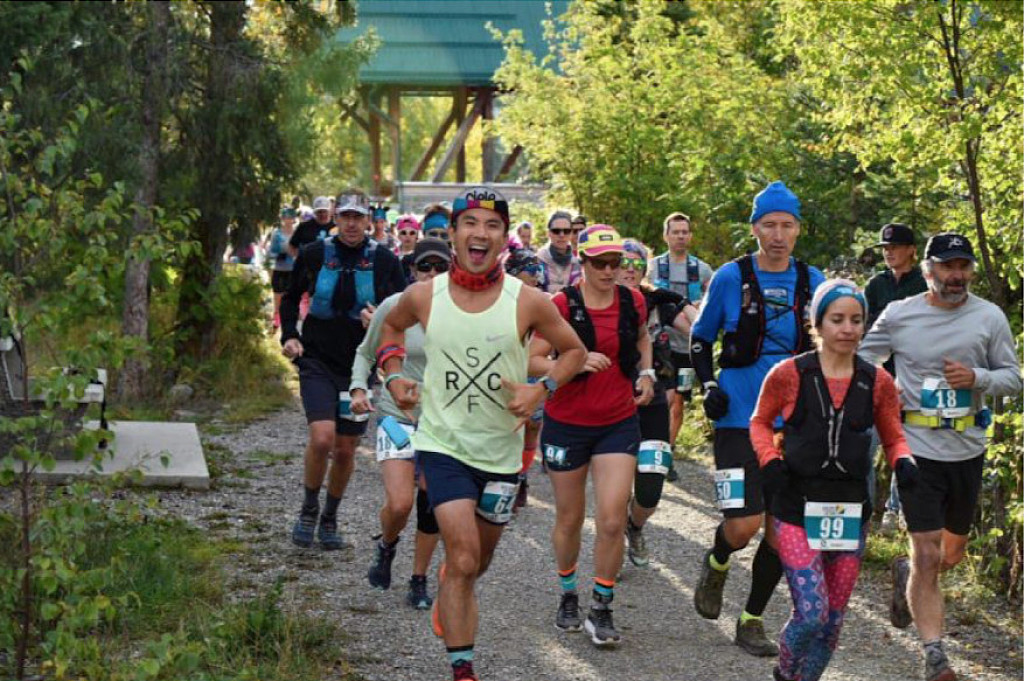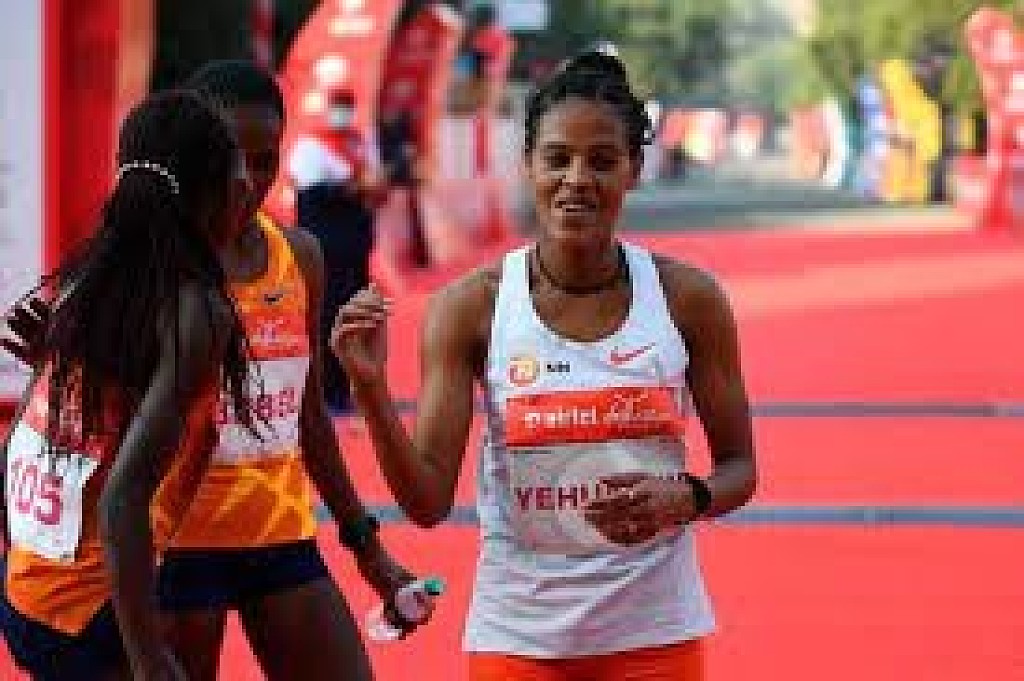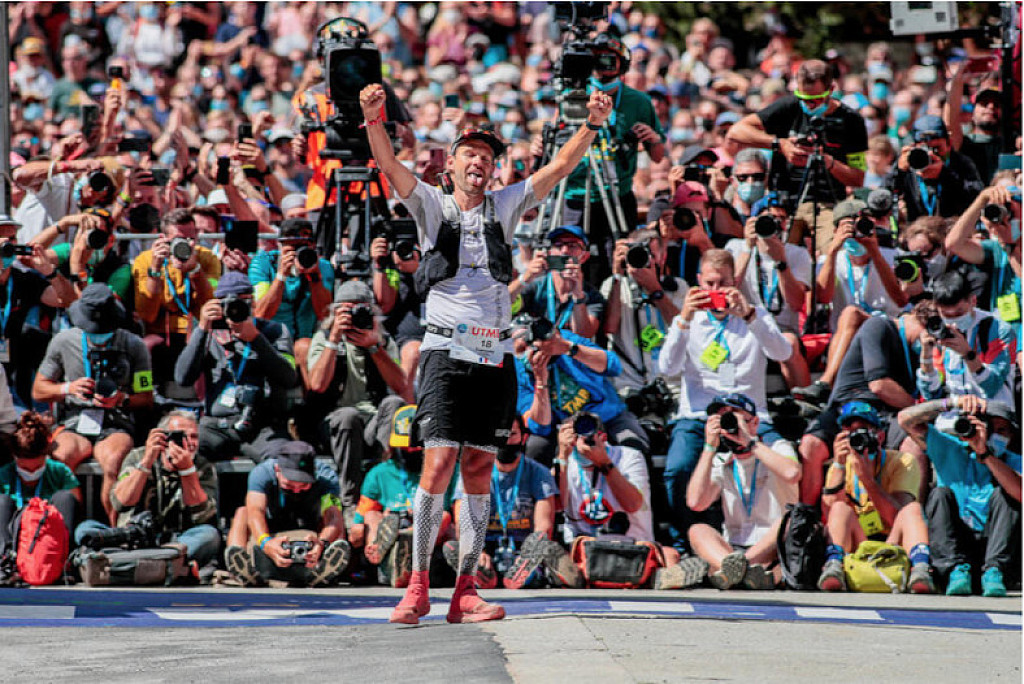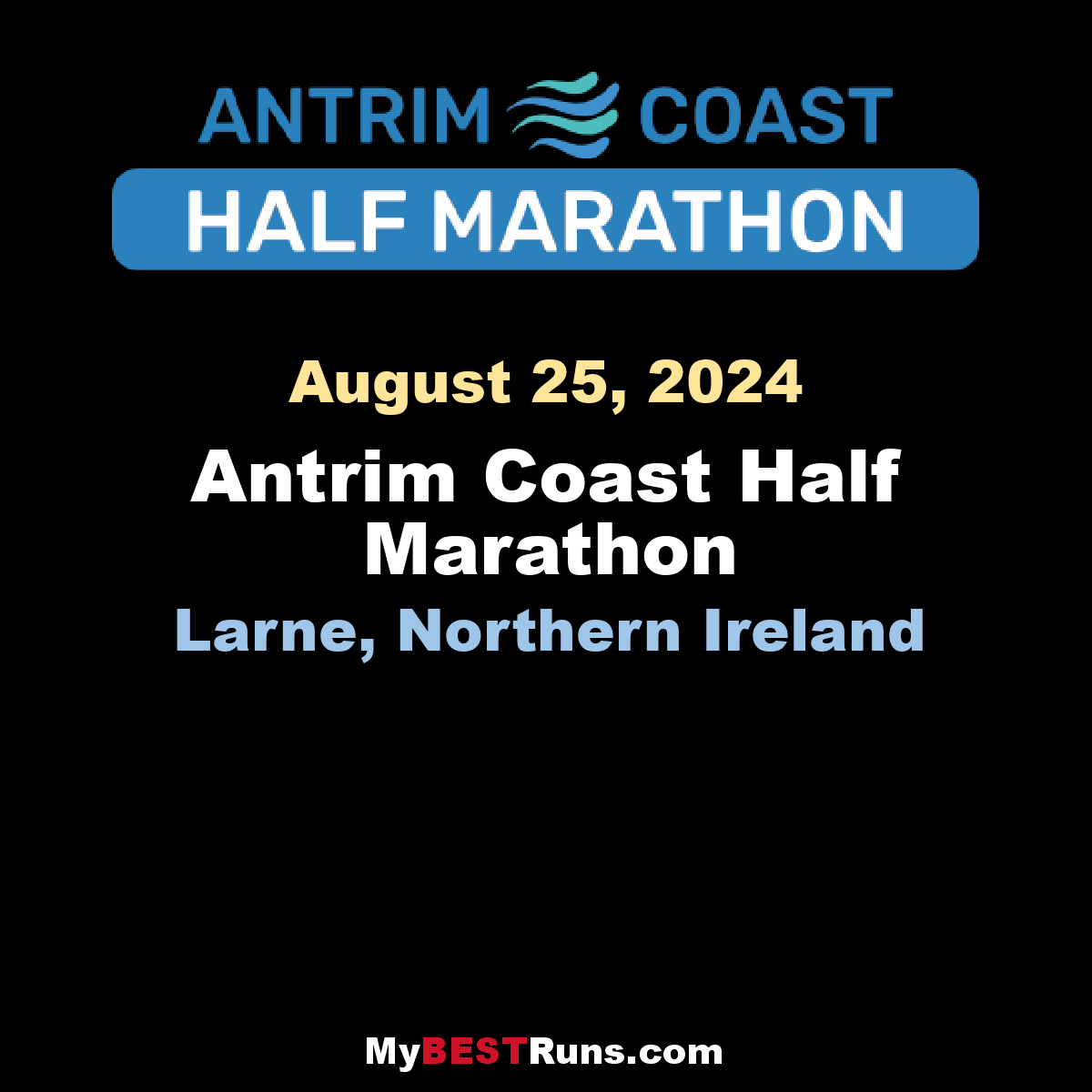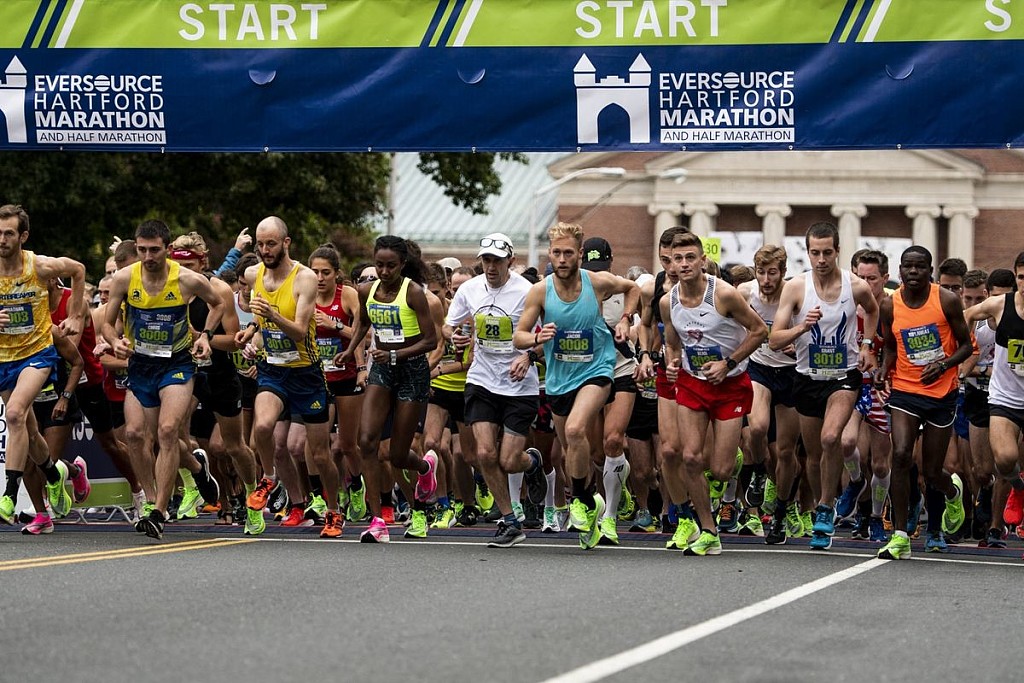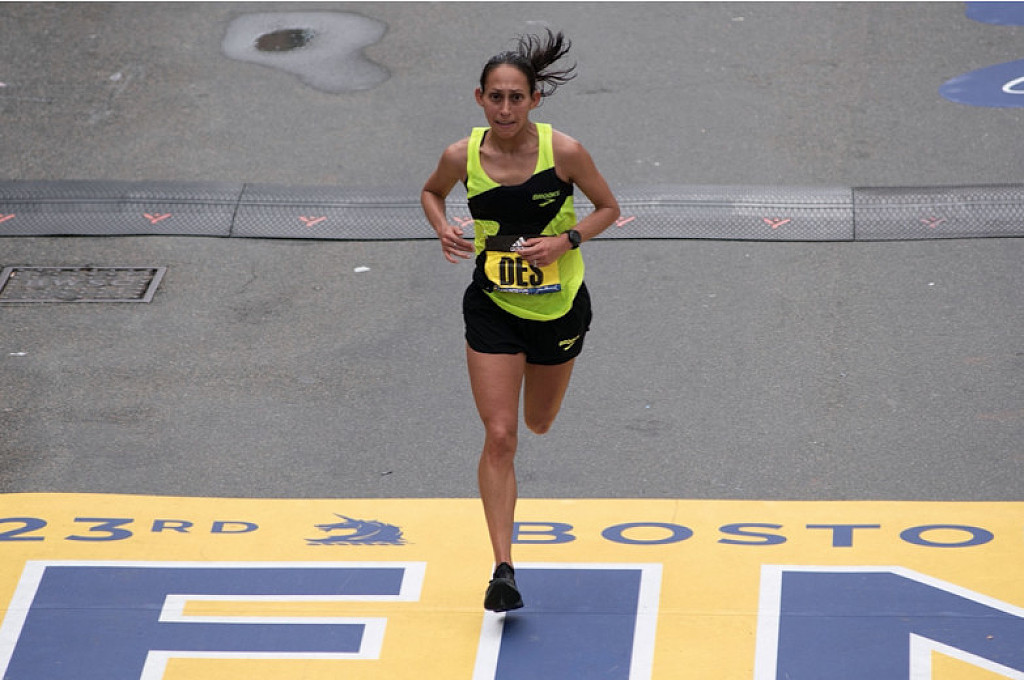Running News Daily
Running News Daily is edited by Bob Anderson. Send your news items to bob@mybestruns.com Advertising opportunities available. Train the Kenyan Way at KATA Kenya and Portugal owned and operated by Bob Anderson. Be sure to catch our movie A Long Run the movie KATA Running Camps and KATA Potato Farms - 31 now open in Kenya! https://kata.ke/
Index to Daily Posts · Sign Up For Updates · Run The World Feed
2021 Tokyo Marathon Cancelled Due to Extension of State of Emergency
With the government set to extend the state of emergency in Tokyo and other parts of the country, as of Sept. 6 it is all but certain that the Oct. 17 Tokyo Marathon will be cancelled.
The published guidelines for the 2021 race state, "In the event that a state of emergency has been issued one month prior to the event as part of the government's efforts against the coronavirus pandemic, or if the local government has issued a request not to hold the race, the Tokyo Marathon will be cancelled."
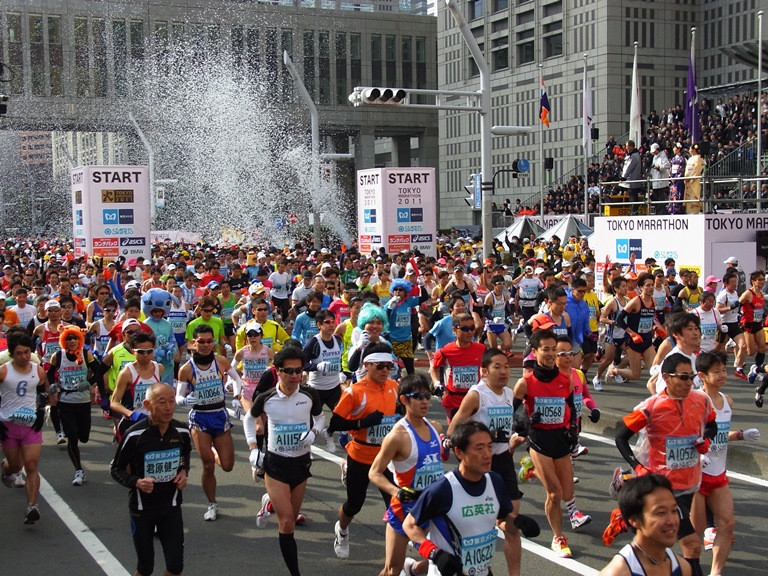
The current state of emergency in Tokyo runs through Sept. 12, but as it is expected to be extended 2~3 weeks it will still be in force on the 17th. This makes the chances that the Tokyo Marathon will go ahead virtually non-existent.
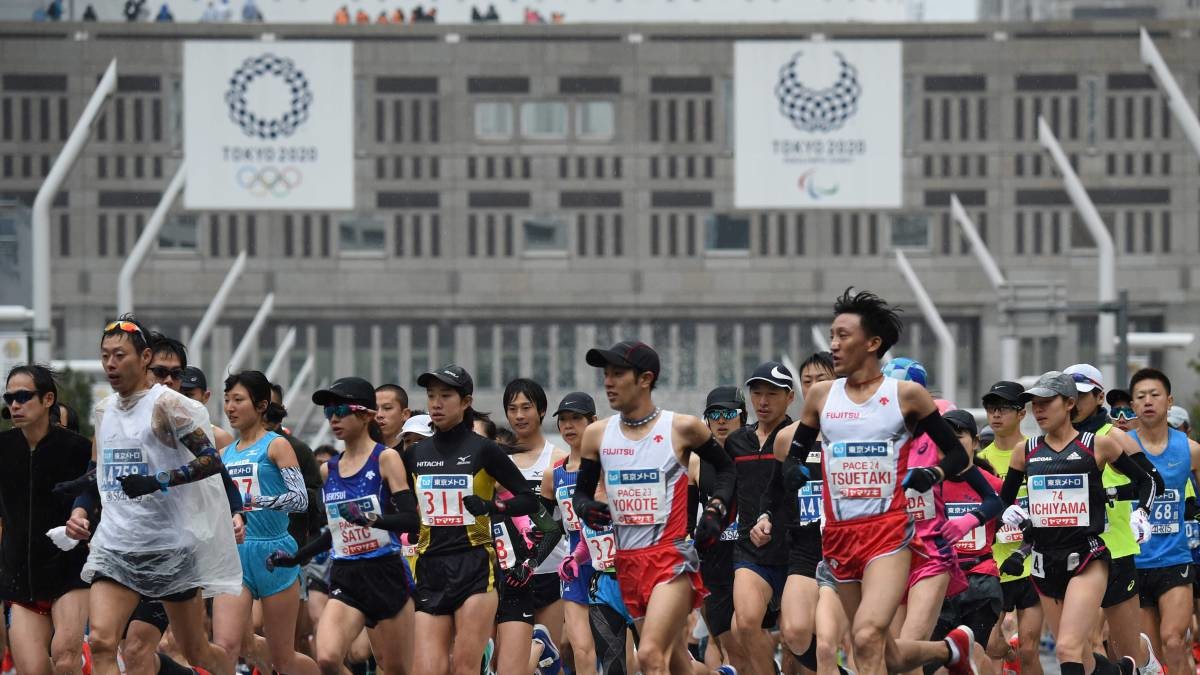
The event's organizers, the Tokyo Marathon Foundation, plan to hold a board meeting in mid-September to make a final decision.
The 2021 Tokyo Marathon was originally scheduled for Mar. 7, but in October last year in light of pandemic conditions the Foundation's board decided to postpone it to Oct. 17 this year.
In June this year event organizers announced that general division runners living outside Japan would not be permitted to run. The 2022 Tokyo Marathon is scheduled for Mar. 6.
(09/07/2021) ⚡AMPby Brett Larner
Tokyo Marathon
The Tokyo Marathon is a world-renowned annual marathon held in Tokyo, Japan. As one of the prestigious Abbott World Marathon Majors, it attracts elite and amateur runners from around the globe. The race holds World Athletics Platinum Label status, recognizing its high competitive standards, top-tier organization, and international appeal. Sponsored by Tokyo Metro, the Tokyo Marathon has grown into one...
more...Usain Bolt turned musician released his first album, Country Yutes, on September third
After Usain Bolt retired from track and field, fans everywhere wondered what the eight-time Olympic gold medalist would do next. Would he coach? Become a professional soccer player? Ride off into the sunset and enjoy retirement? Instead, he did what few people expected: he turned his focus to music.
Last Friday Bolt finally released his debut album, Country Yutes, giving his fans a chance to hear what he’s been up to over the last few years.

“If you have followed my career over the years, you would see me always dancing and listening to music,” Bolt said in a press release. “It’s no secret to the world that I love music. Music has just always been a part of my DNA.”
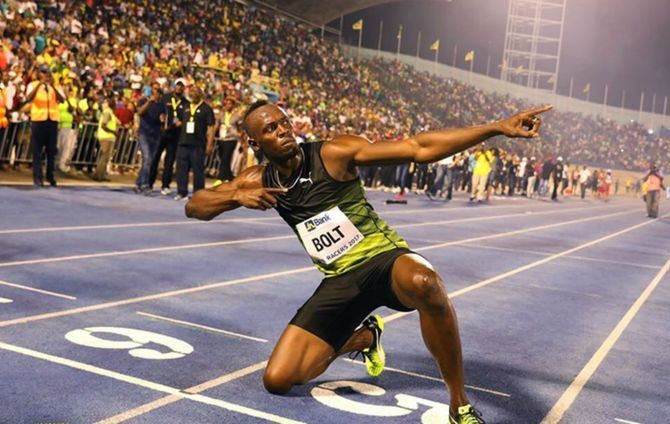
This is not the first time we’ve gotten a taste of Usain Bolt the musician. You may remember in 2019 he produced three dancehall EPs, Olympe Rosé Riddim, Immortal Riddim and Clockwork Riddim, which featured Jamaican artists. The first song on his new album, Living the Dream, which he produced with his close friend and vocalist, NJ Walker, was released earlier this year.
The rest of the album includes 14 tracks that feature Walker, along with Jamaican artists. You can stream Country Yutes on most streaming platforms, including Spotify and Apple Music.
(09/07/2021) ⚡AMPby Brittany Hambleton
Hiwot Gebrekidan and Kenenisa Bekele will lead powerful Ethiopian Challenge in Berlin
The BMW BERLIN-MARATHON will get underway on Sunday, September 26 with high quality elite fields headed by the Ethiopian superstar Kenenisa Bekele on his fourth appearance in Germany’s biggest and most spectacular marathon, while his compatriot Hiwot Gebrekidan will run in Berlin’s women’s field for the first time. Gebrekidan is currently the fastest female marathon runner in the world this year. The BMW BERLIN-MARATHON is part of the Abbott World Marathon Majors and a Platinum Label Road Race, awarded by World Athletics, the international governing body of athletics.
Kenenisa Bekele is 39 now and will be running the BMW BERLIN-MARATHON for the fourth time. He won the race in 2016 but dropped out the next year and returned in 2019 to triumph once again. In both victories the Ethiopian missed the then world record by a matter of seconds.
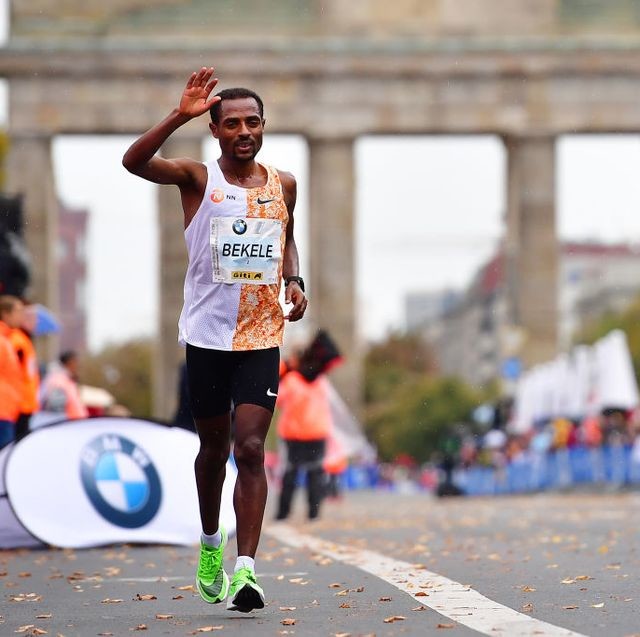
In terms of his achievements on the track and cross country, Kenenisa Bekele is the greatest long distance runner of all time. The multiple world record holder won the 5,000m at the 2008 Olympic Games as well as at the 2009 World Championships, took the 10,000m title at the Olympics in 2004 and 2008 as well as at the World Championships in 2003, 2005, 2007 and 2009. In addition, he has won eleven gold medals at the World Cross Country Championships.
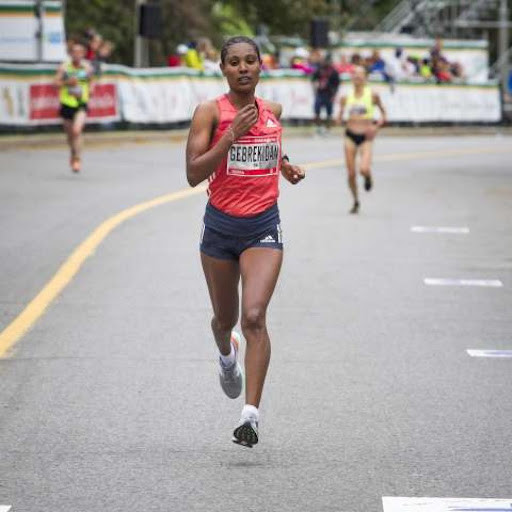
At the same time, Kenenisa Bekele’s marathon career has been by no means a smooth one. He has failed to finish three of his six races at the classic distance, including an attempt on the world record in Dubai in 2017 and Berlin later in the same year.
Yet on two occasions Kenenisa Bekele was able to convert his enormous potential to the marathon though there was still an element of disappointment attached, since he missed breaking the world record by a handful of seconds each time. In 2016 in Berlin he went within six seconds of the then global best, improving his own best to 2:03:03. Two years ago Bekele won again, this time running 2:01:41, two seconds outside the world record which his Kenyan rival Eliud Kipchoge had improved to 2:01:39 in the meantime. This achievement in 2019 means the Ethiopian is the second fastest marathon runner in history. It may well be that the BMW BERLIN-MARATHON on September 26 is his last chance to break the world record at the distance. “I’m looking forward to the race in the BMW BERLIN-MARATHON and all my training has been with this in mind. It’s gone well. I am doing everything to make sure my preparation is perfect,” said Kenenisa Bekele.
Ethiopia’s superstar will face two strong compatriots among his rivals. Guye Adola made an outstanding marathon debut in 2017 beside the River Spree with second place in 2:03:46. His time was record for a marathon debutant and Adola even put the eventual winner, Eliud Kipchoge, under pressure, leading the great Kenyan until shortly before 40 kilometres. Another Ethiopian who surprised many on his marathon debut is Olika Adugna. He will be running in Berlin on September 26 with a best of 2:06:15 from winning debut in Dubai in 2020.
The women’s field includes the fastest marathoner in the world this year, Ethiopia’s Hiwot Gebrekidan, who won the Milan Marathon in a personal best of 2:19:35 in April. Purity Rionoripo of Kenya (pb 2:20:39) and the Ethiopian Shure Demise (pb 2:20:59) should also be relied upon to offer strong challenges.
More information is available online at: Berlin-Marathon.com.
(09/07/2021) ⚡AMPBMW Berlin Marathon
The story of the BERLIN-MARATHON is a story of the development of road running. When the first BERLIN-MARATHON was started on 13th October 1974 on a minor road next to the stadium of the organisers‘ club SC Charlottenburg Berlin 286 athletes had entered. The first winners were runners from Berlin: Günter Hallas (2:44:53), who still runs the BERLIN-MARATHON today, and...
more...The Fargo Marathon ready to make return in late September
While last year's Fargo Marathon took place virtually, this year's iteration will make a return to in-person running.
Though the marathon usually takes place in May, it will start at 7:30 a.m., Saturday September 25th this year.
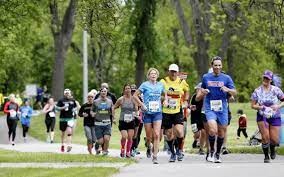
"Last year was virtual for obvious reasons. In a normal year, when we have our event in May, you know, we're typically around 15,000 people. This year, we're going to be down probably around 10," said Mark Knutson, executive director of the Fargo Marathon.
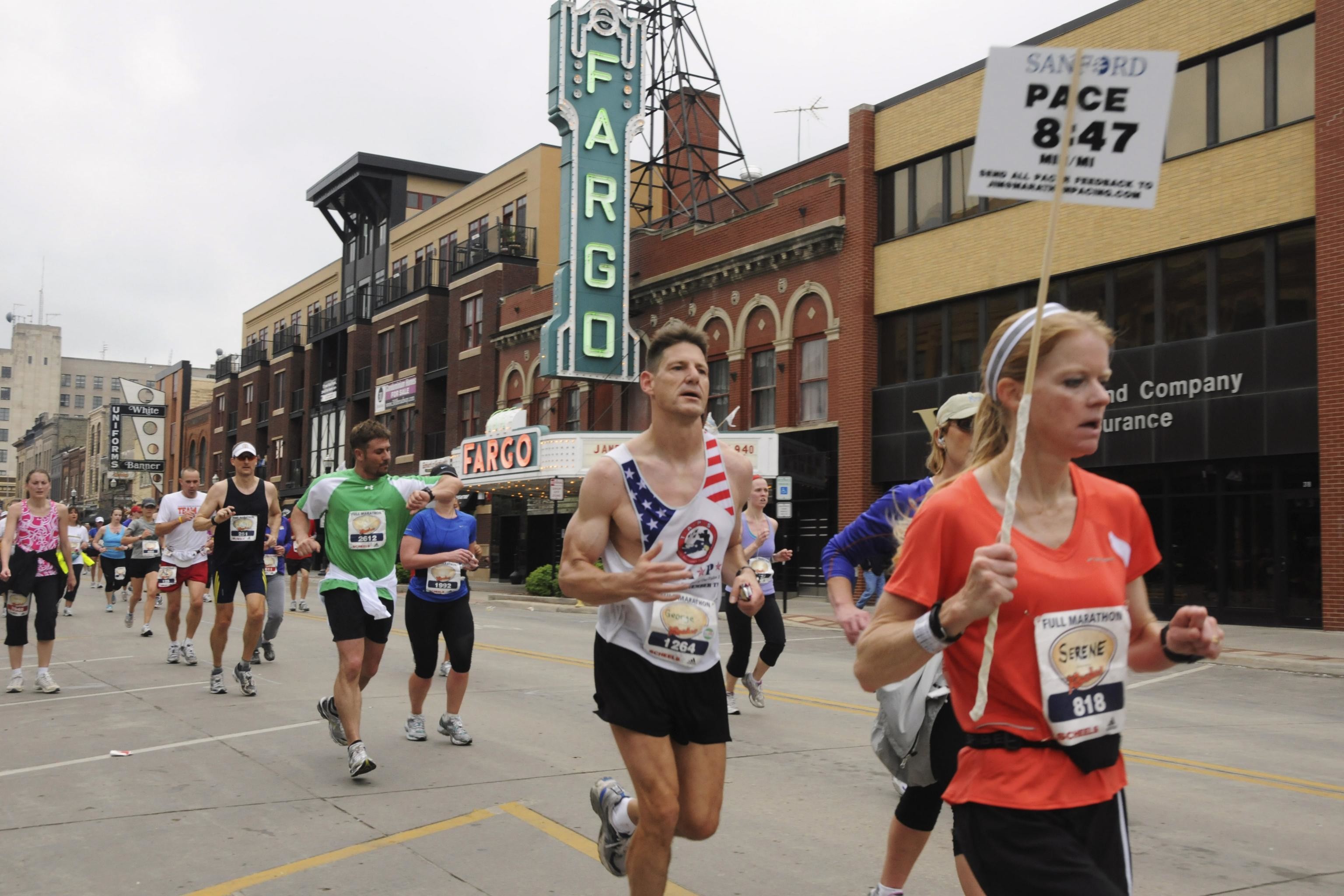
Knutson owed the dip in expected participants to it being held later in the year and the still-present pandemic.
However, he said, it will be great for the community to have it back.
"I think the community's pretty, pretty stoked about it. We send letters out to the people that live on the course and we have bands out there and we have parties and the buzz around town is that people are really excited to have this happening again," said Knutson.
Those still interested in signing up for the marathon can do so by visiting fargomarathon.com/schedule/.
(09/07/2021) ⚡AMPby Ben Morris
Fargo Marathon
The Fargo Marathon is a week full of events, The Fargo Marathon is bound to have something for everyone. From the Cyclothon, Furgo Dog Run, Largest Kid's Race, 5K Walk/Run, 10K, Half Marathon, Full Marathon and Relays, there is a distance for all! Start and Finish inside the Fargo Dome - ...
more...How To Avoid Stomach Cramps When Running
There is nothing worse than a rumbling stomach while you are out on a run. Whether you have a side stitch (side cramps) or feel the need to rush to the nearest porta-potty, stomach issues can really cramp your running style. Learn how to avoid stomach cramps when running with these tips.
Warm Up
A cramp in your side (side stitch) is—just like it sounds—a severe pain in your side body. It typically occurs right below the rib cage. It is not actually related to your stomach or digestive system. While the exact cause of side stitches is unknown, some theories suggest that it could be related to blood flow to the liver, spasms in the diaphragm, or stretching of the ligaments.
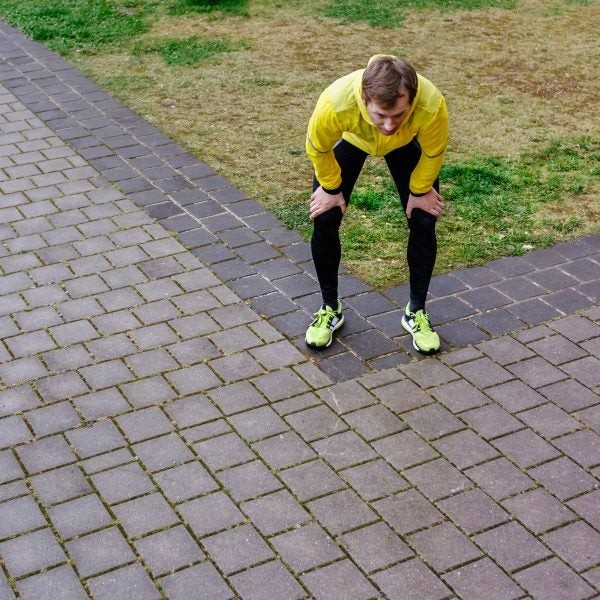
To prevent side stitches, warm up properly. This gives your body time to accommodate to faster breathing and adjust to stretching ligaments.
Hydrate

Do you skip drinking fluids during a run because you worry they will cause sloshing and cramping? It is time to adjust your strategy. This can lead to dehydration, which actually exacerbates stomach issues.
When you are exercising at an intense level, your body diverts blood away from the stomach in order to supply your muscles with much needed oxygenated blood. This means that digestion can be negatively affected.
Drink adequate fluids in the days leading up to your training session or race, and remember to drink throughout your run.
Practice Fueling
When you train for a long-distance race, you put in hours of running each week to gradually build your muscular and cardiorespiratory endurance. However, just like training your legs for those long runs, you also need to train your gut.
Often, newer athletes skip fueling during training but attempt to use a sports drink or gel during their first long race. The result? Stomach cramps, thanks to a belly that has never practiced processing fuel under such circumstances.
Luckily, the fix for this is easy. Simply practice your fueling strategy during training.
This will help teach your stomach how to process fuel under conditions of decreased digestive blood flow along with the jostling motion of running.
Do Not Over-Fuel
It can be tricky to nail down the correct amount of fuel to take in during a long run. But one thing is certain: trying to replace every calorie you burn is a recipe for disaster. Instead, aim to take in around 30 to 60 grams of carbohydrates (about 120 to 240 calories) per hour on runs lasting longer than one hour and 15 minutes.
If you are training for a long-course triathlon or ultra-marathon, you might bump that range up to 30 to 90 grams of carbohydrates per hour. As you start experimenting with fueling, start at the lower end of this range. If you feel like you need more energy, you can gradually work your way up to the higher end of the range on subsequent runs and see how your stomach tolerates this.
Minimize Fat
Fat is a satiating nutrient. It slows down digestion and helps us feel full longer. While this is great for everyday life, it is not ideal before a training session. You do not want to start running with a belly that is still feeling full and risk cramping. Low-fat, low-fiber breakfast ideas include:
Cereal with milk and a banana
Toaster waffle topped with peaches
Bagel with a small amount of cream cheese
Rice with a poached egg
Sandwich with a small amount of peanut butter, banana, and honey
The exception to this tip is if you are a fat-adapted athlete who is practicing the keto diet. In that case, you should follow your normal routine, as foods outside of that could cause stomach cramping. For most athletes, however, a standard moderate carbohydrate diet will lead to the best performance.
Know Your Lactose Tolerance
Lactose is sugar that is found in dairy products. Some people lack enough of the digestive enzyme known as lactase to properly break down this sugar. This is what is commonly known as lactose intolerance. If you have this condition, eating certain amounts of dairy can cause stomach cramping and diarrhea.
Interestingly, you can develop lactose intolerance later in life, even if you previously were able to tolerate dairy. Lactase production decreases over time for certain people based on genetic factors. For others, a gastrointestinal infection or inflammatory bowel disease may cause secondary lactose intolerance.
Digest Before Running
Most experts recommend eating a meal about one to four hours prior to running, though this is very individualized. Some runners have iron stomachs that allow them to eat a burger 30 minutes before a jog, while others might need two hours to process a small sandwich and some fruit.
If you often experience stomach cramps when running, try eating about three to four hours prior to your training session or event. Allowing more time between eating and running gives you more flexibility for the type and amount of food you can eat, as your body has ample time to digest.
Avoid NSAIDs
Ibuprofen and naproxen are NSAIDs (non-steroidal anti-inflammatory drugs). While some athletes might take these medications prior to or during a run to stave off any muscle soreness, this practice increases the risk of stomach upset and cramping.
In addition, overusing NSAIDs on long runs has been shown to increase the risk of hyponatremia (a dangerous diluting of blood sodium levels) and kidney damage, and could impair muscle recovery. It is wise to avoid these medications before or during a run unless a doctor has advised you to take them.
Rule Out Medical Conditions
In some cases, stomach cramps could indicate a food sensitivity or intolerance, irritable bowel syndrome, celiac disease, or another digestive complication. It is best to consult with a healthcare professional.
(09/06/2021) ⚡AMPby VeryWell Fit
Ethiopians Betesfa Getahun and Gelete Burka will be the fastest athletes on the start list for the Vienna City Marathon next Sunday
Strong Ethiopians will feature world-class personal bests of 2:05:28 and 2:20:45 respectively.
The 38th edition of Austria’s biggest road running event is the first major international marathon featuring a strong international elite field and a mass race since the start of the Corona pandemic. Including races at shorter distances a total of 25,000 athletes have registered for the event. 6,000 of them will run the marathon. The Vienna City Marathon is a World Athletics Marathon Label Road Race.

Betesfa Getahun heads the elite start list which includes ten runners who have personal bests of sub 2:10. The Ethiopian ran 2:05:28 in his debut marathon in Amsterdam two years ago. Returning to the Vienna City Marathon will be Switzerland’s record holder Tadesse Abraham, who was the runner-up here in 2019 with 2:07:24.

With a personal best of 2:06:40 Tadesse Abraham is among the fastest European marathon runners. Due to breathing problems he dropped out of the Olympic marathon in Sapporo (Japan) a month ago. While this was of course a major disappointment he then quickly decided to go for the Vienna City Marathon. “I am in form and I want to show it. I am really looking forward to Vienna as I have such great memories of this race,” he said.
The women’s field includes six runners with personal bests of sub 2:28. Gelete Burka is the fastest on the start list with 2:20:45. She achieved this time in Dubai in 2018 and then won the marathons in Ottawa (2018) and in Paris (2019). The women’s race will also feature the Swiss marathon record holder: Fabienne Schlumpf ran 2:26:14 in her debut in Bern earlier this year and then finished in a very strong 12th position at the Olympic marathon.
(09/06/2021) ⚡AMPby AIMS
Vienna City Marathon
More than 41,000 runners from over 110 nations take part in the Vienna City Marathon, cheered on by hundreds of thousands of spectators. From the start at UN City to the magnificent finish on the Heldenplatz, the excitement will never miss a beat. In recent years the Vienna City Marathon has succeeded in creating a unique position as a marathon...
more...Letsile Tebogo and Udodi Onwuzurike set the pace for Africa’s new generation of sprinters
Letsile Tebogo, Udodi Onwuzurike, Christine Mboma, Anthony Pasela, Imaobong Nse Uko and Benjamin Richardson are just some of Africa’s rising sprint stars, and their achievements this season could signal a revival for the continent.
When Tebogo opted to compete in the 100m and 200m, despite hailing from a country best known for its quarter-milers, it was with the aim of breaking barriers and inspiring a change in Botswana.
But the 18-year-old surpassed even his own expectations in Nairobi when he gifted his country its first ever global gold medal in the 100m, setting national U20 records of 10.22 and 10.11 in the process. His 10.11 clocking actually broke the senior national record, surpassing Makwala’s former mark of 10.20 set seven years ago.

“The motivation to get into athletics was from watching the big guys like Isaac Makwala, Karabo Sibanda and Nijel Amos,” said Tebogo. “However, I just really wanted some change in the country, so I had to do something different from the big guys, that’s why I opted to compete in the 100m and 200m. I’m really proud of my performance and I know back at home they’re proud of me bringing the first gold medal to Botswana.”
Tebogo led a 1-2 for Africa as Benjamin Richardson of South Africa took silver in 10.28 while Cuba’s Shainer Rengifo earned bronze with 10.32.
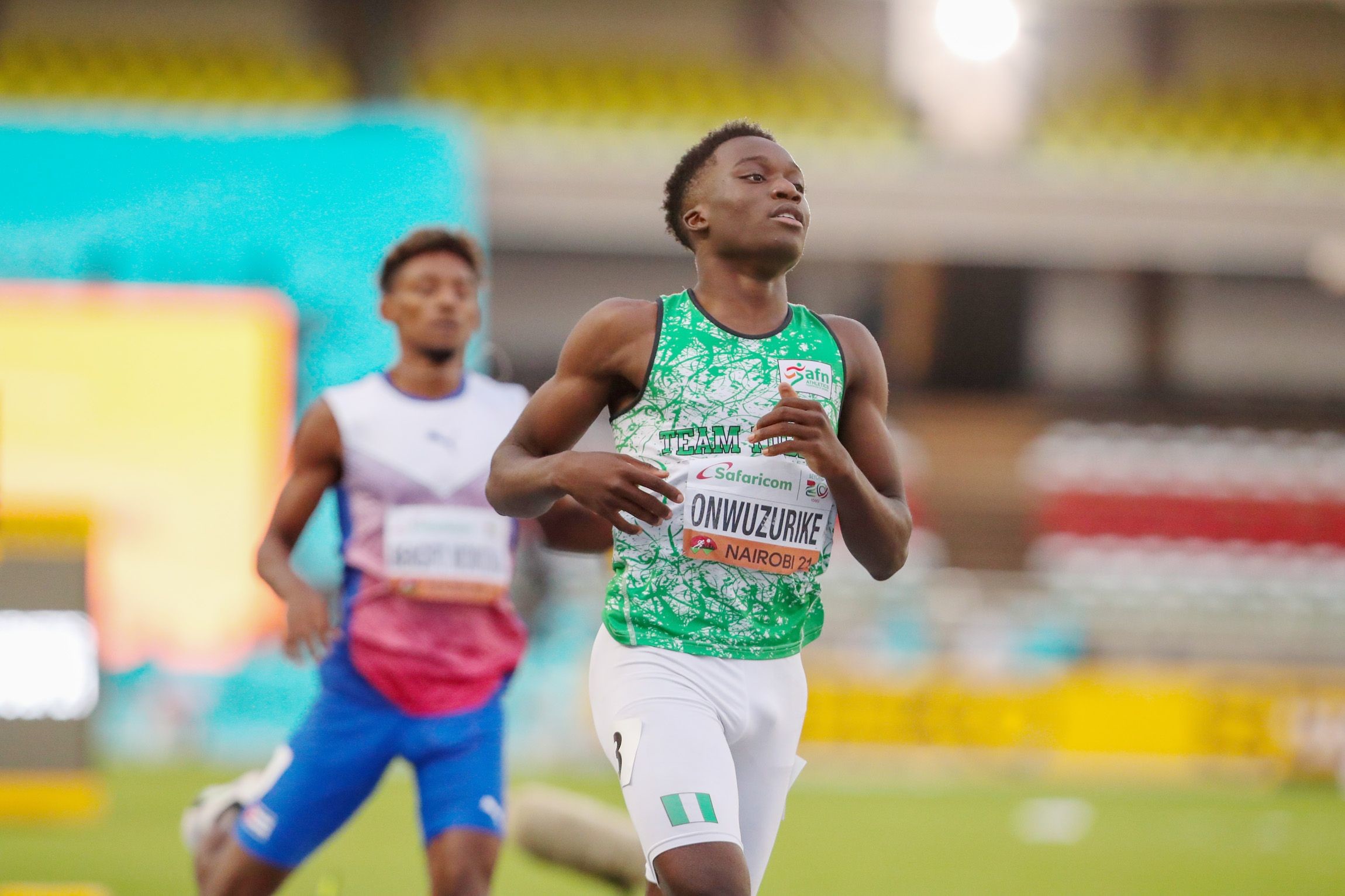
For Richardson, who would go on to anchor his country to Africa’s first ever gold in the men’s 4x100m in a world U20 record of 38.51, the podium finishes by Botswana and South Africa in the men’s 100m is the start of something big for the continent.
“We’ve started to become better,” he says. “Two Africans finishing first and second; you can see that there’s something coming. We’re going to dominate soon.”
Tebogo also competed in the 200m, which had been regarded as his stronger event. A sprint double was not to be, though, as he eventually took silver behind Nigeria’s Udodi Onwuzurike, who didn’t appear as a likely medal contender in the build-up to the championship.
Onwuzurike also started in track and field when he was about eight years old, and he grew up watching his brother Chiebuka, who is older by almost six years, compete in the 100m and 200m. The older Onwuzurike went as far as competing for Boston University and holds personal bests of 10.46 and 21.37. For the younger Onwuzurike, the dream was to take things a notch higher: become an NCAA champion, an Olympic champion and a world champion. And so began his quest.
At the World U20 Championships in Nairobi, Onwuzurike’s first ever outing for Nigeria, he lowered his personal best from 20.78 to 20.47 in his heat, and then clocked 20.13 in the semifinals which would have been a championship record but for the wind (2.4m/s).
He then stormed to gold with a national U20 record of 20.21 to become the first Nigerian in World U20 Championships history to win 200m gold since 1996 when Francis Obikwelu won the sprint double, and the second fastest Nigerian over the distance in 2021. South Africa’s Sinesipho Dambile clocked a season’s best of 20.48 for bronze, completing the African sweep.
Though stung by his loss to Onwuzurike, Tebogo said that the overall 200m result was a good one for Africa. “I’m really proud and excited about this,” he said. “It (an African sweep) was my dream. Even in the call room I told Dambile ‘Bro we have to do this. We have to bring the medals back home’. I felt it should be a 1-2 or 2-3, but maybe the Nigerian overheard us and that’s why he came to beat us,” he added with a chuckle.
For Onwuzurike, who is off to Stanford University soon, making history for Nigeria and Africa is a dream come true.
“I would say it’s surreal, it’s amazing,” he said. “I never thought I would be able to make it to this level of track, I never even knew I would be able to go to college running track. Track was always first like a fun sport because I’ve always been a little quick but it’s amazing. Having this as one of my last high school races before I go to college, it’s an amazing moment.
“I had a very rough year and got injured numerous times and felt my numbers were not really good at showing what I’m capable of, so coming out and being able to show on the global stage that I’m truly the best is amazing. It’s all I ever wanted, all I ever prayed for.”
(09/06/2021) ⚡AMPby World Athletics
Fraser-Pryce wins women's 100m at Kamila Skolimowska Memorial in meeting record 10.81 with De Grasse cruising home in the men's 200m
Shelly-Ann Fraser Pryce and Andre De Grasse scored comfortable wins at the Kamila Skolimowska Memorial meet in Chorzow, Poland on Sunday (September 5).
Fraser-Pryce, who missed the last Diamond League women's 100m in Paris at the end of August after withdrawing with fatigue, looked back on form at the World Continental Gold event as she set a meeting record of 10.81 to take the 100m, breaking 11 seconds for the 12th time this season.
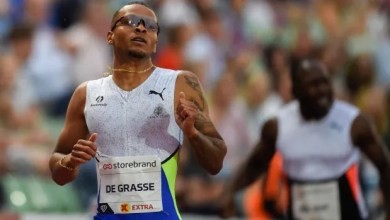
Swiss sprinter Mujinga Kambundji was second in 11.08 ahead of Britain's Daryll Neita who ran 11.15.
The 34-year-old looks set for an exciting rematch with Olympic champion Elaine Thompson-Herah in the Zurich Diamond League Final on Thursday.

Tokyo 2020 200m gold medalist De Grasse was an easy winner of the half-lap event, coming off the bend strongly to cross the line in front in 20.21.
Fellow Canadian Jerome Blake was second in 20.32 with Italy's sprint relay hero Filippo Tortu third in 20.40.
As befits the competition held in memory of the Sydney 2000 hammer gold medallist, field events played a big part in the Continental Tour Gold meeting.
The top three in the men's hammer in Tokyo filled the top three places in Chorzow but in different places.
Reigning four-time hammer world champion Pawel Fajdek won home bragging rights with a fine final throw to beat Wojciech Nowicki.
The Olympic gold medallist led with 77.45m, but Fajdek went out to 79.60m to take victory after his bronze in Japan.
Norway's Eivind Henriksen (77.38m) was third after his Tokyo silver.
Double Olympic champion Ryan Crouser took his unbeaten run to 25 contests with victory in the shot put.
The American was not at his brilliant best but 22.39m in round two was enough to take victory with compatriot Joe Kovacs (22.00m) and New Zealand's Tom Walsh (21.68m) second and third just as they were in Tokyo.
World record holder Crouser suffered his last defeat at the 2019 Doha World Championships.
Olympic silver medallist Chris Nilsen kept up his strong recent form with 5.86m to take victory in the men's pole vault.
Fellow American KC Lightfoot took second on countback ahead of EJ Obiena of the Philippines with both men clearing 5.80m.
Reigning world champion Sam Kendricks was only sixth with a best clearance of 5.70m.
Gianmarco Tamberi won the high jump with a third-time success at 2.30m.
The Italian then failed with two attempts at 2.36m which would have broken the meet record held by joint-Olympic gold medallist Mutaz Essa Barshim.
(09/06/2021) ⚡AMP10 Of The Worst Training Tips You Hear In Running
Bad Tip One: Your body needs to look a certain way or weigh a certain amount.Being an athlete is all about finding your strong. Every runner that has long-term growth and success fuels their body adequately. For some athletes, that leads to complying with that formula espoused by Mr. Crap-Face. For other athletes, it means a body that looks different and weighs more or less. All are equally valid. And here's the biggest point of all: all are optimizing what they are capable of given their unique genetics and backgrounds.
The problem is that a formula might be interpolated from an outlier, a person that won an Olympic medal or Western States. Interpolating from outliers is crap science, and it's crap physiology. Athletes that try to fight against their unique genetics and backgrounds will not adapt to training stimuli efficiently, and will almost always get slower with time. That time might not be tomorrow, but trying to fit into someone else's clothes or onto their scale is a ticking time bomb for athletic growth.
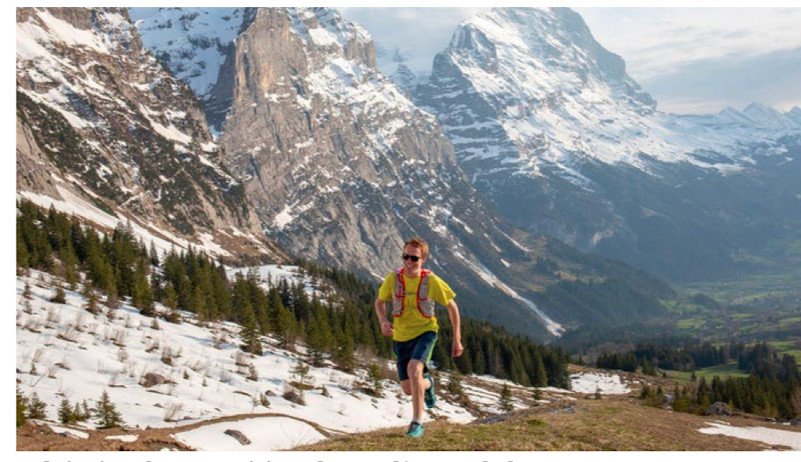
Three years ago, the New Zealand rowing team had a reckoning. A survey indicated that all but one athlete was at risk of low energy availability. Doctors, nutritionists, and coaches worked with athletes to change the culture and approach to fueling. Rower Brooke Donoghue summarized the wisdom that they applied leading up to the Olympics: "Now I understand being lean isn't a priority, being strong is," she said. "It doesn't matter what I sit at on the scales. It's opened us up to understand it's not about a number but more about a good feeling, knowing we're fuelling well."
In Tokyo, Donoghue won a silver medal, and the whole team had breakthrough successes. Low energy availability from a focus on body weight can hurt the endocrine system and overall health. The New Zealand rowing team learned something else. Eating enough can fuel better performance, recovery, and adaptation. Food can act as a natural, legal, fun PED.
Move, eat, love, repeat. You found your strong. And your strong is perfect.
Bad Tip Two: Easy runs need to be at a certain heart rate all the time.
The body does not work in cordoned-off physiological zones, where exceeding aerobic threshold is a crime scene for athletic growth. When you feel good, your easy runs can be a bit faster. When you feel tired or are not recovering rapidly, your easy runs can put snails to shame. The art and science of easy running require that an athlete listens to their body, not to a calculator.
This tip is grounded in the truth that easy runs can be very easy, and often should be very easy. The aerobic system should be built from the ground up. Just make sure that focusing on the aerobic system doesn't neglect the musculoskeletal, biomechanical, and neuromuscular systems. You have to go faster to get faster, in moderation.
Bad Tip Three: To be a pro, you have to do doubles/100 miles a week/complicated workouts
This is the general catch-all heading for tips that you might hear from an elite athlete talking about their own training. The problem is that all of these tips are overwhelmed by confounding variables, and sometimes people get the lines of causation mixed up. Doubles are an important feature of some pro athlete training, but also coincide with athletes that have the time and physiology to handle them. High-volume weeks can be a proxy variable for stress and adaptation, but the cells don't give a single frick about a week, and only care about a mile in association with the chemical context that goes along with it (we went into detail on our podcast here). Big double-threshold workouts or supercompensation hill sessions could help growth, but are also just a part of training for athletes that are tough as nails and have big dreams.
Successful athletes can likely be successful using multiple approaches, but we can't prove a negative. So we are left adding up a bunch of N=1 experiments. Don't feel obligated to mimic the specific approach that works for someone else. General principles are your friend (doubles/100-mile weeks = consistent and frequent chronic stress, workout design = efficient and strategic acute stress). Specific rules can just be dogma.
Bad Tip Four: It's all about time on feet.
This tip is mostly for the ultra crowd. Time on feet may be helpful if it involves moving efficiently on trails, including hiking, with plenty of time for recovery and adaptation. But there is no evidence and little physiological theory that chronic weekly totals of dozens of hours on feet will help an athlete move more efficiently (or be healthier). While that stuff may work for some people, you can be fast and healthy by spending time in the morning doing your activity, then living your life normally (periodically mixing in some bigger acute stresses along the way), even when training for races that take 12-24+ hours.
Bad Tip Five: The more training volume and/or vert, the better.
Connected to the last two points, volume and vert totals are proxy variables for stress. But they are not actual stress as experienced by the cells and body systems that drive performance. A 10-mile run might just be a 10-mile run. Or it might act a bit like a 20-mile run if you've been up all night with a kid, are dealing with a mental health lull, or are preparing a work presentation. One of the hardests things to internalize for an athlete is that the body can actually adapt to the lower volume just as well as higher volume as long as stress is calibrated appropriately for their unique context.
The body doesn't know miles, it knows stress. And more stress is not always better, particularly when some champions are specifically chosen due to being genetic anomalies when it comes to managing chronic training stress.
Bad Tip Six: You should hike a hill in training if you'd hike it in racing
Specificity is important sometimes, just don't go overboard with it. I see so many athletes sell themselves short by hiking every uphill because they read that tip in an ultra running article, or heard it from a friend. The problem is that it's very hard to level up if your brain is constraining you in advance of your body saying it needs constraints.
If you hike all of the time, that is awesome and valid. But if you are healthy enough to run, try to run a couple steps more on your next run. It can be so freaking exciting to see where this athletic journey goes when we take off the constraints that were holding us back.
Bad Tip Seven: You can always get all of the nutrition you need from food and sunlight
Maybe you can! But through coaching and research, my wife/co-coach Megan and I see a lot of bloodwork, and there are many athletes that can't. Pay special attention to ferritin and vitamin D. Sometimes, leafy greens and UV rays don't cut it, and that's OK. If you're unsure, get blood tests from your doctor or a company like Inside Tracker.
Bad Tip Eight: You can't lose fitness in a taper
True, your aerobic system won't undergo a fundamental remodeling in a couple weeks. But blood volume, VO2 max, cardiac output, and neuromuscular efficiency all can detrain rather quickly. It's important to rest more, but don't shut down like you're a bear in November. Most of our athletes maintain their normal frequency at 30-50% lower training volume, with a rest day or two more for ultras, plus a bit of intensity too.
Bonus Tip: Minimal shoes are better for health and/or performance
I don't think people say this piece of advice anymore, but it's worth addressing just in case someone went into a coma after reading Born To Run. First, to that coma person, did you like The Apprentice? You won't now.
Second, for the love of all that is good in this world, wear shoes that are comfortable for you, not shoes that are comfortable for someone who may or may not have a functioning achilles tendon in a few years. Different things work for everyone.
Bad Tip Nine: Death before DNF
Running is not a test, it's a celebration.
As Dani Rojas said in Ted Lasso, "[The sports psychologist] helped me remember that even though futbol is life, futbol is also death. And that futbol is futbol too. But mostly that futbol is life!"
(09/05/2021) ⚡AMPThis Lithuanian Runner Broke the 24-Hour World Record that Stood Since 1997
The Lithuanian runner averaged a 7:29/mile pace for a full day.
Sania Sorokin has claimed another world best in 2021, breaking the 24-hour record set by legendary Greek ultrarunner Yiannis Kouros in 1997.
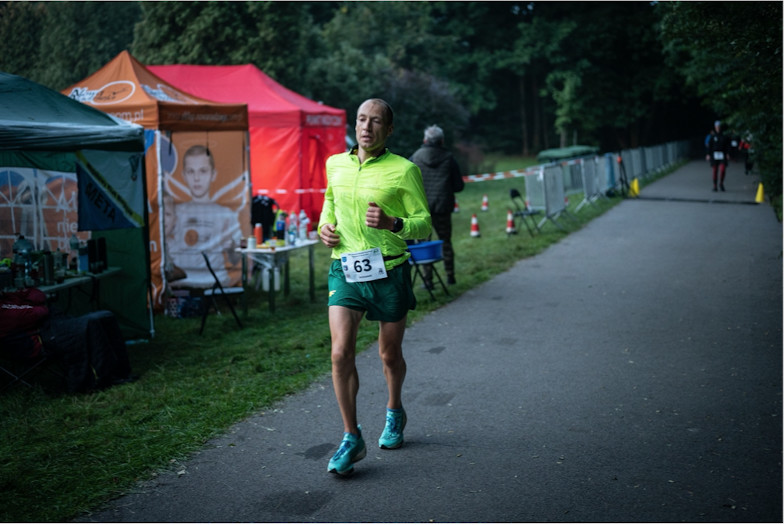
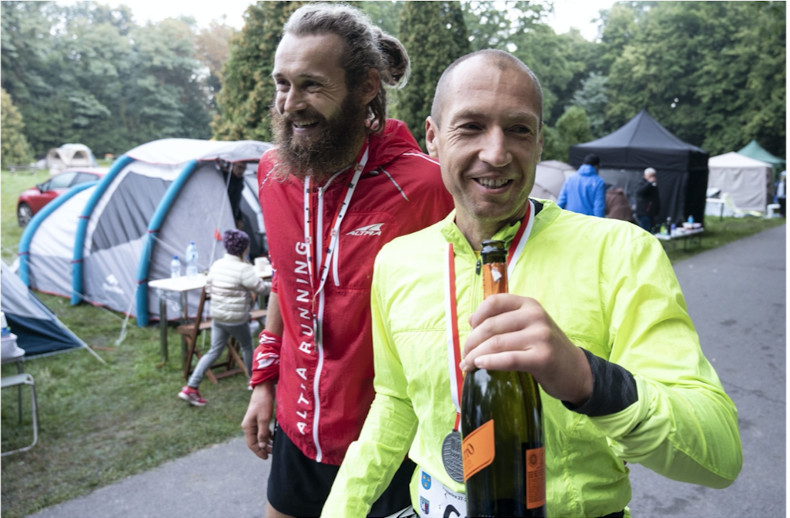
Kouros’s mark (303.4 kilometers or 188.52 miles for a 7:38/mile pace) remained elusive until August 30, when Sorokin lined up at the UltraPark Weekend 24-hour race in Poland. The 39-year-old Lithuanian runner averaged a 7:29-per-mile pace for the entire day on his way into the history books. His official distance was marked at 309.4 kilometers (192.25 miles).
“[The world record] was my dream for about five years,” Sorokin told Runner’s World. “It was an almost perfect race, but I know I can do better.”
Though unsponsored, Sorokin is no stranger to high-level performances such as this. His accolades include three 24-hour world championships since 2015, winning the famed Spartathlon ultra in 2017, and breaking the 100-mile and 12-hour world records in April this year.
His initial plan after his April success was to go for the 24-hour world record at the 2021 World Championships in October. However, the race was canceled in June due to the pandemic, so Sorokin chose the UltraPark Weekend 24-hour race in nearby Poland to go for his record attempt.
“Poland is not far from me,” Sorokin said. “This is a very high standard race, Poland has very strong ultrarunners, and the track is very good. I thought it was good to go for the 24-hour world record.”
In preparation for a record run, Sorokin increased his mileage for this training block. His weeks ranged from 142 miles at their lowest to 173 at his peak. He included speed work, while also doing cross-training, such as weightlifting, cycling, and swimming.
Sorokin lost his job as a dealer at a casino in January because of the pandemic, so he’s had more time to “train like a pro.” He credits this for his success and why he showed up in peak form to his record run.
Though he was on pace for the entire run, he did run into issues during the night.
“The conditions, the weather, the track, the organization, everything was perfect,” Sorokin said. “There was some crisis at night with my stomach. It stopped working well for a few hours, but then began to work again, and I really didn’t know if the record was to be or not to be until 21 hours of running.”
In those final three hours, Sorokin routinely crunched the numbers in his head. Finally, with 40 minutes remaining, he reached the 300-kilometer mark. Two more laps would give him the record. He did that and then some, breaking the world record by six kilometers.
Since breaking the record, Sorokin returned to Lithuania and has been inundated with interview requests. He has a couple ideas for what he wants to do next, but he said his focus right now is finding a sponsor for 2022.
“I need to find a sponsorship for next year because soon I need to be back to work,” Sorokin said. “I am in peak form, so I feel like I can still do better. I don’t exactly know what’s next for me. Maybe the 48-hour record.”
That record currently stands at 473.49 kilometers (294.21 miles), or put simply, a 9:47/mile pace for two days straight. It was set in 1996 by Kouros.
(09/05/2021) ⚡AMPby Runner’s World
3 Ways You Can Overcome Bad Runs
How you can look on the bright side of a poor outing and find motivation to keep going.
It’s entirely too easy for people to criticize their own performance, and harder to be kind to themselves when they don’t have the race or run they’d hoped for. As the saying goes, we’re our own worst critics.
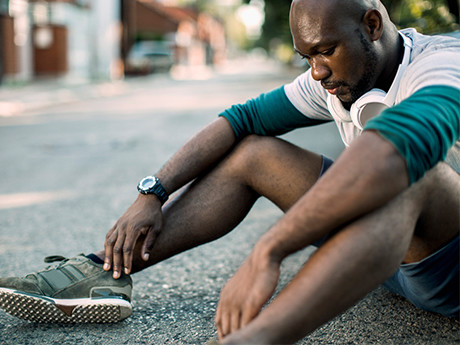
Even when we do well, we sometimes tell ourselves it wasn’t the training plan that we dedicated months of our lives to following; it was luck. As runners—and humans—it can be hard to believe we’re deserving of success. And when we have that “off” run, we often default, unfortunately, to beating ourselves up over the fact that we could have worked harder.
Over time, being too harsh on yourself can lead to lack of motivation, burnout, and even feeling resentful toward other runners. Here are three tips to help you become more compassionate with yourself, stay motivated, and ultimately be your own best teammate.
→ Use positive self-talk
Credit yourself with the work you put into your training and your successes along the way! Remind yourself whenever you’re feeling down: “I trained for weeks. I put in all this work and was consistent, and I’m stronger and faster than I was four months ago.” On race day, we tend to lose sight of the hours spent in training. While you’re getting dressed or warming up, visualize your larger body of work and the progress you’ve made—the actual event is just a small part of that.
You can also utilize technology, like your morning alarm, to engage in positive self-talk. I label my phone alarm for a morning long run with a motivational mini message that helps me start my day. The more you do this, the more natural it will become to believe these positive affirmations.
→ Reframe your thoughts
Let’s say you ran a “bad” race, but friends and family were cheering you on from the sidelines. Instead of dwelling on your results, try shifting your thinking to: “These people saw me push myself, and they couldn’t care less about my time.” I have a 1-year-old and a wife, and anytime I don’t reach the time I wanted, I think about how I have their support and that they’re cheering for me no matter what.
→ See a sports psychologist
If you find you can’t stop the cycle of self-criticism, you risk falling out of love with running—and yourself. Learning to grow a sense of joy not only will help you show up to your training runs, it can strip away the negative competitiveness and restore the fun that initially drew you to running.
Additionally, being overly self-critical can hurt your relationship with your running community. If you’re injured, you may look in a negative light at people who are running healthy. Or you might begin to resent those who reached a race goal when you didn’t. You can burn yourself out when you direct your energy toward running against people as opposed to with them.
When your running partners or coach aren’t enough to help you break these patterns and pick yourself back up, a sports psychologist can provide impartial feedback, with specific attention to your emotional and mental well-being, in ways someone who is close to you and your training might not be able to.
Practicing positive self-talk will help you become your own best teammate and put you on the path to being kind to yourself—and becoming a better runner along the way.
(09/05/2021) ⚡AMPCourtney Dauwalter Smashed the Women’s Record at UTMB and Knocked Over 2 Hours Off Her Previous Best
In her second appearance at the French race, she knocked over two hours off her previous best and placed 7th overall.
Courtney Dauwalter returned to the 106-mile Ultra-Trail du Mont-Blanc (UTMB) to defend her 2019 crown and did not disappoint in her second appearance in Chamonix, France.
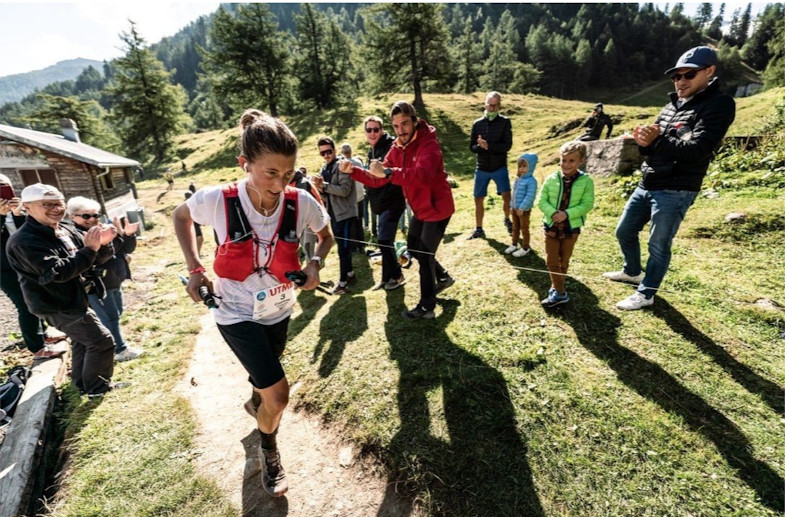
The 36-year-old from Golden, Colorado, led wire to wire in the women’s race, running into only a few minor issues along the way to set a new course record in 22:30:54 and finish seventh overall.
“It was an incredible experience again, and we were so excited to be back, immersed in that community,” Dauwalter told Runner’s World. “I didn’t know what to expect from the race, but I knew that I was lining up healthy and physically and mentally as ready as I could be.”
UTMB was a redemption race for Dauwalter, who was forced to drop out at mile 62 of the Hardrock 100 in July because of stomach issues.
Since then, Dauwalter said she has been tweaking her fueling strategy with her husband and crew chief, Kevin Schmidt. With solid foods causing issues at a certain point, she found that she should take in liquids only.
What happened at Hardrock turned out to be a blessing for her second time through the Alps. Similar problems arose around mile 50 at the Courmayeur aid station. Dauwalter was well ahead with only Mimmi Kotka of Sweden near her, but solid food wasn’t going down. Though she initially planned to switch to liquids only at mile 70, she and Schmidt opted to make the change earlier.
This meant Dauwalter relied on drinking a lot at aid stations and only fueling with the single liter she carried with her between aid stations.
“Climbing out of Courmayeur and coming to the top, I lost my lunch a little bit,” Dauwalter said. “But once it happened, it never happened again and I felt fine. I don’t know if my body was rejecting the fluids I put into it, but it ended up not being a big deal.”
Dauwalter then opened up a massive lead in the women’s race, picking off male competitors one by one. She said there were still low points in the latter part of the race—her legs felt shredded with each climb—but in those moments, she turned to her old friend, the iPod Shuffle.

“It literally has just the play button,” Dauwalter said. “It’s the best. Helps occupy my brain space with upbeat music. It basically has a playlist that started in 2010 and has just been added to since. So an eclectic mix of country music, Michael Jackson, Prince, some early 2010s pop and rap, and Taylor Swift.”
Dauwalter led the women’s race by over an hour as she made the final climb out of Vallorcine at mile 93 and descended back into Chamonix. Dauwalter found herself overjoyed upon seeing the mass of spectators welcoming her back into town.
As she ran through the streets and across the line, Dauwalter said she had no idea her time of 22:30:54 had set a new course record. Her time bested fellow American Rory Bosio, who set the previous record in 2013 (22:37:26) on a course that was three kilometers shorter.
“I feel very happy to have made the entire loop,” Dauwalter said. “After DNFing Hardrock, I wanted to finish UTMB no matter what it took. I’m grateful to my legs, my body, and Kevin and I were able to make the whole 100-mile adventure together. It’ll make for another great memory.”
Not only did Dauwalter make history with her time, she also finished seventh overall in the race. The rest of the women’s podium rounded out with French runner Camille Bruyas taking second (24:09:42) and Kotkas taking third (25:08:29). You can find the full results here.
“It’s a very cool time in the sport,” Dauwalter said. “There’s a lot of women pushing the limits and seeing what is possible. I feel lucky to be in this sport right now and sharing miles with those women and sharing races with these women.”
Dauwalter celebrated at the finish with Schmidt and her Salomon team. Having a beer was her top priority, so she grabbed a light beer that was handed to her. The next event on her race calendar is Big’s Backyard in October.
In the men’s race, French runners took the top five spots, led by now four-time champion Francois D’haene (2012, 2014, 2017, and 2021), who finished in 20:45:59.
American men continued their struggles at the event with Jim Walmsley and Tim Tollefson dropping out. The top American male was Luke Jay, who finished as the second American and 34th overall in 25:54:40. No American man has ever won UTMB.
(09/05/2021) ⚡AMPCanada's Nate Riech sets Paralympic record and wins gold in 1,500m
Canada’s Nate Riech captured gold in the men’s 1,500m, running 3:58.92 to set the T38 Paralympic record, in his debut at the Games.
The Victoria, B.C., native pulled away from the field with two-and-a half laps to go, finishing ahead of Algeria’s Abdelkrim Krai by four seconds. Deon Kenzie of Australia was third in 4:03.76. It was a dominant performance by Riech, who adds the title of Paralympic champion to his resume.
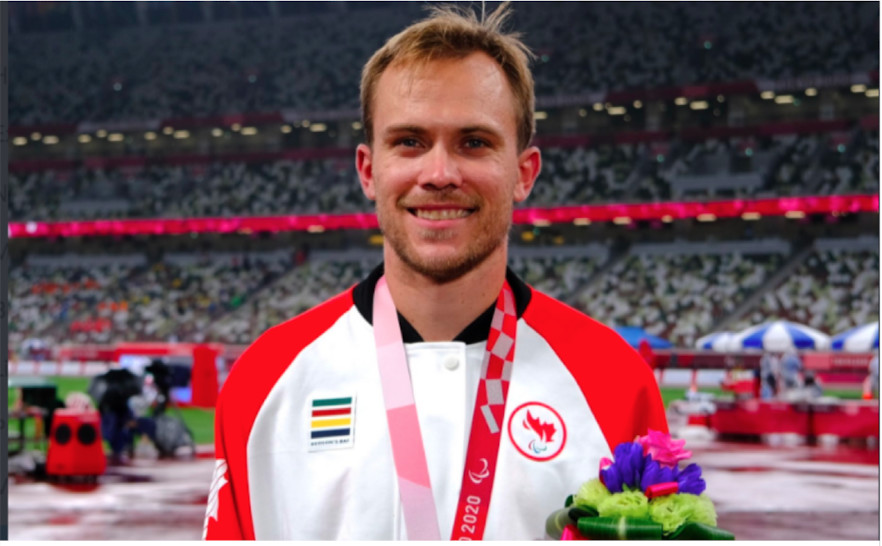
Earlier this year, Riech set the world record in the 1,500m event of 3:47.89 at a meet in Victoria.
Fellow Canadian Liam Stanley, a T37 athlete, competed in the race with a higher degree of impairment than the rest of the athletes of the T38 classification.
Stanley finished fifth in 4:06.95, setting a Paralympic record for the T37 classification.
(09/05/2021) ⚡AMPExercisers and elites mingled at Tjejmilen
Finally, Tjejmilen could be completed. In honor of the day, we had perfect running weather with sun and around 14 degrees. Extra fun was that Finnkampen's 10,000 meters for women was decided during Tjejmilen.
After having to cancel last year's race due to covid-19, about 8000 girls who wanted to run were registered for this year's Tjejmilen. The classic setting with thousands of girls on site at the same time at Gärdet was different this year due to the restrictions where a maximum of 900 participants can be in the event area at the same time.

First out was Lilla Tjejmilen starting at 9.30 - almost 400 girls were registered.
At 10.00 it was time for the premiere of Tjejmilen Trail. More than 800 girls were registered for the race, which took place on small winding paths in the forest around Kaknästornet.
At 12.00, the starting shot was fired for Tjejmilen. At the front of the starting field were the six participants from Finnkampen with Meraf Bahta, Sarah Lahti and Carolina Wikström in the Swedish team. Bahta and Lahti together with Hanna Lindholm were first at a kilometer. After three kilometers, Bahta and Lahti pulled, they were then followed to the finish where Meraf Bahta came out of the sprint duel winning.
The race then continued with starts every 30 minutes, to avoid congestion. In a normal year, the different groups start at five-minute intervals. It was a long and wonderful day at Gärdet, at 18.25 the last runners finished.
We are incredibly happy that we have managed to arrange Tjejmilen this year with all adaptations to the restrictions that apply. We had to rethink, but I'm really happy with the result - and it was noticed that the participants on site appreciated being able to run races again. Next year we hope to be on the track again after the pandemic. It would of course be fun if we could approach the 2019 number of participants of 20,000 registered runners, says Malin Aho, project manager at the Marathon Group that arranges the Girl Mile.
In addition to the participants on site, many chose to run Tjejmilen virtually again this year.
Topp 5 Tjejmilen 20211. Meraf Bahta, Hälle IF, 32:412. Sarah Lahti, Hässelby SK, 32:423. Carolina Wikström, LK Roslagen, 33:284. Hanna Lindholm, Huddinge AIS, 33:375. Johanna Peiponen, Rovaniemen Lappi, 34:00Här finns alla resultat i Tjejmilen 2021.
Resultat Finnkampen, damernas 10 000 meter1. Meraf Bahta, Sverige/Hälle IF, 32:412. Sarah Lahti, Sverige/Hässelby SK, 32:423. Carolina Wikström, Sverige/LK Roslagen, 33:284. Johanna Peiponen, Finland/Rovaniemen Lappi, 34:005. Nina Chydenius, Finland/Gamlakarleby IF, 34:046. Laura Manninen, Finland/Kenttäurheilijat -58, 34:34
Topp 5 Tjejmilen Trail 20211. Helena Wallin, Älvsjö, 42:912. Olivia Grahn, Stockholm, 42:413. Rebecca Källström, Stockholm, 43:284. Sofia Kingstedt von Corswant, Skarpnäck, 43:475. Alicia Sjöö Ekelöf, Spånga, 44:02
(09/05/2021) ⚡AMP
Tjejmilen
The Tjejmilen 10K is Sweden’s largest sports event for women with around 30,000 participants taking part in a road race and in a trail race. The road race has a Fun Run version and a competitive version if you want to show your girl power. The course of Tjejmilen is predominantly flat with two small hills (less than 15 meters)...
more...Rock ‘n’ Roll Half Marathon leaving Virginia Beach after this year
After 20 years of live music serenading runners through the Virginia Beach Oceanfront, the Rock ‘n’ Roll Running Series is leaving the city.
The series, which debuted in Hampton Roads in 2001 and includes a half-marathon, 5-kilometer race and 1-mile sprint, will take place for the final time the weekend of Sept. 4, the event runners announced in a statement on its Facebook page.

“After thoughtful consideration and conversations with local officials, the difficult decision has been made that after 20 wonderful years, the 2021 Rock ‘n’ Roll Running Series Virginia Beach will be the final edition of the race,” the statement read.
“...We have had a tremendous relationship with the City of Virginia Beach over the years and will continue to stay engaged with the city and all of our local partners to explore potential opportunities that may arise in the future.”
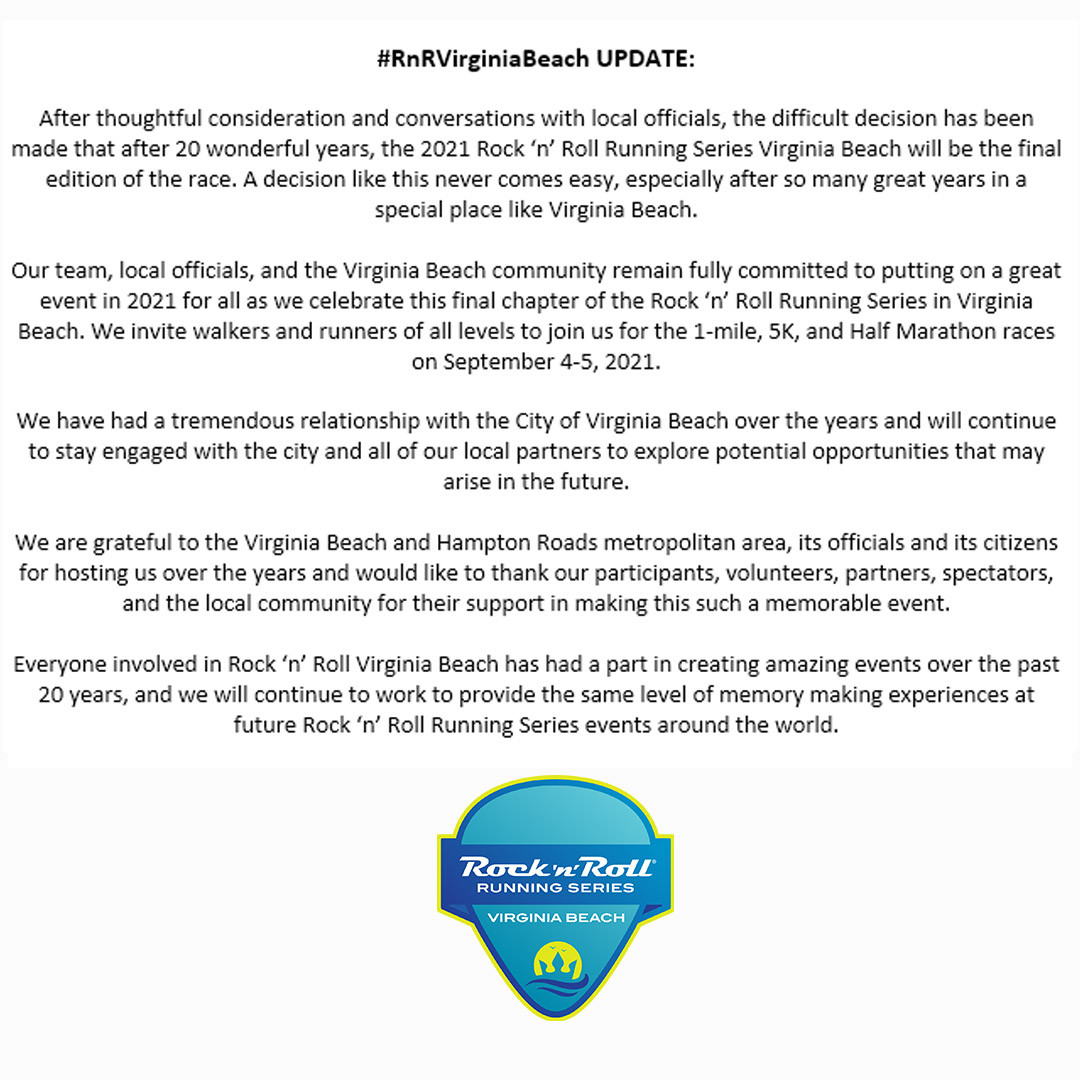
Virginia Beach is host to one of Rock ‘n’ Roll’s 17 events listed on its website, boasting it as “the largest outdoor music festival on the East Coast.”
The departure leaves the Yuengling Shamrock Marathon and Half Marathon in March as Virginia Beach’s sole premier running event.
(09/04/2021) ⚡AMPby Ray Nimmo
Sprint stars Shelly-Ann Fraser-Pryce and Andre De Grasse will headline the Kamila Skolimowska Memorial in Poland
On Sunday 5, a World Athletics Continental Tour Gold meeting, while there will also be a wealth of champions in action in the field events, including a fond farewell to a legend of Polish athletics in Piotr Malachowski.
Fraser-Pryce will race her specialist event, the 100m, where she will face stiff opposition from compatriot Shericka Jackson. However, the two-time Olympic 100m champion should prove tough to beat, having clocked a PB of 10.60 in Lausanne last week.
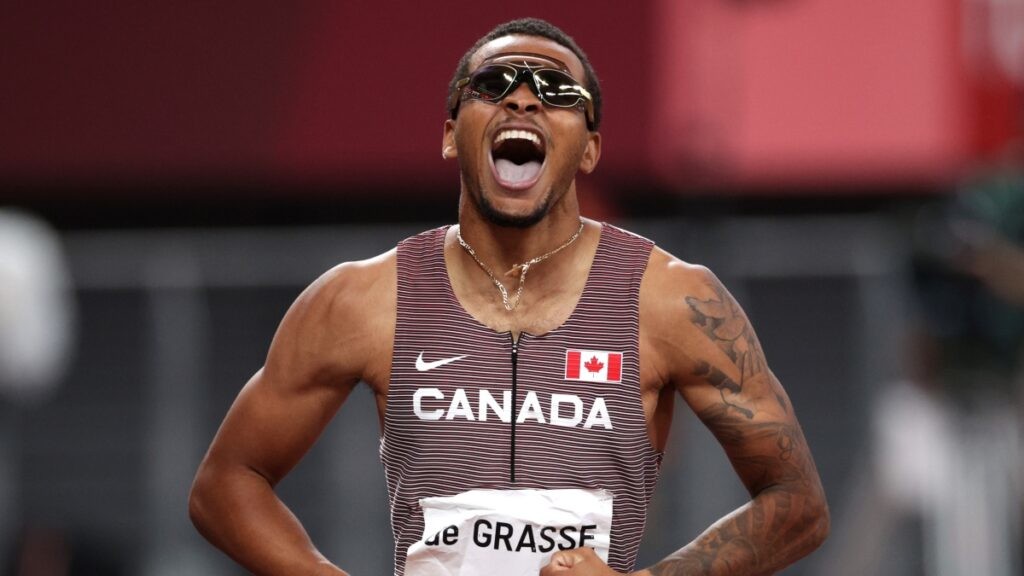
De Grasse will line up in the 200m, the event in which he’s the Olympic champion, having clocked a Canadian record of 19.62 to take gold in Tokyo, which he backed up in fine style with a wind-assisted 9.74 (2.9m/s) to win over 100m at the Eugene Diamond League. Also in the field are Italy’s Filippo Tortu, Turkey’s Ramil Guliyev and Britons Nethaneel Mitchell-Blake and Reece Prescod.
Another Olympic champion will be in action in the men’s 110m hurdles, with Jamaica’s Hansle Parchment looking to back up that Tokyo win against a formidable US duo in Devon Allen and Daniel Roberts.
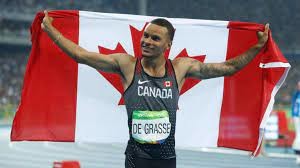
Brazil’s Alison Dos Santos, who took bronze in Tokyo in a South American record of 46.72, should prove tough to beat in the 400m hurdles. Fellow Olympic finalists Yasmani Copello of Turkey and Rasmus Magi of Estonia should be his closest pursuers.
US pair Michael Cherry and Vernon Norwood will be big contenders in the men’s 400m along with Botswana’s Isaac Makwala, while Poland’s Karol Zalewski, Kajetan Duszynski and Jakub Krzewina should mount a strong challenge on home turf.
The favourite for the women’s 400m is Marileidy Paulino of the Dominican Republic, who backed up her Olympic silver medal with recent wins in Lausanne (50.40) and Paris (50.12). Britain’s Jodie Williams will also be in the reckoning following her PB of 49.97 to finish sixth in the Olympic final, while the home charge is led by Justyna Swiety-Ersetic and Anna Kielbasinska, the latter in sparkling form following a PB of 50.38 in La Chaux-de-Fonds last month.
Nigeria’s Tobi Amusan, who clocked 12.60 to finish fourth in the Olympic final, should be tough to beat in the 100m hurdles, though US pair Sharika Nelvis and Christina Clemons will put it up to her along with Britain’s Cindy Sember.
The women’s 400m hurdles features a clash between the fourth-, fifth- and sixth-place finishers in the Olympic final: Janieve Russell of Jamaica along with Anna Ryzhykova and Viktoriya Tkachuk of Ukraine.
There will be a string of local heroes in action across the field events, with Olympic champion Wojciech Nowicki headlining the men’s hammer field, which also includes four-time world champion Pawel Fajdek and the man who split the Poles on the podium in Tokyo: Eivind Henriksen of Norway.
All eyes will be on Piotr Malachowski in the men’s discus as the 38-year-old performs in front of his home crowd for the last time before bringing the curtain down on a career that has included one world title, two world silver medals, two European golds and two Olympic silvers.
“Over 20 years of training, effort and sacrifice are now behind me,” said Malachowski. “It was a great time, full of joy. It is now times to say goodbye. I am retiring, bidding farewell to the fans, thanking them for the invaluable support they have given me over the years.”
Also in the field are Jamaica’s Fedrick Dacres, Slovenia’s Kristjan Ceh and Lithuania’s Andrius Gudzius.
Poland has a typically strong hand in the men’s pole vault where Piotr Lisek and Pawel Wojciechowski take on Olympic silver medallist Chris Nilsen and world champion Sam Kendricks.
The men’s shot put will be a must-see event, reuniting the top four finishers from the Tokyo Olympics: USA’s Ryan Crouser and Joe Kovacs along with New Zealand’s Tom Walsh and Brazil’s Darlan Romani.
Johannes Vetter is the star attraction in the men’s javelin, the German looking to put his Tokyo disappointment firmly behind him as he takes on Olympic silver medallist Jakub Vadlejch of the Czech Republic.
Italy’s Gianmarco Tamberi will take star billing in the men’s high jump where the Olympic champion takes on Olympic bronze medallist Maksim Nedasekau, while the women’s high jump features Ukraine’s Yaroslava Mahuchikh, Yuliya Levchenko and Iryna Herashchenko along with Poland’s Kamila Licwinko.
Poland’s Maria Andrejczyk will be a popular presence among fans, not only due to her Olympic silver in Tokyo but due to her decision to auction off that medal to raise money for a Polish toddler’s heart surgery. Polish convenience store Zabka won the auction and returned the medal to Andrejczyk, who said that she believes “the good we do comes back to us.” In Silesia she will take on world champion Kelsey-Lee Barber of Australia.
Poland’s Malwina Kopron will take on France’s Alexandra Tavernier in the women’s hammer, the woman she beat to the bronze medal at the Tokyo Olympics, while fellow finalist Joanna Fiodorow is also in the field. Portugal’s Auriol Dongmo is the leading entrant in the women’s shot put.
Olympic 10,000m champion Selemon Barega of Ethiopia and 3000m steeplechase champion Soufiane El Bakkali of Morocco are the star attractions in the distance races, the two squaring off over 3000m in a field that includes rising star Tadese Worku of Ethiopia, the world U20 champion, and Abel Kipsang, who finished fourth in the Olympic 1500m final.
(09/04/2021) ⚡AMPby World Athletics
The world's best finish lines
Whether you are running your first or 50th race, there is no better feeling than crossing the finish line. We appreciate all finish lines in life no matter your goals, but we take a look at some of our favourite finish lines in races across the running world.
Boston Marathon (U.S.)

It would be hard to leave the finish line of the prestigious Boston Marathon off the list. Right on Hereford, left on Bolyston and you can see the finish line, with 500m to go. It’s a memory Boston marathoners remember forever. To hear fans, family members and Bostonians screaming at you as you run toward the line certainly gives you a final push to the finish.
Ultra de Trail Mont-Blanc (France)
This UTMB finish line sits right in the heart of Chamonix, surrounded by picturesque views of the French Alps. Ultrarunners descend from the mountain into the village after 171 km of racing, and hear the roar of the crowd as they run through narrow cobblestone streets toward the finish.
Olympic Marathon (Various)
The Olympic marathons always take place on the final two days of athletic events at the Games. Although fans were not allowed in the stadium in Tokyo, there were people lining the marathon course in Sapporo, which was one of the advantages of it being moved to that city. The raw emotion of athletes celebrating as they complete the Olympic marathon is a moment like no other.
Around the Bay 30 km (Canada)
Canada’s Around the Bay 30 km road race has a unique finish line, in which runners finish go through the lower level of a hockey arena to finish at centre ice of Hamilton’s FirstOntario Centre. Friends and families sit inside the arena to watch runners cross the line. Spectators will also sit inside to avoid the freezing temperatures of the March race.
Melbourne Marathon (Australia)
Similar to Canada’s Around the Bay race, the Melbourne Marathon finishes inside one of the world’s top 10 largest stadiums: the Melbourne Cricket Ground (MCG). The MCG has a seating capacity of 100,000 people and is home to the AFL Grand Final and Australia’s cricket team. Runners enter the MCG after completing 41 kilometres around the streets of Melbourne, to finish the marathon at midfield.
Great Wall Marathon (China)
The Great Wall of China Marathon starts and finishes inside the village of Huanyaguang’s Yin & Yang Square. Despite the steep climbs on the iconic Great Wall of China, runners are rewarded by the breathtaking views along the course. In the last two kilometres, as you reach the village from the wall, spectators will be cheering as they have a traditional festival for runners.
Comrades Ultra Marathon (South Africa)
The Comrades Marathon is a point-to-point 90 km ultramarathon in South Africa, starting at City Hall in Pietermaritzburg and finishing at the Sahara Kingsmead Cricket Stadium in Durban. Race spectators wait at the finish in Durban in front of a big screen, waiting for entrants to cross the line. The race has a challenging time limit, as runners must complete the distance in less than 12 hours.
(09/04/2021) ⚡AMPWhat's the best alternative to running when you're injured?
Most runners will experience some form of injury at one point or another that prevents them from training, whether that be for a few days, weeks or even months. This, of course, can be very frustrating, and many will look for an alternative to running in order to maintain their fitness while they rehab their injury. There are plenty of options here to choose from, but which one is best? We’ve broken down some of the most common choices to help you pick the best option for you.
Cycling
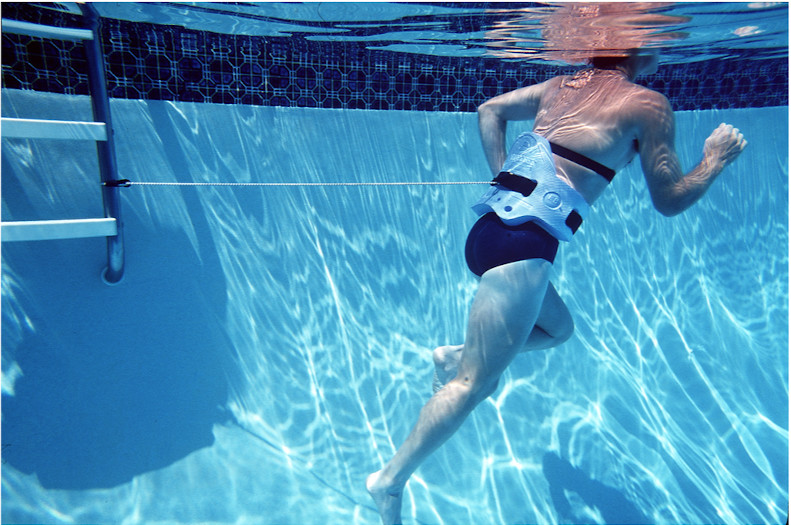
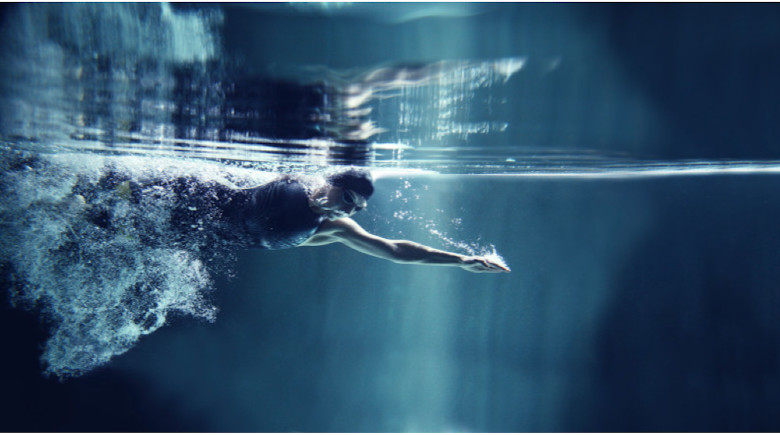
The great thing about cycling is that the fitness you gain on the bike can translate very well to running, and since it’s a non-weight-bearing activity, it’s a great option for injured runners. Cycling can also strengthen areas of the body where runners can sometimes be weak, like the quads, outer hips and glutes, which can help prevent other injuries in the future.
Cycling is also one of the most accessible options for injured runners, and those who aren’t comfortable out on the roads can opt to use a stationary bike inside if they have one. Most gyms have stationary bikes as well, so if you have a gym membership, now is a great time to use it. There are a few drawbacks to cycling, and depending on your injury, the bike could make it worse. There is also a learning curve when it comes to adapting your running workouts to the bike, and if you’re cycling indoors, the stationary bike can be pretty boring.
Elliptical
The elliptical is another good option for injured runners who have a gym membership, since not very many people have one in their homes. The best part about the elliptical is that it very closely mimics the motion of running, without the pounding associated with hitting the pavement. Like with the stationary bike, the drawback here is that it can be very monotonous. Some people prefer to use an assault bike, which can be less boring, but they aren’t as common in most gyms and so tend to be less accessible for the average runner.
Pool running
Pool running, or aqua jogging, allows you to run while removing the full effect of gravity. It’s a good option because it gives you the opportunity to work on your form and get your heart rate up with little to no impact on your joints. The biggest benefit to pool running is it is most similar to actual running in respect to your movement and biomechanics and you can replicate just about any type of running workout in the pool, from tempos to intervals to long runs. The downside, of course, is that it can be very boring, and you do need access to a pool in order to do it.
Swimming
Most people find swimming more interesting than pool running, and it can be a very good full-body workout. The downside is that unless you’re already a proficient swimmer, it can be difficult to get a true aerobic workout from swimming. For this reason, it is better as a supplement to other types of cross-training.
The Alter-G treadmill
The Alter-G treadmill involves running on a treadmill while your entire lower body is encompassed in a chamber that allows you to reduce the amount of gravity (or pressure) on your body to take you from 100 per cent bodyweight down to as little as 20 per cent body weight. It’s great because it allows you to get back to running faster, while still protecting yourself from impact. Of course, just like running on a regular treadmill, the Alter-G can get very boring, but in this case the boredom will cost extra. One of these machines can cost anywhere from $35,000-$75,000, which makes them prohibitively expensive for most people. Most people will instead use one at sports medicine or rehab clinic, but they can be difficult to locate and will still set you back about $35 to $50 per session.
So which should you choose?
The type of cross-training you choose will depend on a number of factors, including the type and severity of your injury, what you have available to you and of course, your own preference. When it comes to cost, accessibility and efficacy, most runners will find cycling, the elliptical and pool running to be their best bet, but our list doesn’t include every running alternative out there, so make sure you talk to a physiotherapist or sports medicine practitioner before beginning a cross-training regime, as they’ll be able to guide you to which option is best for your specific injury.
(09/04/2021) ⚡AMPCAS report on Shelby Houlihan explains reasons for four-year ban
In June, American 1,500m record-holder Shelby Houlihan was given a four-year ban by the Athletics Integrity Unit (AIU) after testing positive for the steroid nandrolone in December 2020. The Bowerman Track Club athlete appealed the ban and attempted to prove her innocence, since the athlete was hoping to race at the U.S. Olympic trials, but the Court of Arbitration for Sport (CAS) upheld her suspension. The AIU has now released the 44-page decision into her case, upholding the ban. Houlihan will not be able to compete until January, 2025.
To recap, the substance found in Houlihan’s sample was nandrolone, specifically 19-norandrosterone (19-NA), a steroid sometimes found in pork offal (pig organ meat). She claimed the positive result was due to having ingested pork offal in burrito from a food truck the night before she was tested, but the CAS did not accept her explanation and upheld the AIU’s charge. Houlihan also submitted a hair test and a lie detector test, both supporting her innocence, but these were found to be inadequate.
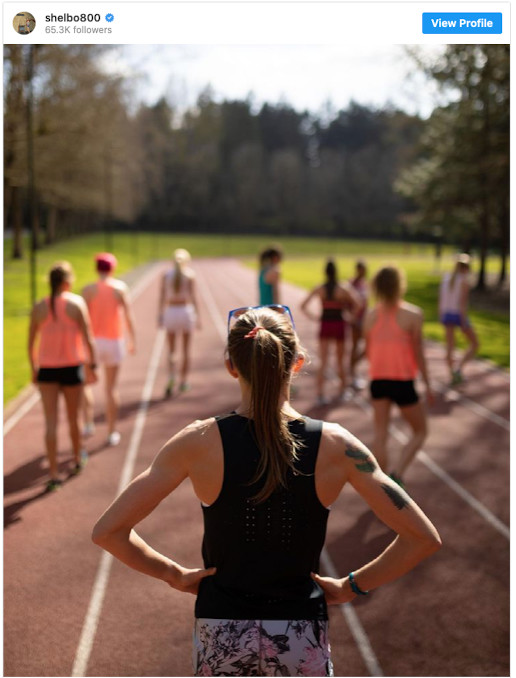
The decision included the following statement regarding the evidence against Houlihan:
“The Athlete’s explanation that the 19-NA in her sample resulted from her consumption of the meat of an uncastrated boar simply cannot be accepted. The explanation presupposes a cascade of factual and scientific improbabilities, which means that its composite probability is (very) close to zero.”
Specifically, the CAS panel found that though it was possible that Houlihan unwittingly ingested the meat of an uncastrated boar, for various reasons it was highly unlikely, and moreover, that even if she had, it would not account for the relatively high levels of nandrolone found in her samples. It found that the nandrolone found in her samples was consistent with that found in products commonly sold on the Internet for the purpose of enhancing athletic performance.
Several of Houlihan’s teammates defended her as a clean athlete, including Courtney Frerichs, who was with her when she ate the burrito (and who ate from the same food truck). Frerich’s sister, Lindsey Frerichs, who also ate with them that night, provided a witness statement, as did Bowerman coach Shalane Flanagan and athletes Matt Centrowitz (whom Houlihan was dating at the time) and Karissa Schweizer.
Despite their testimonies, the court found Houlihan to be guilty, saying she failed to provide a plausible explanation for the presence of nandrolone in her urine sample, and concluded that the anti-doping rule violation she was charged with must have been intentional.
The ban forced Houlihan to miss the U.S. Olympic trials and the Tokyo Olympics, where she was assumed to be a medal favourite, and it will prevent her from competing at the upcoming World Championships and the Paris 2024 Summer Games.
Editor’s update Sept. 3, 2021: According to a story on LetsRun.com, Houlihan plans to appeal her case to the Swiss Federal Tribunal.
(09/04/2021) ⚡AMPDuplantis, Hassan and Cherry break meeting records in Brussels
Meeting records are hard to come by in the Wanda Diamond League, given it’s the premier one-day meeting circuit in the world, but three such marks fell at the Memorial Van Damme in Brussels on Friday (3), thanks to Mondo Duplantis, Sifan Hassan and Michael Cherry.
When the men’s pole vault got underway, some 40 minutes before the first track event, the King Baudouin Stadium was still filling up. By the time the contest reached its climax three hours later, with all other disciplines having long finished, Duplantis commanded the attention of every single person inside the venue.
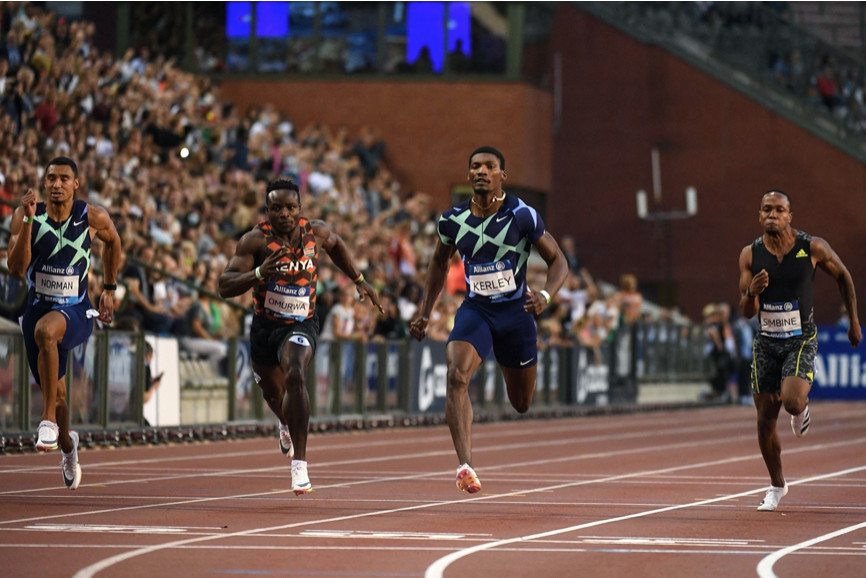
Though the world record once again evaded Duplantis tonight, the 28,000 spectators – the largest gathering for an athletics meeting since the start of the Covid-19 pandemic – were treated to a vaulting masterclass from a legend of the sport.
The Olympic champion opened at 5.50m, skipped 5.65m and then got over 5.75m and 5.85m on his first tries. Four other men were left in the competition at this point, but only two of them got over 5.85m; Olympic silver medallist Christopher Nilsen did it on his first try, while US compatriot KC Lightfoot scraped over on his third attempt.
The US duo couldn’t quite manage 5.91m tonight, though, but Duplantis once again went clear at the first time of asking to confirm his victory. The 21-year-old Swede then raised the bar to 6.05m in a bid to add some height to his own 6.00m meeting record from last year. He brought the bar down with his first two tries, but got over it on his third attempt.
The bar was then raised to the would-be world record height of 6.19m. Following a short wait while the technical officials ensured all was set for a record attempt, Duplantis took to the runway but wasn’t particularly close to clearing the bar on his first attempt. His second try was significantly closer, and his third attempt was also decent, but a world record wasn’t to be tonight.
Nevertheless, Duplantis wasn’t disappointed with his winning height of 6.05m. Only he, Sergey Bubka and two-time world champion Sam Kendricks have ever vaulted higher outdoors.
"I was really close to the world record," said Duplantis. "Everything was perfect, it was just up to me. I haven't had such an amazing atmosphere during a competition in a really long time."
Almost a month has passed since Sifan Hassan’s final race at the Olympic Games, where she won two gold medals and one bronze. Having raced just once during that time, the Dutch distance star arrived in Brussels well rested and ready to take on the mile.
She was the only athlete capable of sticking with the pacemakers as they led through the first 400m in 1:02.03. By the time the second pacemaker reached the 800m point in 2:04.97, with Hassan still in close attendance, the rest of the field was about 30 metres adrift.
With a lap to go, it was clear from the wavelight technology that an improvement on Hassan’s 4:12.33 world record was not on the cards in Brussels, though it never really seemed as though that was her ambition for the race anyway. By this stage, her lead had grown to 50 metres and she kicked for the final lap, going on to win by more than six seconds.
Her winning time of 4:14.74, the fifth-fastest performance in history, smashed Faith Kipyegon’s meeting record by two seconds. Ethiopia’s Axumawit Embaye was second in 4:21.08, closely followed by Australia’s Linden Hall, who broke her own Oceanian record with 4:21.38.
“Since the start of the pandemic, we haven’t had such a big crowd and I’m so happy to see them,” said Hassan. “We haven’t experienced it for nearly two years; it makes you feel special. It’s amazing, I really love it.”
In Tokyo last month, Michael Cherry was beaten to the 400m bronze medal by just 0.02 as Kirani James pipped the US sprinter at the line. Today’s race in Brussels was the first clash between the pair since the Olympic final, and Cherry ran like a man with a point to prove.
He went out hard, as did James, and by half way the duo had started to open up a clear gap on the likes of Isaac Makwala and Liemarvin Bonevacia.
James almost drew level with Cherry on the final bend, but Cherry had another gear left and forged ahead down the home straight, crossing the line in a lifetime best of 44.03 to take 0.03 off Michael Johnson’s meeting record from 1998.
James finished second in 44.51 with Makwala taking third place in 44.83.
The meeting record may have remained intact in the women’s high jump, but it proved to be one of the most enthralling contests of the night.
Olympic champion Mariya Lasitskene breezed through the first few heights and hadn’t recorded any failures up to and including 1.98m. World silver medallist Yaroslava Mahuchikh, who needed three attempts to clear 1.95m, also got over 1.98m on her first try, while Olympic silver medallist Nicola McDermott needed two jumps to clear it.
But McDermott was then the first to go clear at 2.00m, getting over on her first try, then Lasitskene did likewise. Mahuchikh succeeded on her second attempt at 2.00m, but then nailed 2.02m on her first attempt, taking the lead at a critical point of the competition.
Lasitskene missed once and then passed to 2.04m, while McDermott had two misses at 2.02m before registering a third failure at 2.04m. Neither of the trio managed to get over 2.04m, leaving Mahuchikh as the winner. It was just the second time in Diamond League history that three women have cleared 2.00m in the same competition.
With Lasitskene having won in Lausanne and McDermott winning in Paris, Mahuchikh’s triumph in Brussels means all three Olympic medallists have achieved Diamond League wins since the Tokyo Games.
Kerley makes Diamond League history
Olympic 100m silver medallist Fred Kerley won the short sprint, becoming the first man to win over 100m, 200m and 400m in the Wanda Diamond League.
World leader Trayvon Bromell blasted into an early lead and held his form well, but Kerley rallied and held off the additional challenge from Michael Norman in lane seven, dipping well on the line to take the victory in 9.94.
Bromell held on to take second place in 9.97, just 0.01 ahead of Michael Norman (9.98), completing a US sweep of the top three places.
Christine Mboma, also an Olympic silver medallist, won the women’s 200m. The Namibian teenager came through strongly in the closing stages to edge in front of Jamaica’s Shericka Jackson and world champion Dina Asher-Smith.
Mboma stopped the clock at 21.84 while Jackson took second place in 21.95. Asher-Smith recorded a season’s best of 22.04 in third, and US 100m champion Sha’Carri Richardson was a few strides adrift in fourth place (22.45).
Burundi’s Francine Niyonsaba produced a similarly well-timed finish to win the 5000m.
Once the last of the pacemakers dropped out at 2000m, Niyonsaba took up the running at the front of the pack with two-time world champion Hellen Obiri close behind. The Kenyan led for a brief stint too, passing through 3000m in a swift 8:42.57.
Niyonsaba, who finished fifth over 10,000m at the Tokyo Olympics, led again for most of the final kilometre, but Obiri kicked into the lead when the bell sounded for the final lap. She appeared to be on her way to victory, but Ethiopia’s Ejgayehu Taye came back strongly and briefly led with about 90 metres to go, then a rejuvenated Niyonsaba came back to take the lead in the closing stages, crossing the line in a national record of 14:25.34.
Taye took second place in 14:25.63 with Obiri claiming third in 14:26.23. World silver medallist Margaret Chelimo Kipkemboi set a PB of 14:27.12 in fourth as the top seven women finished inside 14:32 – unprecedented depth for a 5000m race.
Goule, Rotich and McSweyn take middle distances
Exactly one month since her eighth-place finish at the Tokyo Olympics, Jamaica’s Natoya Goule rebounded with a satisfying win over 800m, beating several women who finished ahead of her at the Games.
With the pacemaker passing through the first lap in 56.99, the field was still relatively tightly bunched with 300 metres to go. Goule held the lead, but Olympic silver medallist Keely Hodgkinson moved on to the Jamaican’s shoulder on the final bend and looked poised to strike.
Goule had saved something for the finish, though, and she held off the challenge from the British teenager, winning in 1:58.09. Hodgkinson was second in 1:58.16 from compatriot Jemma Reekie (1:58.77).
Stewart McSweyn led an Australian 1-2 in the men’s 1500m. The Oceanian record-holder overtook a fading Mohamed Katir on the home straight to win in 3:33.20 with compatriot Oliver Hoare taking second place (3:33.79). Poland’s Michal Rozmys was third in 3:33.96.
Olympic silver medallist Ferguson Cheruiyot Rotich was a comfortable winner of the non-scoring men’s 800m, crossing the line in 1:43.81 to win by more than a second from Belgium’s Eliott Crestan (1:45.24).
Hurdles victories for Dos Santos and Visser
Racing for the first time since taking Olympic bronze and moving to third on the world all-time list, Brazil’s Alison dos Santos won the men’s 400m hurdles with his trademark strong finish.
Kyron McMaster of the British Virgin Islands led for most of the race, making up the stagger on Dos Santos, drawn one lane outside him, by the half-way point. Dos Santos stuck with McMaster around the final bend and drew level with Jamaica’s Jaheel Hyde. McMaster hit the penultimate hurdle, throwing off his rhythm slightly as he went into the final barrier. Dos Santos, meanwhile, came off the 10th hurdle much better and went on to win in 48.23.
McMaster finished second in 48.31 and Yasmani Copello took third place in 48.45.
The closest finish of the day came in the women’s 100m hurdles, in which Nadine Visser won by just eight thousandths of a second from Tobi Amusan, both timed at 12.69 (0.7m/s). Olympic bronze medallist Megan Tapper was third in 12.77.
Elsewhere, Steffin McCarter saved his best for last to win the men’s long jump. His sixth-round leap of 7.99m was not only the best in the ‘final three’ contest; it was also the top mark of the entire competition. Ruswahl Samaai was second thanks to his last-round leap of 7.89m, having jumped 7.95m earlier in the competition.
(09/04/2021) ⚡AMPHow much time do carbon shoes really take off?
Professor of biomechanics at BYU gives his perspective on the benefits of carbon-plated shoes.
Since Nike launched the original carbon-plated Nike Vaporfly, there has been a transition to the type of shoe runners are wearing. When the Vaporfly was released, it changed the game with a non-traditional look. Instead of being as lightweight as possible, the brands designed a bulkier shoe with lightweight foam plus a carbon plate to provide stiffness. When Eliud Kipchoge ran under 2:01 for Nike’s Breaking2 project, the carbon craze began.
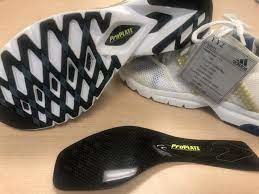
Many runners saw the way the shoe benefited the world’s best marathoner and thought, “I wonder how fast a carbon shoe would make me?”
Easton Allred, a cross-country runner with Brigham Young University, discussed the recent development of carbon shoes with professor of biomechanics Dr. Iain Hunter, who studies how people can run faster by the way they move, and the effect of footwear on their athletic performance. The two discuss whether carbon is beneficial and how much time it could take off your 5 km.
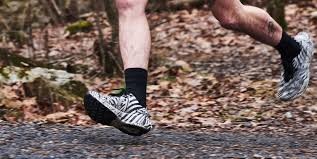
Dr. Hunter notes that half the hype around carbon-plated shoes is psychological, and most runners won’t see a benefit from the plate itself. “A common misconception is that it acts as a spring – the plate is actually in the shoe to hold the foam together,” Hunter said. Each carbon shoe is very individualized and based on many variables. For example, if you are a heel striker, the plate/foam will not generate as much responsiveness for a forefoot striker. “I am convinced that the shoes help with performance, but I doubt it’s as big an effect as a lot of people think,” Hunter adds.
Allred asks, “How much of a difference do you think it would make in a 5 K race?”
“Maybe two or three seconds per kilometre,” Hunter states. “A couple of seconds could be very meaningful to some runners, but there isn’t more than that.” The technology of racing flats before carbon shoes wasn’t far behind, and runners were still breaking world records in flats.
“We have done studies that there are extreme benefits to recovery with carbon shoes, since the foam is softer than racing flats,” Hunter states
With the book out on the benefits of carbon shoes, all brands have adapted to the same technology. The only difference between models would be the softness of the foam and the stiffness of the plate.
(09/03/2021) ⚡AMPby Marley Dickinson
Gelete Burka and Fabienne Schlumpf will head the women’s field of the Vienna City Marathon
With a personal best of 2:20:45 Ethiopia’s Gelete Burka will be the fastest woman ever on a start list for Austria’s most prestigious and biggest road running event.
The Vienna City Marathon will see its 38th edition next week and organizers currently have registered a total of around 25,000 athletes. While this includes races at shorter distances there will be 6,000 marathon runners. Some of the events will take place on the Saturday.
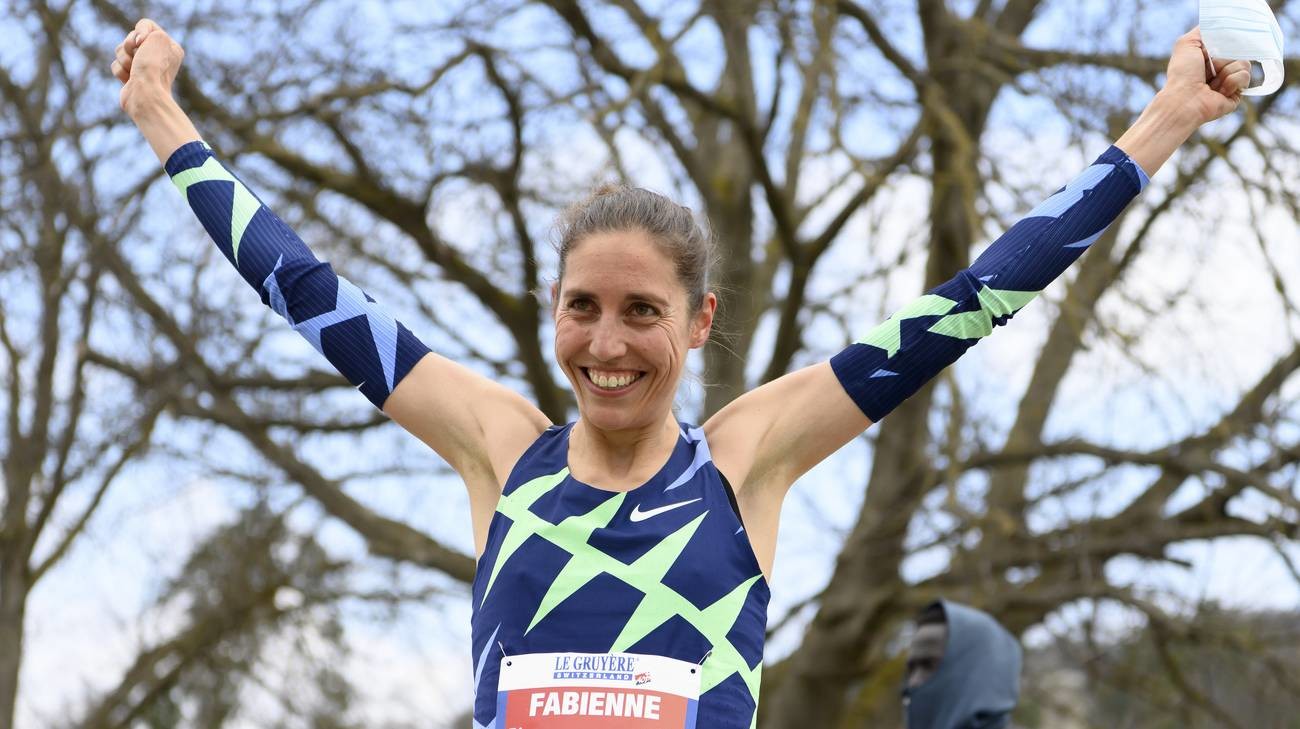
The Vienna City Marathon is a World Athletics Marathon Label Road Race and will be the first major international marathon featuring a strong elite field and a mass race since the start of the Corona pandemic. After providing a hygiene concept organizers received the final go ahead from the city a couple of days ago.
Gelete Burka has been a very successful track and cross country runner. The Ethiopian took the World Cross Country Championships’ gold medal in 2006 (short course) and won the 1,500 m final at the World Indoor Championships two years later. In 2015 she was second in the 10,000 m final of the World Championships. By that time she already had a few attempts at the marathon distance. However despite a personal best of 2:26:03 from 2014 in Houston she did not manage to transform her great potential to the classic distance. It was then in Dubai 2018 when she returned to the marathon after a four-year break and achieved a breakthrough performance: Gelete Burka improved to 2:20:45 in the Emirate.
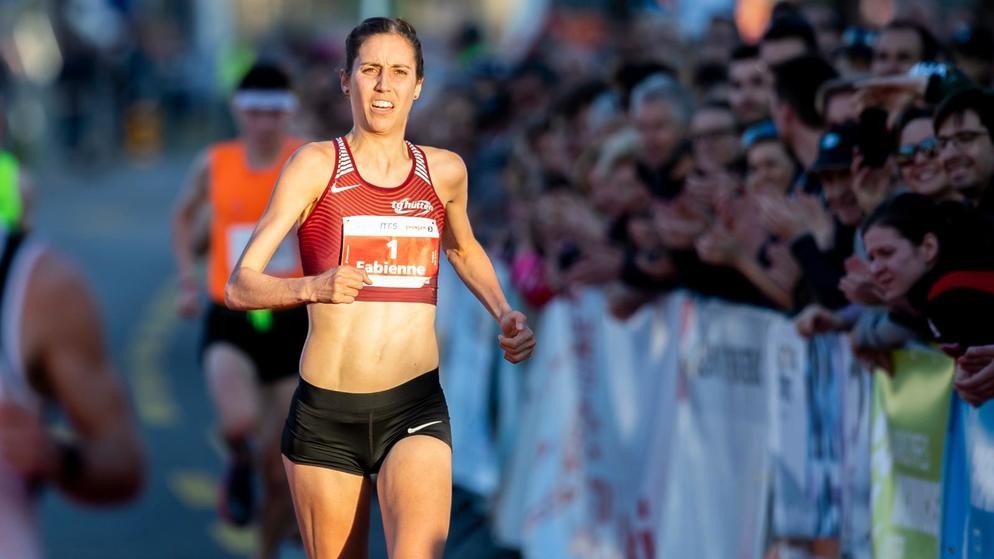
There was more success in the marathon for Gelete Burka after her sixth place in Dubai: In May that year she won the Ottawa race in 2:22:17, then she took the Paris Marathon in 2019 with 2:22:47. A third place in the Chicago Marathon (2:20:55) followed later in the year. The Vienna City Marathon will now be the first marathon for the 35 year-old since 2019.
In contrast Fabienne Schlumpf is still a newcomer to the marathon. The former steeplechaser, who took the silver medal at the European Championships in 2018, first ran a series of national records in the half marathon. Last autumn she achieved a very respectable 13th place in the World Half Marathon Championships with an improvement to 68:38. She then took the Dresden Half Marathon this March with 68:27. Easily breaking the Olympic qualifying standard she clocked 2:26:14 in her marathon debut in Bern in April when she took second place. Fabienne Schlumpf then ran her second marathon at the Olympics in the extremely tough conditions in Sapporo. She achieved a superb 12th place in 2:31:36 which suggests that there is much more to come from the 30 year-old in the marathon. “I had already planned to run Vienna after the Olympics for a long time,” said Fabienne Schlumpf.
Gelete Burka and Fabienne Schlumpf will face a group of strong Kenyan contenders at the Vienna City Marathon. Risper Chebet is the second fastest on the start list with a personal best of 2:23:45. She achieved this time when she was fifth in Milan earlier this year, improving her PB by almost four minutes. Returning to the Vienna City Marathon will be Rebecca Kangogo and Celestine Chepchirchir. Kangogo ran her personal record of 2:24:25 here when she was runner-up in 2017 while Chepchirchir was third in 2018. She has a personal best of 2:24:48 from Seoul in 2019.
(09/03/2021) ⚡AMPby AIMS
Vienna City Marathon
More than 41,000 runners from over 110 nations take part in the Vienna City Marathon, cheered on by hundreds of thousands of spectators. From the start at UN City to the magnificent finish on the Heldenplatz, the excitement will never miss a beat. In recent years the Vienna City Marathon has succeeded in creating a unique position as a marathon...
more...Craft Sportswear Becomes Official Athletic Footwear Partner of the Rock ‘n’ Roll Running Series
The Rock ‘n’ Roll® Running Series and Craft Sportswear are excited to announce a new partnership making Craft Sportswear the Official Athletic Footwear Partner for the Rock ‘n’ Roll Running Series.
This partnership launches the co-branded Craft x Rock ‘n’ Roll Running Series shoe in three limited-edition colorways – black, red and yellow. This exclusive mid-distance running, and training shoe will be available on the official Rock ‘n’ Roll Running Series merchandise e-commerce store at www.runrocknrollstore.com and at all 2021 Rock ‘n’ Roll Running Series events.
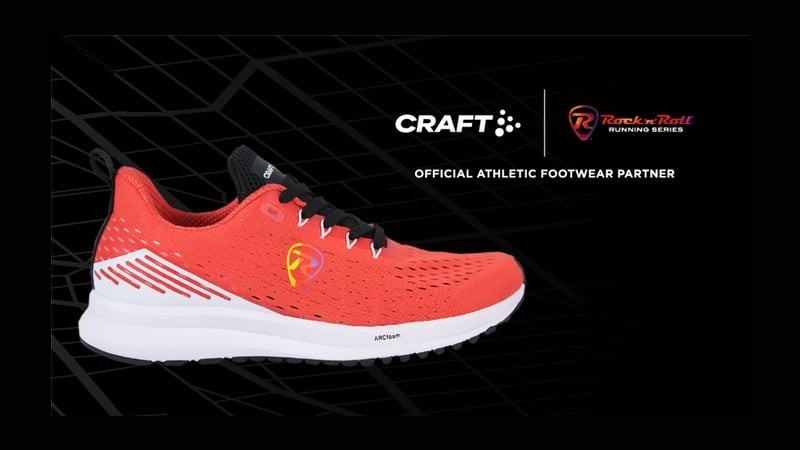
“We are thrilled to have Craft Sportswear join us as the Official Athletic Footwear Partner of the Rock ‘n’ Roll Running Series,” said Matt Wikstrom, Senior Vice President, Global Partnerships for The IRONMAN Group. “The launch of this new co-branded running shoe is a great opportunity for our runners to experience the high-performance and quality of Craft with the spirit and energy of the Rock ‘n’ Roll Running Series.”
Craft is a high-quality and high-performance Swedish brand that provides world champions and everyday heroes an endurance focused footwear and apparel design for any distance and any terrain.

As part of the X-series, the Craft x Rock ‘n’ Roll Running Series collaboration features a multi-purpose running shoe that truly follows the natural contours of the foot.
This Craft design features a lightweight and breathable engineered mesh upper and an ARC Foam midsole with launch pad at the forefoot and landing pad at the heel that provides excellent cushioning and response.
In addition, innovative X cables run under the midfoot and behind the heel to secure and stabilize the foot — offering a perfect balance between support and flexibility for a natural stride. “The running community here in the U.S. has exploded over the past two years and we are thrilled to be aligned with the Rock ‘n’ Roll Running Series one of the premier race organizations here in the US.” said Eric Schenker, CEO of Craft NA.
“Through this partnership we look forward to providing Rock ‘n’ Roll and their participants innovative products and programs that will help elevate their racer’s experience and meet all their endurance needs.” To kick off the partnership, the Humana Rock ‘n’ Roll® Virtual Running Club is launching three Craft inspired virtual challenges designed to get runners to Lace Up, Step Up and Power Up.
Offering three distances, these challenges are the perfect way to try out the new Craft x Rock ‘n’ Roll Running Series running shoe and learn more about each limited-edition colorway. By participating in any, or all, of these multi-level challenges participants can earn points towards discounts at the online or in-person Rock ‘n’ Roll merchandise stores and be entered to win a $500 Craft gift card. Visit www.runrocknrollvr.com to sign up and complete the challenges between Tuesday, August 31 and Friday September 10, 2021.
(09/03/2021) ⚡AMPby Running USA
Rock N Roll Arizona Marathon
The Marathon and Half-Marathon courses or the new Mini- Marathon or Bike Tour courses take you through the three host cities of Phoenix, Scottsdale and Tempe! The Marathon and Bike Tour start at CityScape in downtown Phoenix, while the Half-Marathon and Mini-Marathon are loop courses launching from downtown Tempe. All the courses end in Tempe at ASU’s Sun Devil and...
more...Boston Marathon runners must be vaccinated or have a negative COVID-19 test
Runners in this year's Boston Marathon will need to provide proof of vaccination or produce a negative COVID-19 test in order to participate, race organisers said on Thursday.
The Boston Athletic Association (B.A.A.) said in a statement that all participants will be required to take either step prior to bib number pick-up ahead of the Oct. 11 race.
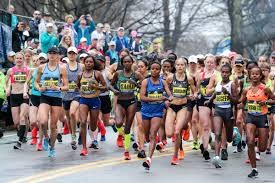
The B.A.A. said it was working with a third-party testing provider to conduct tests no earlier than 72 hours before participant start times.
Anyone who tests positive for COVID-19 will not be allowed to take part and will be refunded their entry.
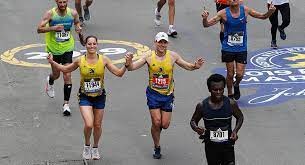
Masks will not be required for runners during the race but the B.A.A. said they will be enforced on race-day buses and in other areas in accordance with local guidelines.
Organisers previously said this year's Boston Marathon will be limited to 20,000 entrants, or about 33% below the typical number of runners in the race, in a bid to allow greater social distancing throughout the course given the COVID-19 pandemic.
The Boston Marathon, which is usually held in April and generally draws over 30,000 runners from all over the world, had been held annually since 1897 until it was cancelled for the first time last year because of COVID-19.
The global pandemic also forced organizers to push back the date for this year's race.
(09/03/2021) ⚡AMPby Ed Osmond
Boston Marathon
Among the nation’s oldest athletic clubs, the B.A.A. was established in 1887, and, in 1896, more than half of the U.S. Olympic Team at the first modern games was composed of B.A.A. club members. The Olympic Games provided the inspiration for the first Boston Marathon, which culminated the B.A.A. Games on April 19, 1897. John J. McDermott emerged from a...
more...Sifan Hassan will headline classy Brussels Diamond League field
Dutch all-rounder Sifan Hassan, who won two golds and a bronze in an unprecedented effort at a distance treble at the Tokyo Olympics, heads up a talent-loaded field at the penultimate meeting of the 2021 Diamond League series in Brussels on Friday.
In the last event before the two-day Diamond League finals in Zurich on September 8-9, the men's 100m featuring Tokyo silver medallist Fred Kerley of the US will also be a highlight.

Kerley will be up against compatriots Trayvon Bromell, Michael Norman and Ronnie Baker, along with Canada's Olympic 200m champion Andre De Grasse.
Kerley, fresh from a personal best of 19.79sec in the 200m in Paris last week, said: "I've got a lot of confidence in my current form and want to show what I've got in the upcoming weeks.
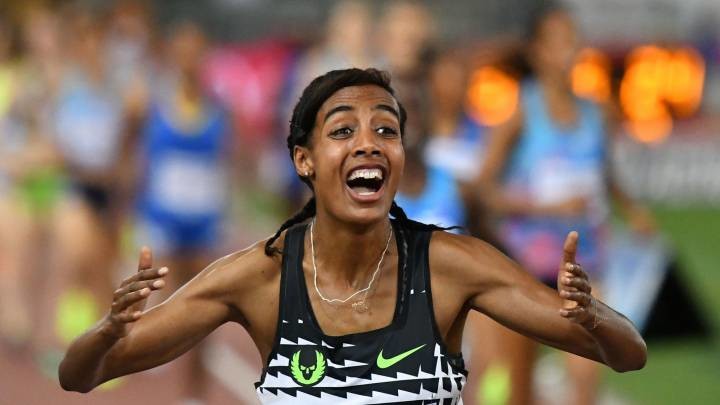
"My goal is very clear: I want to be the fastest man in the 100m, 200m and the 400m."
Kerley joined an exclusive club this year of sprinters who have broken 10 seconds in the 100m, 20 seconds in the 200m and 44 seconds in the 400m. Only Norman and South African Wayde van Niekerk have also achieved the feat.
"I want to be the best at all three distances. What makes someone the best, maybe a world record? I know I have got the potential to break the 400m record.
"I want to be a legend, like Usain Bolt. I see him as a big brother. To me he will always have a spot on the podium of the greatest of all time, he is a big example."
Hassan will race the mile at the King Baudouin Stadium, a venue she knows well, having broken the one-hour world record there last year.
The Ethiopian-born Dutch runner is also the world record holder in the mile and, given her sparkling form, it would take a brave person to bet against her winning once again.
The women's 200m is packed full of quality, with Tokyo bronze medallist Shericka Jackson, Olympic finalist Marie-Josee Ta Lou and a handful of sprinters who have a point to prove after Olympic disappointment this summer.
Outspoken American Sha'Carri Richardson missed out on a trip to Tokyo after being handed a one-month ban after testing positive for cannabis while Britain's Dina Asher-Smith was forced to pull out through injury.
Christine Mboma, the 18-year-old Namibian who is barred from running events between 400m and the mile because of her high testosterone levels, won a surprise silver in the 200m in Tokyo and will likely be a strong contender in Brussels.
Having rebounded from a disappointing outing at Lausanne with an emphatic win in Paris, Olympic pole vault champion Armand "Mondo" Duplantis is likely to again attempt to better his own world record of 6.18m.
(09/02/2021) ⚡AMPSide Stitches While Running, Why Do You Get Them and What You Can Do To Avoid Them?
It’s something endurance athletes are particularly prone to – stitches. That unpleasant pain beneath the ribs has brought many an athlete to their knees, making for a sorry end to their race or match. But what exactly is a stitch, what causes a side stitch, is there anything that can help when you get it, and can anything be done to prevent it? pjuractive takes a closer look.
WHAT IS A STITCH?

When people talk of side stitch, they are referring to a stabbing pain beneath the ribs which athletes suffer from, either on the left-hand side near the spleen or on the right around the liver area. It usually starts off fairly mildly, but can become so severe that athletes have to stop what they are doing. It mostly affects endurance athletes, such as runners, cyclists, swimmers, and rowers.
WHAT CAUSES A STITCH IN THE FIRST PLACE?

A stitch is brought on by physical exertion. It is something a lot of endurance athletes suffer with from time to time, yet the exact cause is still not known. There are plenty of theories about why so many athletes repeatedly suffer from the pain associated with stitches. One suspected cause is reduced blood supply to the organs, such as the spleen or liver. Incorrect breathing, a bent or stooping posture, overstimulation of the intercostal nerves, and an awkward running style can also bring on a side stitch. In addition, it is also assumed that incorrect food consumption and fluid intake can play a role – exercising on a full stomach may in fact be the crucial factor. The blood which the body needs for digestion means that there may not be enough available to the muscles, which can lead to a stitch. Being overweight, a lack of oxygen when doing intensive training, weak core muscles, and even failure to do sufficient warm-up exercises may also be causes.
The vast number of possible causes explains why so many athletes suffer from stitches so often. But can they be prevented? And if so, how?
HOW TO PREVENT STITCHES
Athletes naturally want to prevent stitches in the first place, yet because it is not clear what actually causes side stitch, it is difficult to prevent them. However, there are a few tips which athletes should bear in mind.
Endurance athletes should start their training gradually and slowly increase the intensity. It is only by doing this that the body can adjust the blood supply accordingly. It is also important to be aware of your breathing. Whatever the sport, breathing should always be controlled and abdominal breathing techniques should also be used. When running, for example, athletes are advised to breathe in for two to four paces and out again for exactly the same length of time. The faster the tempo, the fewer steps you take for each breath. When running slowly, take three to four – i.e. more steps per breath. It is also important to warm up properly to prepare the body for the exertion to come. This can prevent stitches, too.
Consumption of food should also be planned in a way that minimizes the risk of getting a stitch. It is recommended that athletes leave at least three hours after a big meal before a training session. Small snacks that are easy to digest are of course fine to eat before training.
Building up strong core muscles can also help prevent stitches in endurance athletes, as poor posture can cause side stitch. Stomach muscles are also important here.
It seems that older people don’t need to worry so much about preventing stitches, as susceptibility appears to decrease with age.
WHAT TO DO WHEN IT’S ALREADY TOO LATE – WAYS HOW TO GET RID OF SIDE STITCH
Have you followed all the tips above, yet still you’ve ended up with a stitch while running, cycling, etc.? There are a few things you can do when this happens:
No matter what the situation, slow down. Whether it’s your cycling speed or your running tempo – to prevent a stitch from getting even worse, first of all it’s important to scale down the intensity of your training a little.
If you are suffering from a side stitch, your breathing must be controlled. Correct breathing helps the diaphragm and the respiratory muscles to relax – you should take really deep breaths and then breathe out very slowly. This can help improve your depth of breathing and allows the muscles to recover.
It can also help to press your hand against the painful area, but only when you breathe in. Release the pressure from your hand again on the out-breath.
If it gets so bad that you have to take a break from your training, you can do light upper-body stretches. The best thing to do is to bend your upper body to the side. Each time you breathe out, you can then stretch your upper body a little further.
It can also help to stand still, control your breathing, and lean your upper body forward. This will relax your abdominal cavity and your diaphragm.
Even though we haven’t been able to find out what exactly causes side stitches when running, cycling and the like, there are ways how to prevent side stitch. And if all that doesn’t help and you still get this unpleasant pain, it’s worth following our tips above. Happy endurance training – despite the stitch!
(09/02/2021) ⚡AMPby Pjur Active
CAS report on Shelby Houlihan, close to zero probability burrito led her failed drugs test
The probability that a contaminated pork burrito led to the US Olympic 1500m medal prospect Shelby Houlihan’s failed drugs test is “very close to zero”, the court of arbitration for sport has ruled.
In a 44-page verdict, which outlined the reasons why Houlihan was banned for four years in June, Cas said her claim she had unwittingly ingested the banned substance nandrolone by eating the meat of an uncastrated boar from a Mexican food truck “simply cannot be accepted”.
Houlihan told the court that she had only eaten three quarters of her beef burrito, having found it “uncharacteristically greasy”, and said she may have been given a pork one by accident.
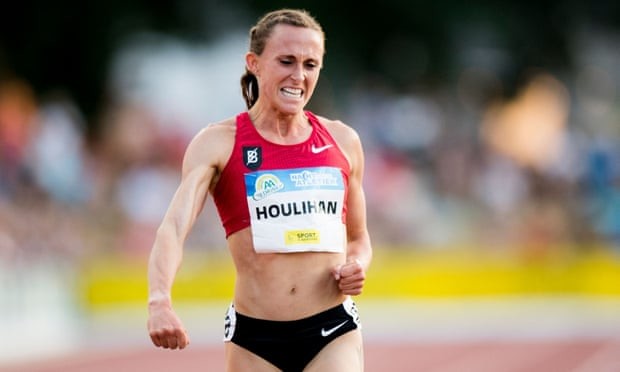
Cas dismissed Houlihan’s claims, saying: “The explanation presupposes a cascade of factual and scientific improbabilities, which means that its composite probability is (very) close to zero.
“First, the athlete would have had to have been served pork at the food truck despite ordering beef. Second, the pork consumed would not have been ‘normal’ pork product ordered by the food truck, but uncastrated boar. Third, uncastrated boar enters the food chain through completely different channels than pork.
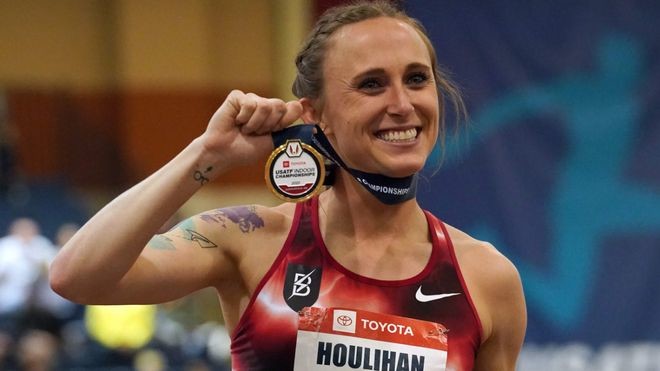
“It is rather difficult for an uncastrated pig to ‘slip through’ the multiple checkpoints. In principle, boars can be easily detected because of their big testicles.”
Cas quoted experts who said that for an uncastrated boar to end up in the normal pork supply chain, it not only had to be cryptorchid – a specimen with undescended testicles – but have had elevated androgen levels, “which would be abnormal for 6-month-old pigs”.
The court said: “The concentration of nandrolone in the athlete’s urine was 2-3 times higher than the highest values reported in the scientific literature after the ingestion of much more significant quantities of meat of mature (uncastrated) boar.
“Finally, in his expert witness report, Prof McGlone states that the chance of a cryptorchid ending up in the normal supply chain in the United States is far less than 1 in 10,000. As a result of her failure to establish the origin of the nandrolone in her system, the athlete cannot benefit from a plea of no significant fault or negligence.”
Houlihan, who finished fourth in the 1500m at the world championships in Doha in 2019, had a lengthy array of witnesses who pointed to her good character. She also told Cas she had refused to wear carbon-plated “super spikes” in Doha as she thought they would give her an unfair advantage – a decision that may have cost her a medal.
Speaking in June, Houlihan said: “I did everything I could to prove my innocence. I passed a polygraph test. I had my hair sampled by one of the world’s foremost toxicologists.”
However, Cas said that “neither the hair analysis nor the polygraph results are sufficient for the athlete to rebut the presumption that the anti-doping rule violation was intentional”.
(09/02/2021) ⚡AMPby Sean Ingle
World record-holder Eliud Kipchoge says that he wants to try an ultramarathon
As we’ve watched Eliud Kipchoge win race after race, break records and defy human limits, many fans have likely wondered what the marathon legend could do in a race longer than 42K. The great news is, one day we may have a chance to find out.
In a recent interview with Rob Steger in the Training for Ultra Podcast, the marathon world record-holder revealed his next goal after he finishes his marathon career: to tackle an ultra.
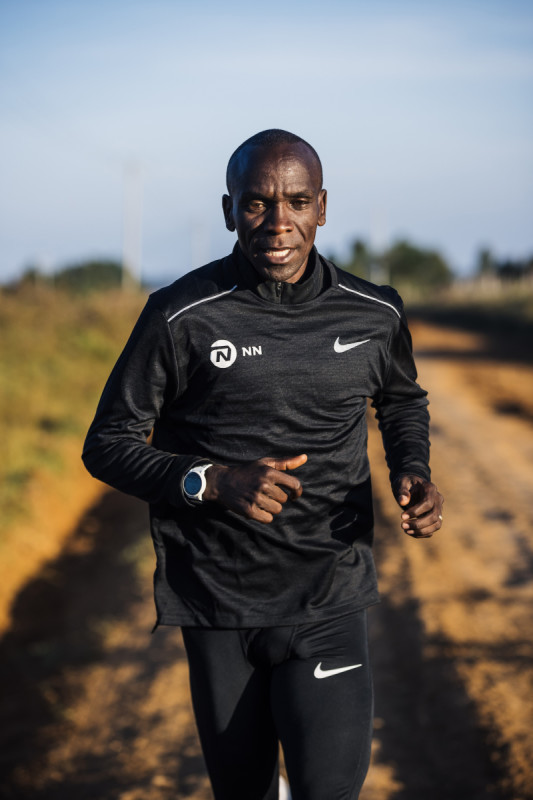
“After leaving the marathon, I want to run the ultramarathons just to feel how it is,” he told Steger. “Running for more than four or five days, or even run at once for 70 kilometers. I really want to feel the pain of running for a long time.”
While he hasn’t narrowed down any specific races he’d like to do, Kipchoge expressed interest in many of the Ultras in North America and South Africa, which gives him a long list to choose from. The ultrarunning community appears to be prepared to welcome the Olympic gold medalist with open arms, including fellow running legend, Spanish mountain runner Kilian Jornet.
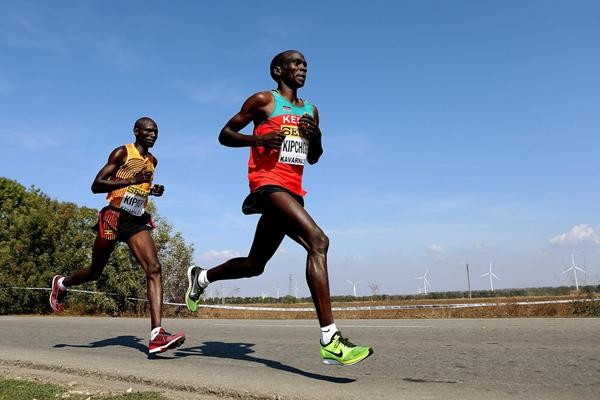
Throughout the rest of the interview, Kipchoge talks about the pain of training (yes, running hurts for him, too… don’t let his smile fool you), who inspires him (hint: it’s not who you might think), how he motivates himself on days when he doesn’t feel like training and what kind of legacy he hopes to leave behind. The interview is short but not lacking any of Kipchoge’s endearing charm, and will likely have you itching to tie up your shoes by the end.
We may have to wait a while before we see Kipchoge out on the trails, however. To the delight, and perhaps the relief, of running fans everywhere, the GOAT of marathon running hasn’t made any indication that he’s retiring any time soon, and we will still have the pleasure of watching him make history for at least a few years yet.
(09/02/2021) ⚡AMPby Brittany Hambleton
Jamaica's London Olympics relay gold medalist Nesta Carter has called time on his athletics career
In a press release yesterday, through track club MVP, the 35-year-old sprinter said he could not compete up to his standard in the sport. He said he has been hampered by an injury that has prevented him from competing since March.
"Now at the age of 35, I am no longer able to give of my best as an athlete to the sport that I know and love. As a result and for other reasons, I am announcing my retirement from Track and Field as an athlete," Carter said.
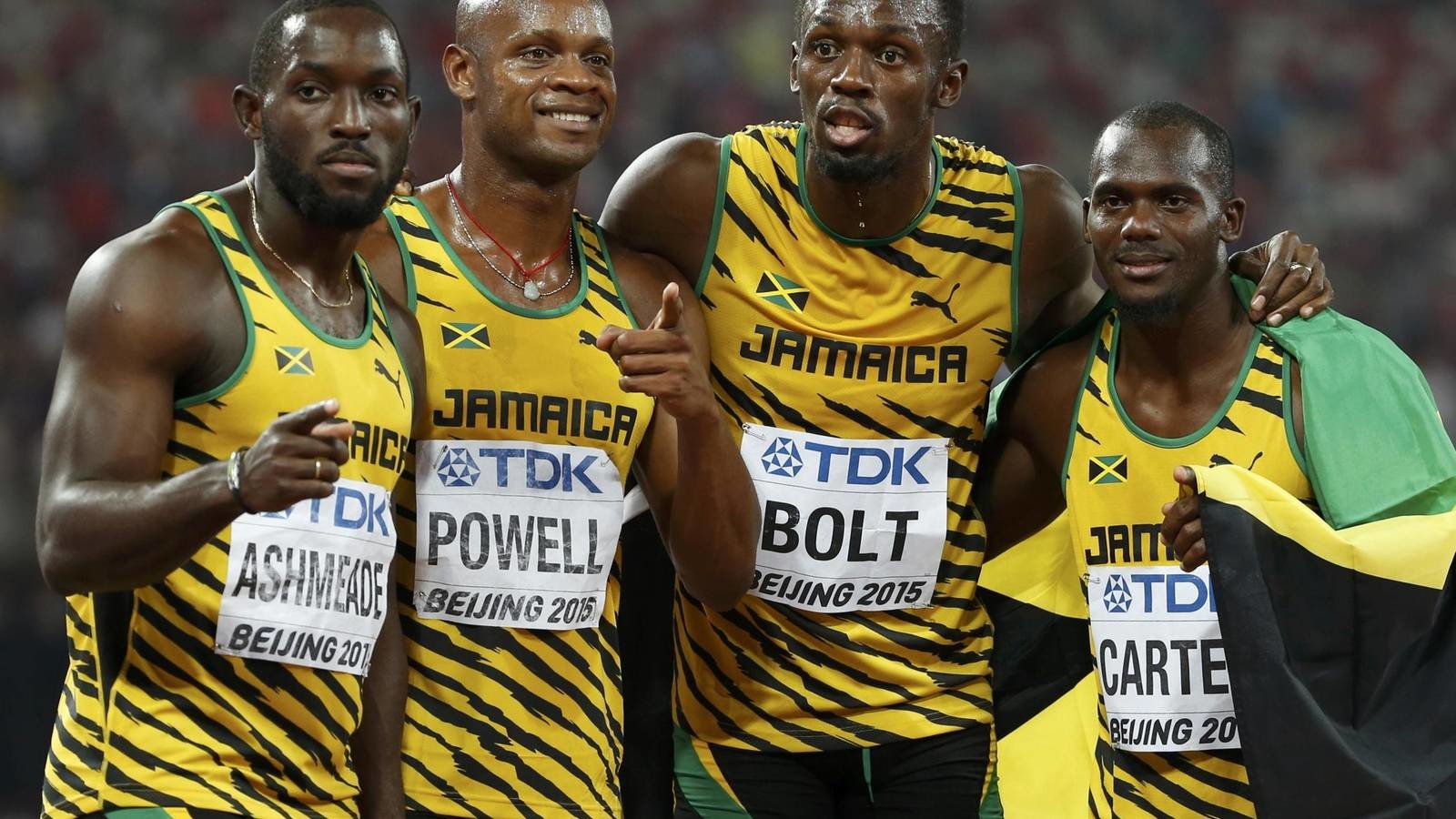
Furthermore, he said that while he was prescribed medication to correct the problem, the medication "breaches existing anti-doping rules".

" As such I had to make a choice between my health and athletics and I chose my health," Carter said.
Carter ends his career with a personal best in the 100m of 9.78 seconds, the eighth fastest time in history. He won Olympic gold as a member of the Jamaica 4x100m relay team that set the world record at the 2012 London Olympic Games (36.84 seconds). He won three World Championships gold medals as part of the Jamaica 4x100m relay team in 2011, 2013, and 2015, a silver in 2007 and an individual bronze in 100m final in 2013.
(09/01/2021) ⚡AMPby Daniel Wheeler
Nagoya is preparing a safe road race for 2022
The Nagoya Women’s Marathon is pleased to announce its plan to hold the Nagoya Women’s Marathon 2022 with 22,000 participants, on the same scale as before the Covid-19 pandemic started, in Nagoya city, Japan on Sunday, March 13, 2022.
Launched in 2012, the Nagoya Women’s Marathon is the world’s largest women’s marathon certified by Guinness World Records and the only women’s race granted a World Athletics Platinum Label.
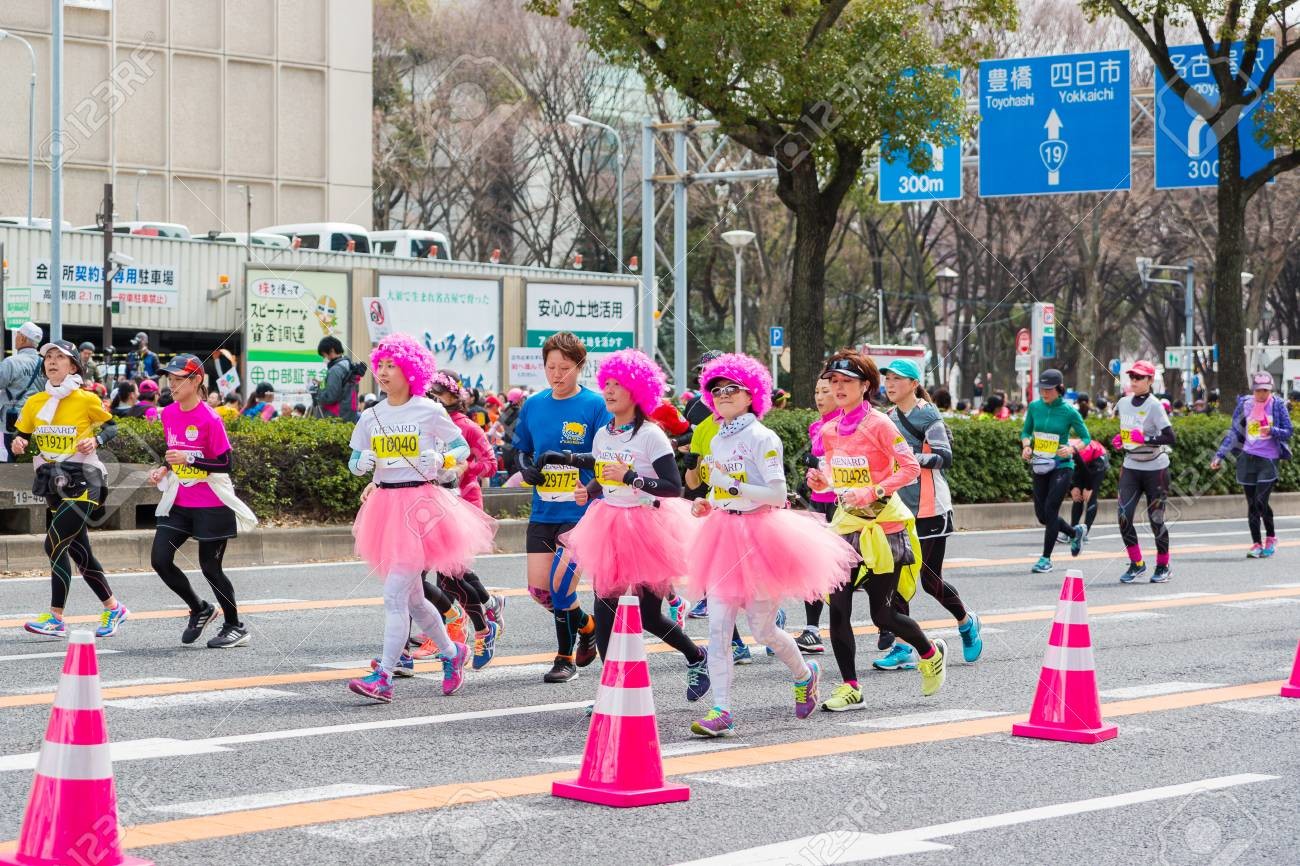
The event hosted 21,436 runners in 2019, but due to the Covid-19 outbreak, it only staged the elite race with 110 athletes in 2020. The 2021 race on March 14, 2021, was held as the first mass participation road race held in Japan after the Covid-19 pandemic started and welcomed 4,704 domestic runners (In the virtual marathon held in parallel with the in-person race, 4,800 runners participated from around the world). The post-event investigation found no cases of infection among event participants within two weeks after race day. The 2021 race was recognized for setting an example of ‘new-normal’ distance race with all suitable measures against infection delivered and advice of medical professionals and local government officials followed.
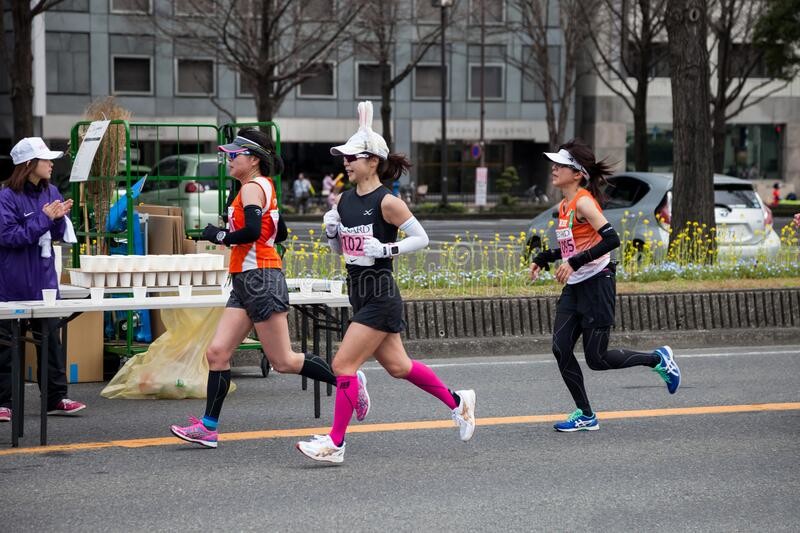
The Nagoya Women’s Marathon has been paving the way for the organization of safe road racing during the pandemic by holding races with gradually increased numbers of participants of only elite athletes in 2020 and nearly 5,000 runners in 2021. Using the knowledge and expertise in infection prevention and control practice accumulated in the past two years, the organizers are determined to make thorough preparations and develop further anti-infection measures for the 2022 race to safely host 22,000 women runners.
To keep the event safe and secure for runners, volunteers, and all concerned, the organizers will establish an infection control office within the organizing committee with medical professionals and local government officials and form a precise infection control plan. All participants will be required to cooperate with the infection measures, such as wearing a mask at all event sites (except for runners while running in the race), temperature check on every site arrival, Covid-19 testing at number pickup, and submission of health condition sheet for 7 days before and 14 days after race day. If the event is forced to be downsized or canceled due to the state of emergency or event restrictions issued by the Japanese or local governments, participation in a virtual marathon will be offered as a substitution. The virtual participation option will be also offered to international runners if they cannot come to the event due to travel restrictions.
The organizers will continue monitoring the infection status closely and make the utmost effort to stage the world’s largest women’s marathon in the best and safest way possible.
Koji Kitano, Race Director of the Nagoya Women’s Marathon comments: “Due to the Covid-19 pandemic, we have not been able to welcome 22,000 women runners and support their marathon challenge for the past two years. As a runner myself, I understand how running fans around the world are waiting for mass races to return. We will use our experience from the past two races held during the pandemic to act in best practice to ensure the health and safety of 22,000 runners. The race entry will start in November and we are looking forward to receiving applications from many runners.”
(09/01/2021) ⚡AMPNagoya Women's Marathon
The Nagoya Women's Marathon named Nagoya International Women's Marathon until the 2010 race, is an annual marathon race for female runners over the classic distance of 42 km and 195 metres, held in Nagoya, Japan in early March every year. It holds IAAF Gold Label road race status. It began in 1980 as an annual 20-kilometre road race held in...
more...Rwanda’s Felicien Muhitira will return to action ahead of Paris Marathon
Rwanda’s long distance runner Felicien Muhitira has returned to action as he prepares to compete at the forthcoming 2021 Paris Marathon slated for October 17 in Paris, France.
The 26-year-old will be participating at the marathon race in search of qualification to the 2022 World Athletics Championship slated from July 15-24, 2022 in Oregon, United States.
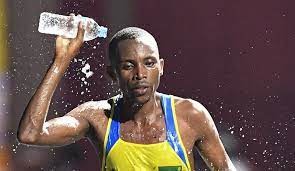
It was originally scheduled for August 6–15, 2021 but the postponement of the 2020 Tokyo 2020 Olympics prompted the need for postponement of the race, too, into 2022.
The Paris Marathon is one of Europe’s most popular sporting events and Muhitira aims to take advantage of the golden race to improve his current minima that would see him qualify to the World Championships.
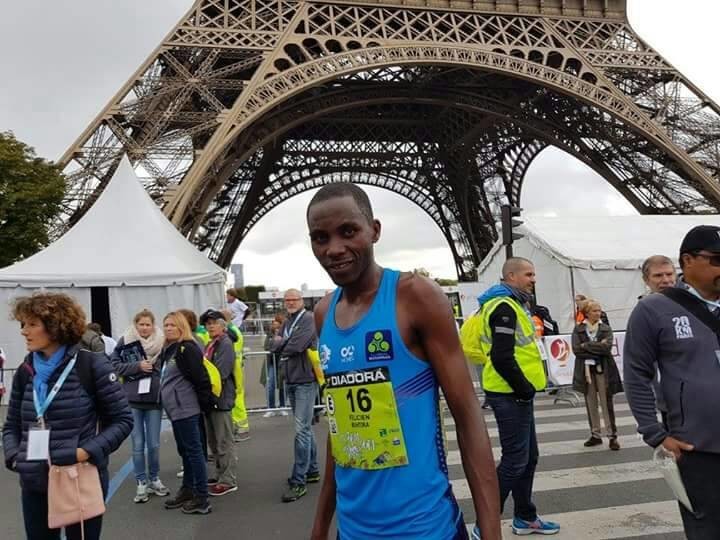
“The Paris Marathon is a good opportunity for me to improve my performance so I can not only qualify to the World Athletics Championships but also try to impress and get a chance to be invited in bigger marathon events in the future,” vows Muhitira in an interview with Times Sport.
Since he recovered from illness, Muhitira has been under intensive training sessions in Nyagatare as he targets to hit at least 2hours 08 minutes at Paris race so he can be able to land more marathon opportunities beyond World Championships.
The itinerary of the Paris Marathon, which normally attracts over 40,000 runners each year, will start on Les Champs Elysées.
(09/01/2021) ⚡AMPby Eddie Nsabimana
Schneider Electric Paris Marathon
The Schneider Electric Marathon de Paris offers a unique opportunity to make the city yours by participating in one of the most prestigious races over the legendary 42.195 km distance. The Schneider Electric Marathon de Paris is now one of the biggest marathons in the world, as much for the size of its field as the performances of its runners....
more...What are the best foods I should be eating during the week before and the morning of the Marathon race?
It’s a great question and a runners diet in the week before a marathon is a very important part of success on race day.
Marathon Rule #1: Never Try Anything New On Race Day
In addition to clothing, pacing, and training, this rule also applies to your nutrition strategy in the five days leading up to the race.
You should not experiment with any new foods or venture too far from your normal diet. It’s easy to get nervous in the last few days of your taper and be persuaded by a new product a friend recommends or something you see at the race expo.

However, if you haven’t tried it before, especially at marathon pace or during a long run, don’t be tempted.
It’s also important that you experiment with the types, quantity, and timing of the food you eat before you run. Some runners have very weak stomachs and need up to three hours to digest food before they can run comfortably. Other runners can eat within an hour of a hard run with no adverse side effects.
It is important to figure out which type of runner you are during training and to take this information into account when you plan for the race morning.
Experiment with your pre-race meal before race day. Your last two long runs or difficult marathon paced workouts should be similar to race simulations. Try wearing the clothes you think you’ll wear on race day, the shoes, socks, and everything you can think of.

Eat the same pre-race meal you’re planning for the night before the race and when you wake up in the morning, eat the same breakfast you plan on having.
This will give you time to change things up before race day if you find it doesn’t work for you.
5 Days From The Race
Begin to increase your total carbohydrate intake by adding in more pastas and starches (low glycemic index foods) to your diet throughout the week. The old idea of depleting your carbohydrate stores the week before the race and binging on carbohydrates the last few days in an attempt to trick your body into overcompensating and storing more fuel is outdated.
Ensuring that you consume a higher percentage of your total daily calories as carbohydrates is sufficient. Remember, you’re not running as much as you have been, so eating too much more than you normally do will make you feel bloated and lethargic.
At this point in the nutrition cycle, relax and don’t go overboard. Examples: Sweet potatoes, pastas, baked potatoes, brown rice, sandwiches, bagels with peanut butter, quinoa, whole grains, oatmeal
48 Hours Before The Race
Your last big meal should be two nights before the race. It will give your body ample time to digest anything you eat so you won’t feel bloated on the morning of the race. I’ve seen too many people gorge on pasta the night before the race only to reach the starting line the next day stuffed and lethargic.
Have you ever tried to run the morning after Thanksgiving?
If you have, you know the bloated feeling I’m talking about, and if you haven’t, I don’t recommend scheduling a tough workout. Example: The overwhelming favorite is pasta for most people, but other options include rice, potatoes, and pizza.
24 Hours And Before
Eat normal balanced meals like you would normally do on any training day. Make sure you drink plenty of liquids all day long, especially electrolyte fluids such as Gatorade or use electrolyte tabs such as Nuun.
It helps if you carry a water bottle along with you throughout the day to remind yourself to drink.
Your main meals should still be in the form of low glycemic to medium glycemic index foods. Ideally, you won’t be too active on the day before the race, so you may feel full quickly. That is fine, you shouldn’t try to stuff yourself. Good choices are: Sweet potatoes, pastas, baked potatoes, white rice, bagel with banana
18 Hours Before The Race
Start eating small meals every 2-3 hours, but after lunch, cut out red meat, fried foods, dairy products, fats, nuts, and roughage. You should only be consuming light, digestible foods like energy bars, bread, and small sandwiches.
Keep drinking water and electrolyte beverages and avoid salty and high fiber foods. Examples include: energy bars, bread, cereal, and small sandwiches.
4 Hours And Less
You should be up early enough before the race to eat a small breakfast with plenty of time to start digestion before the gun goes off. If you need 3 hours to eat a small meal before running, then you need to get up at least three hours before the race to get in a light breakfast.
You’ll want to drink mostly water (unless you know temperatures at the race are going to be warm), with some electrolyte fluid. Don’t try to get all your fluids down by chugging your water bottle.
Drink small, regular sized amounts. Room temperature water is absorbed quicker than warm or cold water. I estimate that you’ll need 6 oz. every hour or 8 oz. every hour on hot days.
Lots of runners will take a GU or energy gel right before the gun goes off. I only recommend this if you have a weak stomach and you haven’t eaten in 3 hours. If you’re able to stomach more solid foods 60-90 minutes before the race, this is preferable.
Basically, energy gels are mostly simple sugars and you’ll be consuming another 2 or 3 gels before the race is over. Even for the biggest sweet tooth this is a lot of sugar.
My favorite breakfast – oatmeal with banana and coffee. Other options include bagel with peanut butter, toast with honey, or dry cereal.
At this point, you should have a good idea of what works best for you pre hard or long run, so stick with what works.
(09/01/2021) ⚡AMPby Coach Jeff
Sha’Carri Richardson will return to the track in search of redemption after finishing last in Eugene
It has been confirmed that Sha’Carri Richardson is returning to the Diamond League to race the 200m this Friday in Brussels. After all the drama that unfolded after her race in Eugene, and missing the Olympic Games due to a suspension from USATF. Richardson returns to the track in search of redemption.
Richardson will go up against 200m specialist and 2019 World Champion Dina Asher-Smith and the Namibian duo of Beatrice Masilingi and Tokyo silver medallist Christine Mboma. She will once again go up against Jamaica’s Shericka Jackson, who won bronze in Tokyo and beat Richardson over the 100m distance in Eugene.
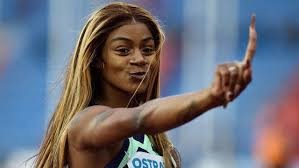
Richardson dropped out of the 200m race in Eugene after she failed to meet U.S. fan’s expectations in the 100m. This will be her third 200m race of the 2021 season, last running the event in Austria this past May (22.35s).
Brussels is the last stop on the Diamond League circuit before the two-day Diamond League finals in Zurich next week. Action from Brussels will kick off on Friday, Sept. 3 on CBC Sports.
(08/31/2021) ⚡AMP
by Marley Dickinson
Five Track Workouts to Improve Your Speed
A track is the perfect setting for speed workouts. The surface is ideal and you can easily set up workouts based on laps. Adding track workouts to your training routine can boost your speed and enliven your regimen.
Add some of these fun workouts and you're sure to see improvements in your race times. To start, do only one speed workout per week. You can add a second one as you build fitness.
If you've never done any kind of speed training, make sure you first understand the rules for speed training. You will want to first establish a good running base. Always warm up, and when you pick up the pace, don't start too fast.
1.- Push the Straightaways.
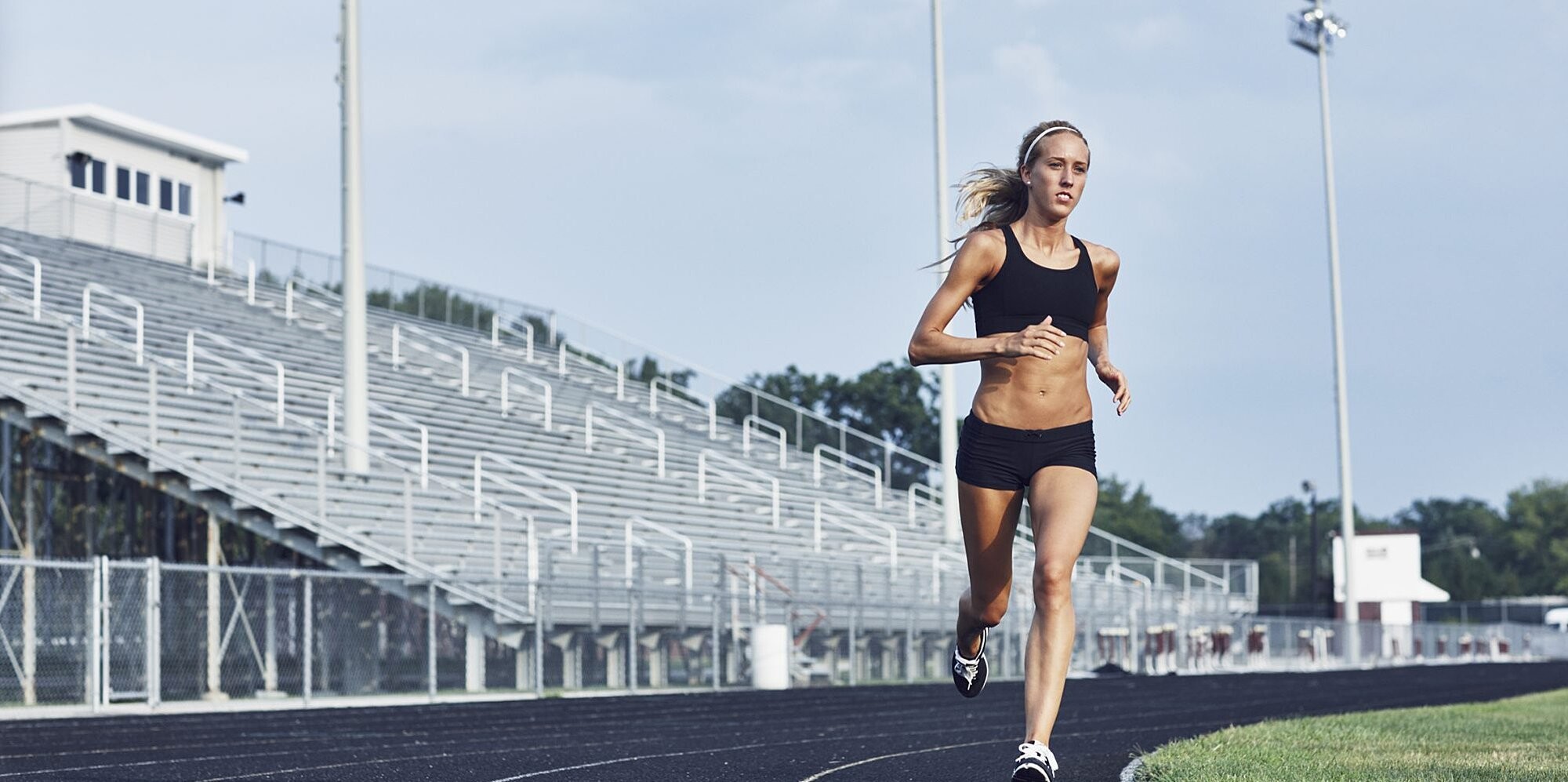
This is a great intro workout for those who are new to track workouts. It's simple. After a couple of laps at an easy pace to warm up, start to push the pace on the straight sections of the track (known as the straightaways) and then recover (at an easy pace) on the turns.
If you're training for a specific race, such as a 5K, you can do your race pace on the straightaways. Start with four laps and add another lap each week until you work your way up to 10 laps.
2.- Ladder Workout.
This track workout will help build your speed, confidence, and endurance, no matter what race distance you're training for. If you're not sure what your 5K (3.1 miles) race pace is, use a race pace estimate calculator. Beginners should start with one sequence, while more advanced runners can repeat the sequence once they've worked through it.
Warm-up: 5 minutes at a walk/slow jog
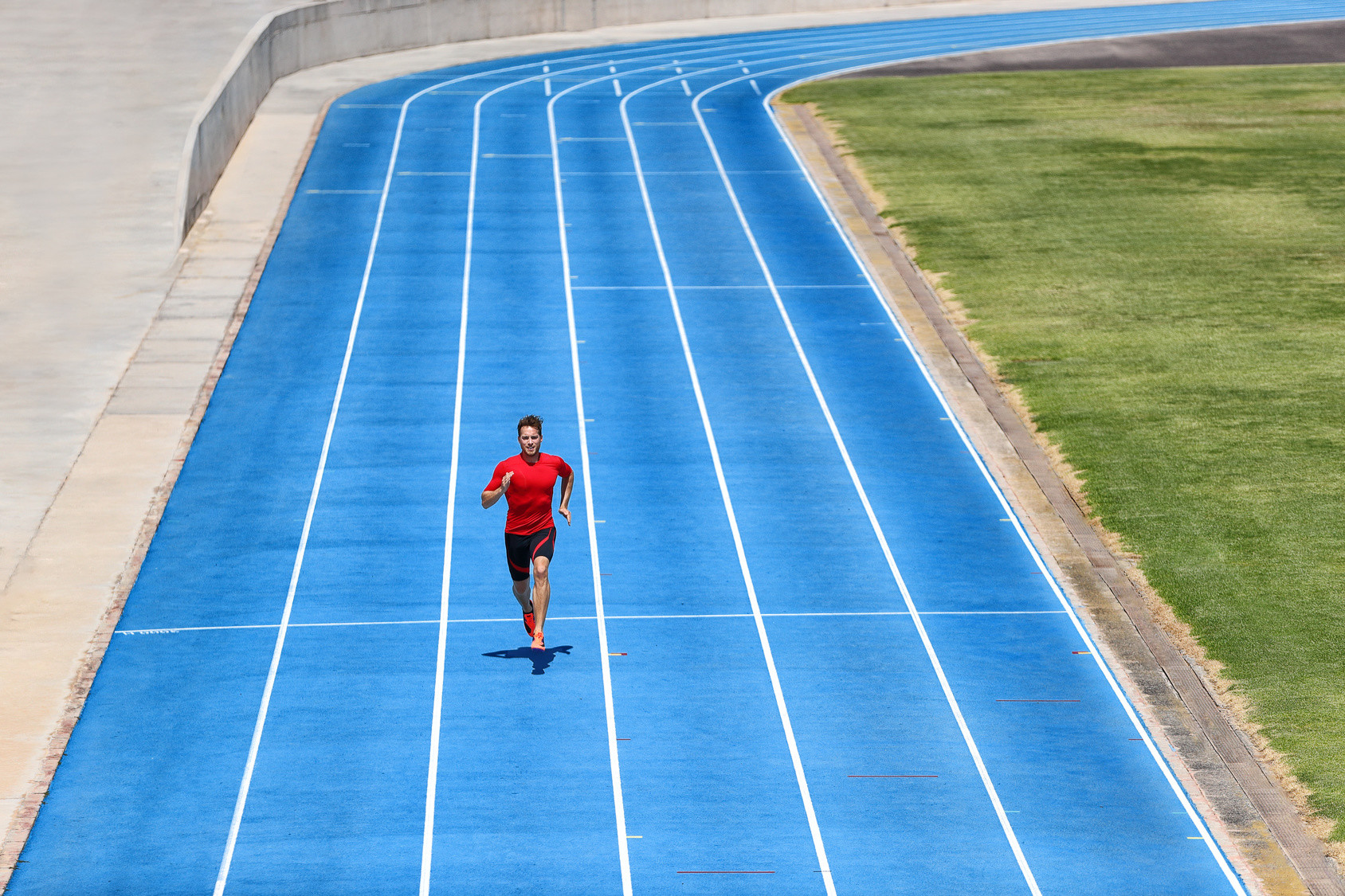
Work interval: 400 meters (1 lap) at 5K race pace
Rest interval: Recover (easy pace) 400 meters
Work interval: 800 meters (2 laps) at 5K race pace
Rest interval: Recover (easy pace) 400 meters
Work interval: 1,200 meters (3 laps) at 5K race pace
Rest interval: Recover (easy pace) 400 meters
Work interval: 1,600 meters (4 laps) at 5K race pace
Rest interval: Recover (easy pace) 400 meters
Cool down: 5 minutes at an easy pace.
3.- Mile Test.
Doing a timed mile on a track is a great way to assess your fitness and give yourself a goal to work toward. Run a hard mile (4 laps) at a fast but steady pace. You want to go as fast as you can, but maintain an even pace for each lap.
For example, if you are aiming for a 6-minute mile, your goal would be to run each lap in 90 seconds. Make a note of your time and use it as a benchmark to test yourself against every month as you ​​​train to run a faster mile. Try to run all four laps at the same pace instead of starting out too fast and slowing down.
4.- Kick Its.
Start with four 400-meter (one lap) intervals at your 10K pace, with 400-meter recovery (at an easy pace) in between. Once you've finished that, do eight 200-meter repeats at 5K pace, with 200-meter recovery (easy pace) in between.
5.- Mile Repeats.
Mile repeats are one of the best speed workouts you can do to improve your race times and build your running confidence.4 Here's a workout you can do once a week:
Start with 2-mile repeats (1 mile equals four laps) in the first session. Run each mile at your 10K or half-marathon pace.
Recover (at an easy pace) for a half-mile (2 laps) in between repeats.
Make sure your breathing and heart rate have recovered before you start your next repeat.
Add another mile repeat the following week. Try to maintain that same pace (10 to 15 seconds faster than your realistic goal marathon pace) for each one.
Try to work up your way up to six repeats if you're an advanced runner. Intermediate runners may want to stop at four or five repeats.
(08/31/2021) ⚡AMPby VeryWell Fit
Double Olympic gold medalist Derartu Tulu claims Ethiopian drug problems caused by athletes chasing quick money
Tulu has accused Ethiopian runners of chasing “quick money” and turning to performance-enhancing drugs to help them.
Ethiopia are one of seven countries currently listed as a category A nation by the Athletics Integrity Unit, meaning they considered more at risk at doping that others.
Restoring their reputation is seen as one of Tulu’s main tasks following her election as permanent President of the Ethiopian Athletics Federation (EAF) last December.
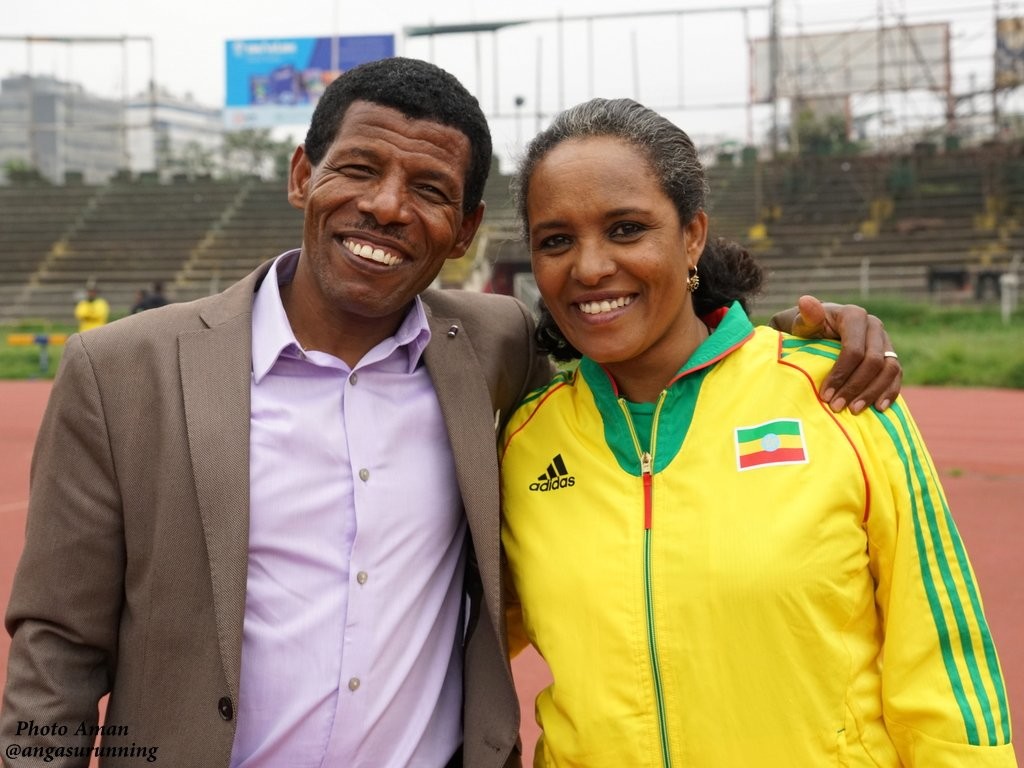
Tulu, the first black African woman to win an Olympic gold medal when she triumphed at Barcelona 1992, had been serving in the role since November 2018 following the resignation of fellow distance runner Haile Gebrselassie.
Doping products are reportedly easily available in Addis Ababa, World Athletics has warned.
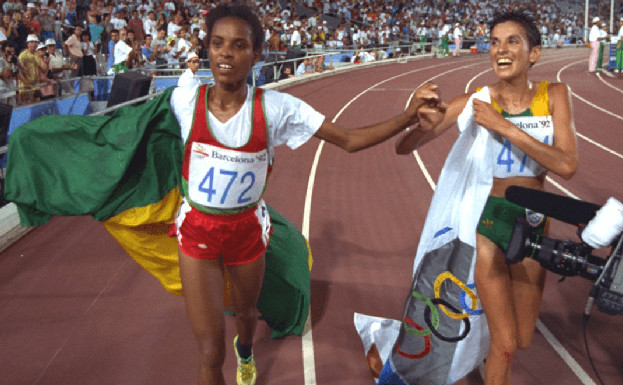
Following their inclusion on the category A list, the EAF launched a major education programme among young athletes to warn them of the dangers of doping.
"In our time, we used to compete clean," Tulu told The Daily Nation in Kenya during the recent World Athletics U20 Championships in Nairobi.
"Sheer talent drove us to victory, and it was healthy competition but today the desire for quick money is pushing athletes to use drugs.
"That is why you see some athlete doing well for a short time before disappearing after few years."
Tulu’s first Olympic victory in Barcelona entered Games legend when she beat Elena Meyer in an iconic race at South Africa's first Games appearance since the end of apartheid.
Then, eight years later in Sydney, Tulu won her second 10,000m title before returning at Athens 2004 to win a bronze medal.
Tulu's victory at Barcelona 1992 saw Ethiopia win their first Olympic gold medal for 12 years.
Since then, they have won at least one gold medal in every Olympic Games.
Their best performance came at Beijing 2008 when they won a total of seven medals - four gold, two silver and a bronze.
Ethiopia only won one gold medal at Tokyo 2020 - Selemon Barega in the men’s 10,000m – along with a silver and two bronze, their worst performance since Barcelona 1992.
"Athletics is changing, and we need to change with time," Tulu told The Daily Nation.
"Many countries are coming up fast.
"We witnessed this during the 2020 Olympic Games.
"Competition has become tougher, but we are constantly trying to nurture new talents."
(08/31/2021) ⚡AMPby Duncan Mackay
Two-time Boston Marathon Winner & Reigning World Champion Lelisa Desisa will return to Boston Marathon
The Boston Athletic Association (B.A.A.) has announced that two-time Boston Marathon champion, reigning World Athletics Marathon champion, and 2:04:45 marathoner Lelisa Desisa of Ethiopia will compete in the 125th Boston Marathon on Monday, October 11. Desisa joins 13 previously announced Boston Marathon champions who are racing as part of the John Hancock Professional Athlete Team.
“Boston has become my second home and I truly cherish my time when I am there,” said Desisa. “I return to compete still chasing my third victory in the Boston Marathon. Thank you, Boston; I look forward to putting on a good show for you on Marathon Monday!"
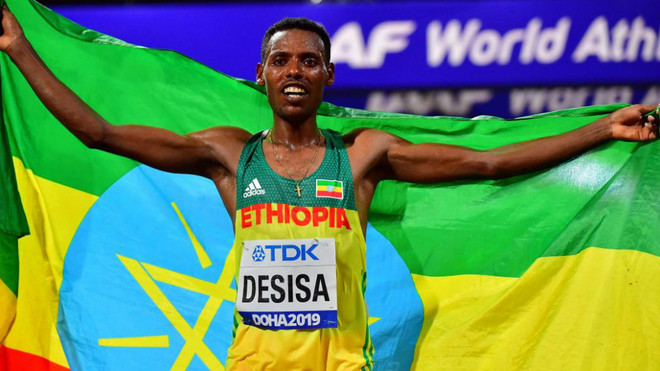
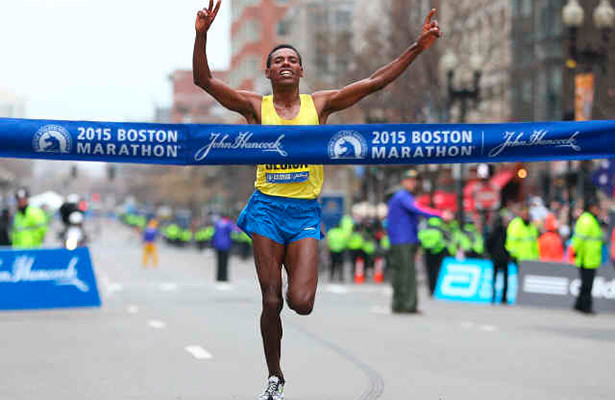
Desisa, who broke the tape first in 2013 (2:10:22) then again in 2015 (2:09:17), returns to Boston for the seventh time. In 2019, Desisa finished runner-up by a mere two seconds behind winner Lawrence Cherono. In addition to Boston and the 2019 World Championships, Desisa has previously won the 2018 TCS New York City Marathon, 2013 Dubai Marathon, and earned silver at the 2013 World Athletics Championships Marathon. His lifetime best of 2:04:45 ranks third in this year’s field, featuring nine men who have run 2:06:00 or faster.
Additionally, 2020 Houston Marathon champion and 2:05:56 marathoner Kelkile Gezahegn will compete for top honors in October. Gezahegn has won marathons in Houston, Ljubljana, Frankfurt, and Lanzhou since 2017, with four additional wins in 2016. Gezahegn’s personal best of 2:05:56 was set en route to a third-place finish at the 2018 Rotterdam Marathon. This will be his Boston Marathon debut.
(08/31/2021) ⚡AMPby B.A.A. Communications Department
Boston Marathon
Among the nation’s oldest athletic clubs, the B.A.A. was established in 1887, and, in 1896, more than half of the U.S. Olympic Team at the first modern games was composed of B.A.A. club members. The Olympic Games provided the inspiration for the first Boston Marathon, which culminated the B.A.A. Games on April 19, 1897. John J. McDermott emerged from a...
more...World Athletics President Sebastian Coe has paid tribute to former International Olympic Committee (IOC) President Jacques Rogge, who has died aged 79
Jacques Rogge served as the eighth President of the IOC, from 2001 to 2013, and competed for Belgium in sailing at three editions of the Olympic Games, in 1968, 1972 and 1976.
In 2005 he announced the awarding of the 2012 Games to London, with Coe having led the UK capital city’s bid.

Rogge, who was an orthopaedic surgeon with a degree in sports medicine, was married to Anne, and leaves a son, a daughter and two grandchildren.
“I am beyond sad to hear the news of Jacques’ passing,” Coe said. “I wrote to Jacques and Anne two weeks ago to tell them that all of us at World Athletics missed them at the Tokyo 2020 Olympic Games. I said it wasn’t the same being in the Olympic stadium watching athletics without them.
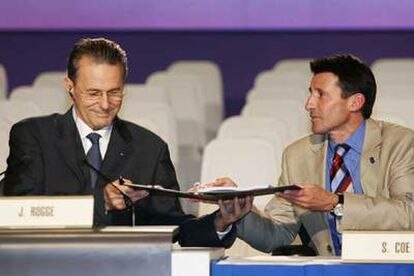
“I have a mountainous gratitude for his part in the seamless delivery of London 2012. No Organising Committee could have asked or received more. He was passionate about sport and all he achieved in sport and beyond was done with common decency, compassion and a level head. We will all miss him.”
After his career as an athlete, which included becoming a Belgian rugby international, Rogge became President of the Belgian and European Olympic Committees, and was elected President of the IOC in 2001. After his IOC Presidency, he also served as a Special Envoy for Youth, Refugees and Sport to the United Nations.
“First and foremost, Jacques loved sport and being with athletes - and he transmitted this passion to everyone who knew him. His joy in sport was infectious,” said Thomas Bach, who succeeded Rogge as IOC President in 2013.
“He was an accomplished President, helping to modernise and transform the IOC. He will be remembered particularly for championing youth sport and for inaugurating the Youth Olympic Games. He was also a fierce proponent of clean sport, and fought tirelessly against the evils of doping.
“The entire Olympic Movement will deeply mourn the loss of a great friend and a passionate fan of sport.”
In a post on Twitter, World Athletics Senior Vice-President Sergey Bubka said: “Deeply mourn the loss of a wonderful personality, true friend and great leader, IOC Honorary President Jacques Rogge.
“Dedicating his life to the Olympic Movement, he was very special in his human attitude towards others, incredible love for athletes and understanding of the youth.”
Among others to pay tribute to Rogge was Moroccan middle distance great Hicham El Guerrouj, who wrote: “With a heavy heart, I pray for the eternal repose of Jacques Rogge, the former president of the IOC. RIP.”
(08/30/2021) ⚡AMPby World Athletics
Five Tips for Preventing Runner's Knee
While there are many benefits to running, first-time runners should be on the lookout for signs of stress on their body, says orthopedic surgeon Dr. Robert Marx, so that they can prevent injury.
Runner’s knee (also called patellofemoral pain syndrome) is one of the most common running-related knee injuries. The main sign is pain in the front of the knee. It’s often caused by weakness of the core and hips.
Dr. Marx offers these helpful tips to prevent runner’s knee.
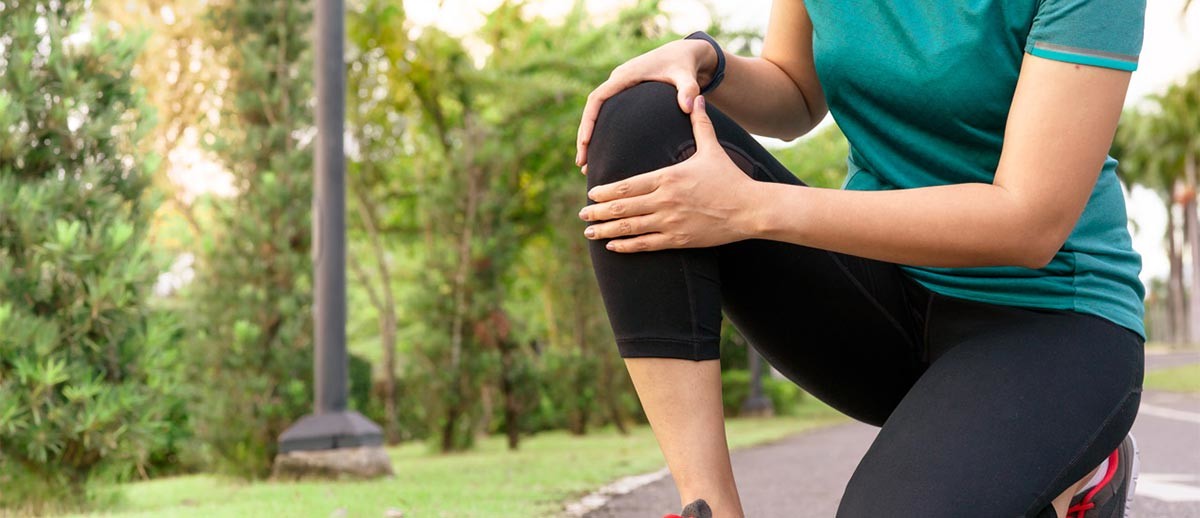
Stretch the Muscles around Your Knees
Before running, make sure to do a light warm-up followed by some stretching. Important muscle groups to focus on if you’re concerned about your knees include the quadriceps, hamstrings and calves. Contracting the opposite muscle group at the same time can help improve your ability to stretch those muscles. For example, while stretching your hamstrings, contract your quadriceps.
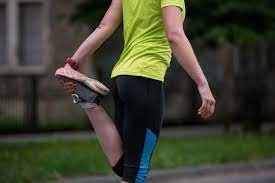
Strengthen Your Leg Muscles and Core
Strengthening is very important, including not only hamstrings and quadriceps, but also the core and glutes. Plyometric strength, which involves jumping or explosive movements, can also contribute to injury prevention. Light weight training twice a week for as little as 10 to 15 minutes can also be very helpful. Exercises to try include squats, lunges, or farmers walk (if you have weights at home).
Use Cold Therapy on Sore Knees
If your knees are sore after a run, try icing them. Sitting in frigid water for five to 10 minutes, or longer if tolerable, is a technique used by many professional athletes. Check with your doctor before attempting this and brace yourself for a cold experience!
Give your Knees a Break
Especially if you are injury prone, it is wise to mix in other forms of cardio into your routine a few times a week. This can help to ease repetitive strain. Cycling is one option. Circuit training is another than you can do from home.
Stay Hydrated
No matter what exercise you do, it is important to stay hydrated for optimal muscle function and health. Make sure to have a tall glass of water before you hit the pavement and immediately after you get home. If taking a long run, make sure to hydrate the day before and avoid alcohol.
(08/30/2021) ⚡AMPby Dr. Robert Marx, MD
Aomori 90+ Relay Team Breaks Two World Records
At a track and field meet over the weekend, a relay team made up of four men in their 90s living in Aomori prefecture set new 90+ age group world records for the 4x100 m and 4x400 m.
Meet organizers are applying to have both records officially ratified. 130 people from age 23 to 92 took part in the Aomori Masters Track and Field Championships on Aug. 29 in Hirosaki, Aomori. Among them were the relay team made up of Aomori natives Matashiro Suruga, 92, Yuzo Kudo, 92, Kozo Mitsuya, 90, and Hiro Tanaka, 90.

Despite temperatures that rose to nearly 30ËšC, the team members exhibited smooth baton work as they ran 1:43.69 in the 4x100 m. Their time took almost 40 seconds off the previous M90 record of 2:22.37.
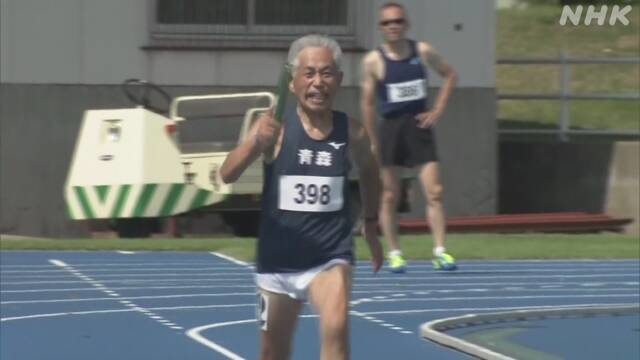
Just two and a half hours later the Aomori team took on the 4x400 m. In front of strong crowd support they clocked 9:56.36, bettering the previous record set by an American team in 2014 by around 2:45. In May this year the same Aomori team had run 8:49.01, but because they were the only team of any age class in the race that performance was ruled ineligible for recognition as a world record. This time organizers were careful to meet all conditions for world record status and will apply to the Japan Masters Athletics Union for certification.
Lead runner Suruga, who has celebrated his 92nd birthday since May's race, commented, "The four of us all worked together to get these records. Running is a lot of fun, and I want to keep doing it until I turn 100."
(08/30/2021) ⚡AMPby Brett Larner
2021 Valencia Half Marathon hopes for new records
The Valencia Half Marathon Trinidad Alfonso EDP, organized by SD Correcaminos, has confirmed the first names of the international elite that will take to the streets of Valencia Ciudad del Running on October 24th.
After the Elite Edition last year in which a new male world record for the distance was set, 57:32 by Kibiwott Kandie, and four runners ran under 58 minutes, the Valencia Half Marathon aims to become the world’s fastest in 2021, all of this without losing sight of the challenge of the women’s world record, currently set at 1:04:02 in the hands of the Kenyan Ruth Chepngetich.
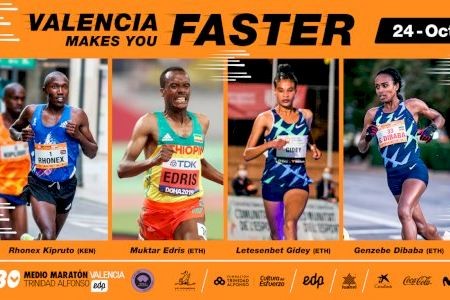
Ethiopia’s Letesenbet Gidey, current 5000m record holder (14:06.62 at the NN Valencia World Record Day in 2020), 10,000 (29:01.03, Hengelo) and 15K record holder (44:20), will try to improve upon her bronze medal in the 10,000m at Tokyo 2020 debuting at the Valencia Half Marathon at a world–class level. Alongside her, the last two winners of the event, Genzebe Dibaba (1:05:18 in 2020) and Senbere Teferi (1:05:32 in 2019), as well as Yalemzerf Yehualaw (1:04:40), third in the last World Half Marathon in Gdynia (Poland), and who improves her personal performance in each new asphalt race she takes part in.

In spite of the immeasurable records that were registered in the men’s category in 2020, with four runners under 58 minutes and the previous world record, the Valencia Half Marathon will also set up a race of an immensely high level in the men’s category. The third classified of the Elite Edition, Rhonex Kipruto (57:49 and the current 10K road world record) will return and the Ethiopian Muktar Edris, double world champion in 5.000m on track and with a time of 59:04 in half marathon, in his only experience in road race. They will be joined by several sub 59-minute runners over the distance and some world-class debutants from the track.
Marc Roig, manager of the international elite of the race, said that “Olympic years always have a special atmosphere, but the calendar does not stop and the half marathon (non-Olympic distance) has other crowns to share out. And they want them, both those who triumphed in Tokyo and those who fell short. That’s why dreaming about the world record is possible and desired.”
The Valencia Half Marathon is working with the teams of the top elite athletes so that their training in the weeks leading up to the event will culminate in an unprecedented peak of performance in Valencia.
(08/30/2021) ⚡AMPValencia Half Marathon
The Trinidad Alfonso Valencia Half Marathon has become one of the top running events in the world. Valencia is one of the fastest half marathon in the world. The race, organized by SD Correcaminos Athletics Club, celebrated its silver anniversary in style with record participation, record crowd numbers, Silver label IAAF accreditation and an atmosphere that you will not find...
more...Nick Butter becomes the fastest man to run around the coast of Britain
Endurance runner Nick Butter has completed his challenge of 200 marathons around the coast of Great Britain. Butter ran 5,240 miles (8,432km), crossing the finish line on Sunday at the Eden Project Botanical Gardens in Cornwall after 128 days of running. Butter has officially become the fastest person to run around the entire coast of Great Britain.
Butter attempted to run 200 marathons in 100 days, but his challenge was delayed due to injuries that arose during the early stages. Butter had to alter his pace from by just doing single marathons each day, and he still achieved the record 28 days over his projected time.
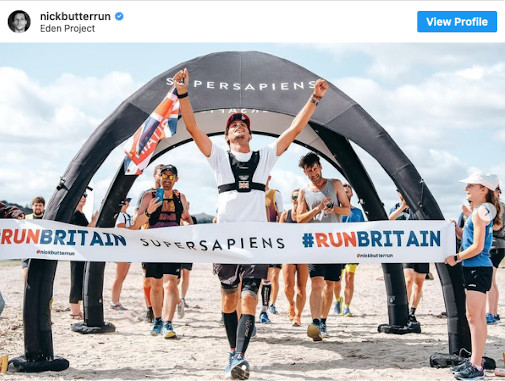
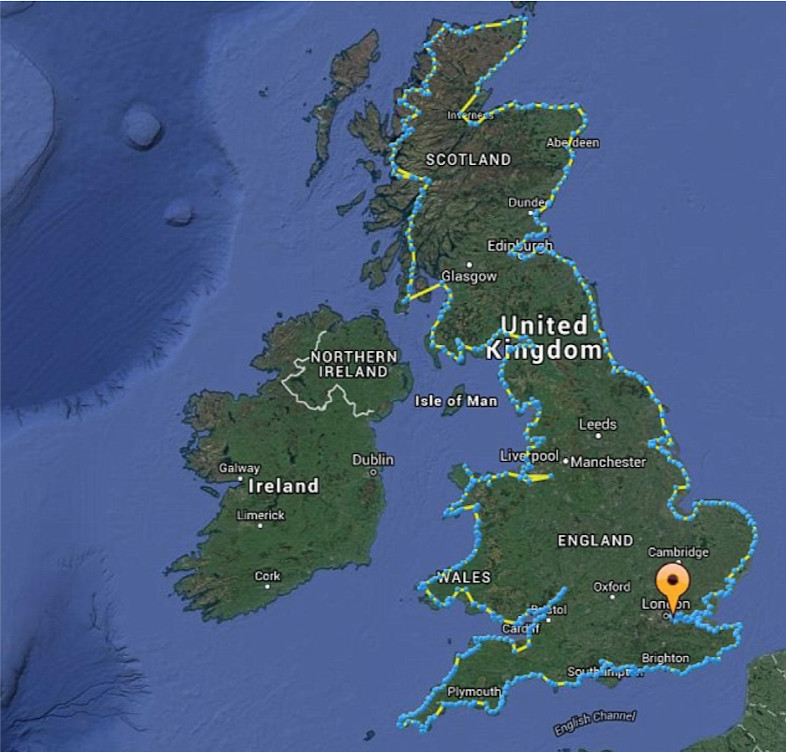
Many Britons have done the trek from Land’s End in Cornwall to Scotland’s John o’ Groats, but Butter is the first man to physically run around Great Britain in 150 days or less. Englishman Wayne Russell did the same trek as Butter in 2016, but his trek took more than twice as long.
Butter has completed huge running projects before, including his Run the World challenge that saw him run a marathon in every country, but this challenge was altogether different. His battle against time forced him to cover 66 km each day.
Butter’s challenge has been raising money for the 196 Foundation, which aims to provide aid to every corner of the world by creating a long-term commitment to help one cause per year.
(08/29/2021) ⚡AMPby Running Magazine
Allie McLaughlin wins Pikes Peak Ascent, then places 2nd in the marathon
2019 U.S. trail running champion Allie McLaughlin had an incredible weekend in Colorado Springs, Colo., winning the Pikes Peak Ascent race on Saturday in 2:49:40. On Sunday, she followed it up with a second-place finish in the Pikes Peak Marathon in 4:38:06.
McLaughlin is a former track and cross-country runner from the University of Colorado, and intended to complete the double last year, but wasn’t able to, due to a fall on the downhill portion of the course. This year she bounced back, completing her goal of the Pikes Peak double, the Ascent (21 km) and marathon on back-to-back days.
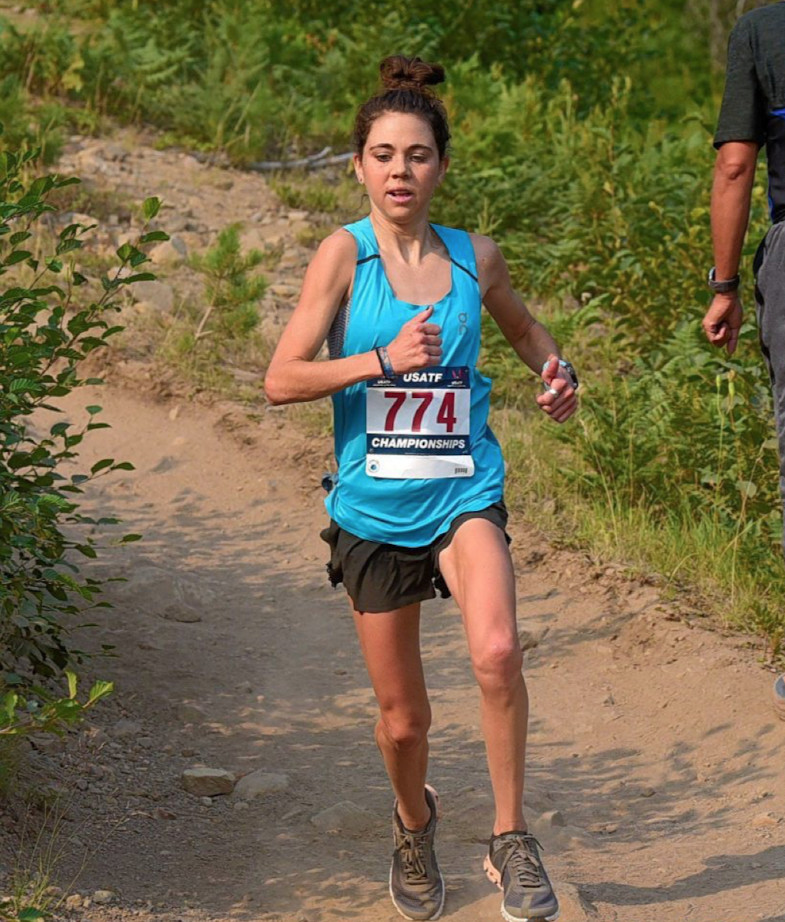
When we asked McLaughlin about her Pikes Peak double, she said, “The key was sticking to my routine and staying relaxed. Both seemed to really help me mentally. I felt way less pressure on the second day and just ran. There were times I could’ve pushed harder but first and foremost I wanted to complete my goal and finish healthy.”
The Ascent and the marathon distances require runners to climb 1,690-metres across 21 km to reach the summit of Pikes Peak.
Trail running veteran Stevie Kremer won the Pikes Peak marathon in 4:34:35. The 2014 Sierre-Zinal champion has made a return to trail racing after becoming a mother in 2018.
In the men’s race, Seth DeMoor won his second straight Pikes Peak Marathon in 3:36:31, setting the record for the masters’ age group. DeMoor decided at the last minute that he try to defend his title. DeMoor is a well-known YouTuber/runner with over 140,000 subscribers, with videos on training, shoes and a glimpse inside his trail races.
Pikes Peak Marathon is the second race in the North American Golden Trail World Series and the next race is at Whistler Alpine Meadows 50K on Sept. 24, in Whistler B.C
(08/29/2021) ⚡AMPby Running Magazine
You’ll Want to Load Up on Vitamin K for Better Heart Health
Add dark leafy greens, broccoli, Brussels sprouts, and avocados to your grocery list ASAP.
Eating a diet rich in foods containing vitamin K can provide a significant protective effect when it comes to your heart health, according to new research.

Dark leafy greens, broccoli, Brussels sprouts, and avocados are all rich in vitamin K.
Eating a diet rich in foods containing vitamin K can provide a significant protective effect when it comes to heart health, according to new research in the Journal of the American Heart Association.
Researchers looked at dietary data from more than 50,000 people taking part in a decades-long study in Denmark. They found that those who ate more foods high in vitamin K had a 21 percent lower risk of developing atherosclerotic cardiovascular disease than those who ate the lowest amounts.
The effect was highest among those who consumed green leafy vegetables and vegetable oils, which have a form of the vitamin called K1, according to lead author Nicola Bondonno, Ph.D., a research fellow at the Institute for Nutrition Research, at Edith Cowan University in Australia. But, she told Runner’s World, there was also lower risk among those who ate foods high in a form called K2, found in animal products and fermented foods.
Although it’s possible to get a boost of vitamin K through taking supplements—much as you can isolate other vitamins or minerals in the same way—previous studies on supplements in general cast doubt on whether this is the best route.
For example, a 2019 research review looked at both observational studies and randomized trials on multivitamins, antioxidants, folic acid, vitamin E, folic acid, and beta-carotene, which have all shown promise for cardiovascular health. But researchers found little evidence that any of them aided in prevention or treatment of cardiovascular disease.
Getting these compounds through food, however, is a very different story. That’s because dietary sources not only have a range of vitamins, they also tend to have fiber, antioxidants, and healthy fats, which all work together to improve your heart function, according to Robert Greenfield, M.D., medical director of non-invasive cardiology and cardiac rehabilitation at MemorialCare Heart & Vascular Institute at Orange Coast Medical Center.
For instance, foods high in vitamin K—such as dark leafy greens, broccoli, Brussels sprouts, and avocados—are also abundant in other vitamins and minerals that benefit the heart, Greenfield told Runner’s World. Those include iron, magnesium, and zinc. Meats and dairy high in vitamin K—such as beef liver, chicken, and hard cheeses—also provide protein and healthy fats. Greenfield added that vitamin K is fat soluble, which means you need a bit of fat for proper absorption, so dietary options may be an advantage there as well.
One more benefit to getting vitamin K in your diet: It doesn’t take much effort to see benefits. In the recent study, those who had more of the vitamin didn’t see greater benefits, said Bondonno. So, adding options like chard or spinach to a meal every day is likely enough of a heart booster, she said.
“The multitude of bioactive compounds in vitamin K-rich vegetables can protect you against other chronic diseases in many different ways,” she said. “And the takeaway is that they help protect against cardiovascular disease as well.”
(08/29/2021) ⚡AMPby Runner’s World
Thousands race in 'Rock the Parkway' 5K benefiting Children's Mercy
More than 3200 people ran on Saturday morning in Kansas City, Missouri, for a good cause.
Rock The Parkway brought many people out to run in either a half marathon or 5K, with proceeds going to Children’s Mercy Hospital.
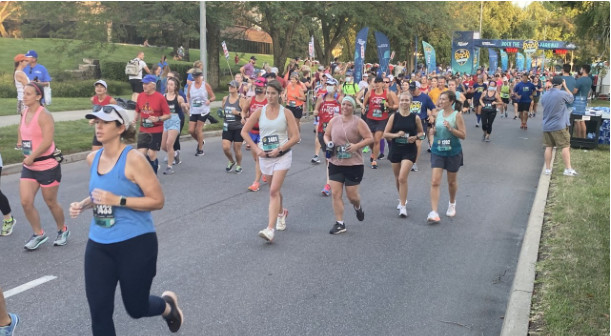
A spokesperson for the run said this year they had about half the amount they had in years past.
The course goes along Ward Parkway and according to run organizers “It has been voted a Best Race Course by area runners, year after year.”
This is the 12th year of Rock The Parkway.
(08/29/2021) ⚡AMPThe TransRockies Golden Ultra cancelled
The TransRockies Golden Ultra race, one of Canada’s toughest trail races, has been cancelled this year due to the mandating of organized events set by the British Columbia government.
The Golden Ultra was supposed to take place on Sept. 17-19 in Golden, B.C. but as of Aug. 23, the B.C Interior Health Region stated that all outdoor organized events will be limited to under 100 people for one month to stop the spread of COVID-19.

Race organizers did everything they could to try to make this event happen, but the public health mandate does not allow large gatherings, and this event cannot operate without all its volunteers and athletes.
Information on the 2022 event will be updated over the next couple of days. All of the 2021 registrants will be deferred to the 2022 event with no penalty.
(08/29/2021) ⚡AMPby Running Magazine
Yehualaw smashes world half marathon record in Larne
Ethiopia’s Yalemzerf Yehualaw took 18 seconds off the world half marathon record, running a remarkable 1:03:44* at the Antrim Coast Half Marathon, a World Athletics Label Road Race, in Larne, Northern Ireland, on Sunday (29).
Yehualaw becomes the first woman to break 64 minutes for the half marathon, with her mark improving on the 1:04:02 world record which had been set by Kenya’s world marathon champion Ruth Chepngetich in Istanbul on 4 April.
Yehualaw had been second in that race in Istanbul, running 1:04:40, but this time her dominant performance saw her win the women's race by six minutes ahead of Kenya’s Jane Nyaboke (1:09:45). Britain's Rose Harvey was third (1:10:29) and Georgie Schwiening fourth (1:11:13), with Northern Ireland's Fionnuala Ross (1:13:10) and Ann-Marie McGlynn (1:13:13) fifth and sixth respectively. Yehualaw's time placed her ninth overall.
Paced by Roy Hoornweg and Mohamed Ali, Yehualaw was part of a pack of runners which went through the 5km mark in 15:05 and hit 10km in 30:22. Turning to run back along the coast, Yehualaw passed the 15km mark in 45:24 looking comfortable and continued to push on, eventually crossing the finish line full of emotion, with 1:03:44 on the clock.
“This was a dream come true for me,” said 22-year-old Yehualaw. “I have tried twice before to break the world record but it didn’t happen, but I’m so happy it happened today in Larne.”
The performance would have meant even more to Yehualaw after she finished fourth in the Ethiopian Trials 10,000m and did not make the team for the Olympic Games in Tokyo. She was also left motivated after her third-place finish at the World Athletics Half Marathon Championships in Gdynia last October.
“At the World Half Marathon Championships I was trying to win gold but it didn’t happen,” Yehualaw added. “But today I’m so happy.”
Coached by Tessema Abshero as part of the NN Running Team, Yalemzerf made her international debut in 2019 when she won the Rabat Half Marathon in 1:09:13. Returning to Rabat four months later, she won the African Games title and then finished second at the Delhi Half Marathon.
Her bronze medal win at the 2020 World Half Marathon Championships was followed by victory in Delhi, where her winning time of 1:04:46 was then the second-fastest ever women’s time on a record-eligible course. In Istanbul in April she improved to 1:04:40 which put her third on a world all-time list since rewritten thanks to her 1:03:44 in Larne.
It was an Ethiopian double in Larne as national record-holder Jemal Yimer won a close men's race in 1:00:30 ahead of his compatriot Tesfahun Akalnew (1:00:31) and Kenya's Shadrack Kimining (1:00:32).
A lead group of four had broken away early on and Kimining led Britain's Marc Scott, Yimer and Akalnew through 10km in 28:53. Kimining remained to the fore as the group passed 15km in 43:29 but as the race came down to a sprint finish it was 2017 world 10,000m fifth-placer Yimer who had the strongest kick and he held off Akalnew by a single second, with Kimining just another second behind. Scott finished fourth in 1:00:35 and Nigel Martin fifth in 1:03:22, with Ireland's Ryan Creech sixth in 1:03:26.
"I am happy with my win," said Yimer. "I had prepared for a course record but due to the wind and the circumstances I didn’t make sub-60 but I am happy with the win."
(08/29/2021) ⚡AMPFrancois D'haene claims his fourth victory at UTMB
Frenchman Francois D’haene delivers once again in the Alps, achieving his fourth victory at Ultra-Trail du Tour Mont Blanc. D’Haene finished in 20 hours and 45 minutes to cover the 170km course, climbing over 10,000m up and down the valleys of Mont Blanc.
This is D’haene’s fourth win in his fourth attempt at UTMB. He now single-handedly holds the record for most wins since the race began in 2003, passing Spain’s Kilian Jornet who holds three.
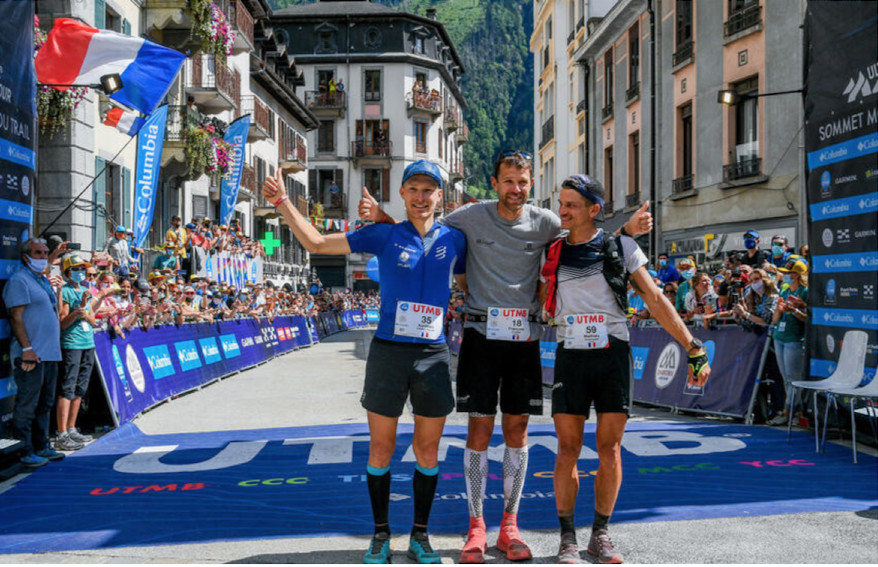
D’haene lead since the first breakaway and started a second breakaway group with American Jim Walmsley, as they began the climbing in Italy, D’haene dropped Walmsley and charged on towards the finish line. Walmsley dropped out of the race after failing to stay on pace with D’haene.
French-Canadian, who lives and trains around Montreal but was born in France, Mathieu Blanchard finished third to round out the podium. This marks the highest finish by a Canadian ever at UTMB. Aurélien Dunand-Pallaz of France was second to round out the French sweep of the podium, for the first time in history at UTMB.
In the women’s race, it was American Courtney Dauwalter who rose to glory. Dauwalter won the previous edition of the race, becoming the third woman to successfully defend her title on the hills of Mont Blanc. Dauwalter broke fellow American Rory Bosio’s course record finishing in 22 hours and 30 minutes. Dauwalter finished seventh in the overall standings, the highest finish ever by a woman.
(08/28/2021) ⚡AMPNorth Face Ultra Trail du Tour du Mont-Blanc
Mountain race, with numerous passages in high altitude (>2500m), in difficult weather conditions (night, wind, cold, rain or snow), that needs a very good training, adapted equipment and a real capacity of personal autonomy. It is 6:00pm and we are more or less 2300 people sharing the same dream carefully prepared over many months. Despite the incredible difficulty, we feel...
more...Stephen Scullion and Paul Pollock ready for big guns in Antrim Coast Half Marathon
Tokyo Olympians Stephen Scullion and Paul Pollock will spearhead the local challenge against a star-studded international field in the Antrim Coast Half Marathon on Sunday.
Sir Mo Farah - who won the 5,000m and 10,000m double at both London 2012 and Rio 2016 before missing out on Tokyo qualification - is unable to defend the inaugural title he won last year in a time of one hour and 27 seconds due to injury but will be at the event as race starter and will also carry out media and ambassadorial roles. Sir Mo said: "I can't wait to be involved this time around, especially with the kids race.
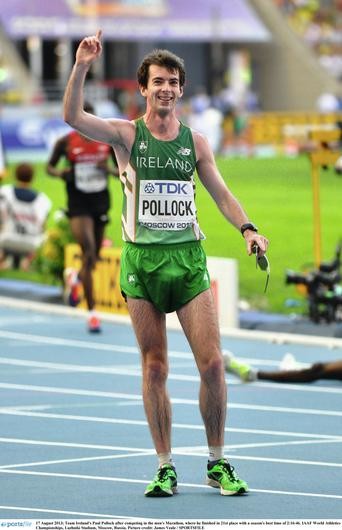
I aim to be back for another crack at the race next year." Big-race organiser James McIlroy - an 800m semi-finalist at the 2000 Sydney Olympics and who roomed with Sir Mo on Team GB trips - feels it will be one of the strongest half marathon line-ups ever seen on these islands.
"It promises to be one of the greatest half marathons ever assembled in the UK or Ireland with 53 men and 25 women taking to the start. With three full national teams confirmed, and runners from Africa, America, Europe, UK and Ireland, this year’s first ever World Athletics event in the province promises to be one of the leading road races in the world for 2021," said the Larne man, grandson of Belfast Celtic legend Sid McIlroy.
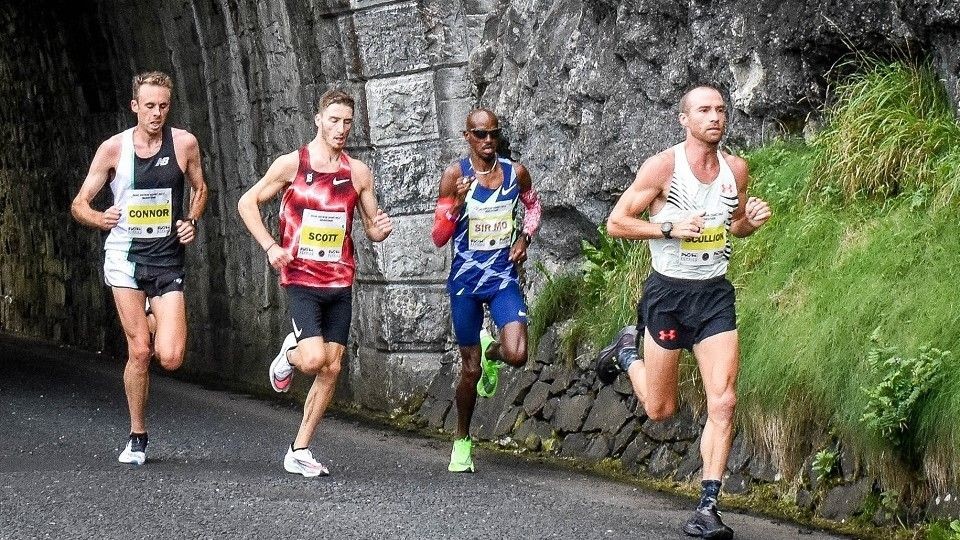
In addition to boasting 11 Olympians, headlining the men’s race will be Ethiopian record holder Jemal Yimer. Yimer won his last half marathon outing at the Houston half marathon in 2020 and has also achieved the fastest ever debut half marathon in 59:00 achieved in R’as al Khaimah in the UAE back in 2019.
He will be joined by countryman Tesfahun Akalnew, who has a personal best of 59:22, previously finished second in the African Games and comes to the Antrim Coast with strong runs in 2020, finishing fifth in the Barcelona Half Marathon and sixth in New Delhi. Completing the African trio will be Shadrack Kimining, winner of the 2016 Cardiff Half Marathon and in Gothenburg in 2018 and 2019.
Leading the UK and Ireland challenge will be Tokyo Olympians Scullion, Pollock and Marc Scott, the latter the two-time European record holder and second fastest all-time Briton behind Sir Mo over 10,000m. On Sunday Scott will seek to become only the second Briton to break the 60-minute barrier.
Belfast ace Scullion finish fourth in last year’s race on the way to setting a new Northern Ireland record of 61.12. Pollock, fresh from his second Olympics, will make his debut on the fast scenic course and should also threaten the top positions.
Barcelona Olympian and multiple World record holder Tommy Hughes will have huge crowd support as he makes his latest bid on the Vet +60 World record, which he smashed at last year’s race in a time of 71.09. McIlroy added: "With full strength teams from Ireland, England and Northern Ireland, we may well see the first ever sub-60-minute half marathon in Ireland." The women’s race is headlined by Ethiopian sensation Yalemzerf Yehualaw.
The 22-year-old finished third in last year’s World Half Marathon Championship after tripping on the finishers mat, and has targeted the Antrim Coast's fast course since lthe inaugural event last September. The elite race starts at 8.00am in Larne with the mass participation event - cancelled last year due to the Covid pandemic - starting at 9.30am. There will be live coverage on the BBC.
(08/28/2021) ⚡AMPby Frank Brownlow
MEA ANTRIM COAST HALF MARATHON
The MEA Antrim Coast Half Marathon 2022 has been approved by World Athletics as an Elite Event. The World Athletics certified course takes in some of the most stunning scenery in Europe, combined with some famous landmarks along the route. With it's flat and fast course, the race is one of the fastest half marathons in the world. Starting...
more...Hartford Marathon Foundation Encourages Community To Lace Up for Social Justice
To celebrate the diverse backgrounds and unique experiences of those that participate in its race events, the Hartford Marathon Foundation today launched the Lace Up for Social Justice initiative. Proceeds from the sale of $10 commemorative shoelaces will directly benefit the Boys & Girls Clubs of Hartford Diversity, Equity and Inclusion programs.
Adorned in a rainbow of colors reading "I RUN FOR SOCIAL JUSTICE", the shoelaces are on sale now through the HMF Shop, at upcoming HMF and Boys and Girls Clubs events and through registration for HMF's signature race, the Eversource Hartford Marathon and Half Marathon. Participants are encouraged to wear their laces proudly on race day, Saturday, October 9.
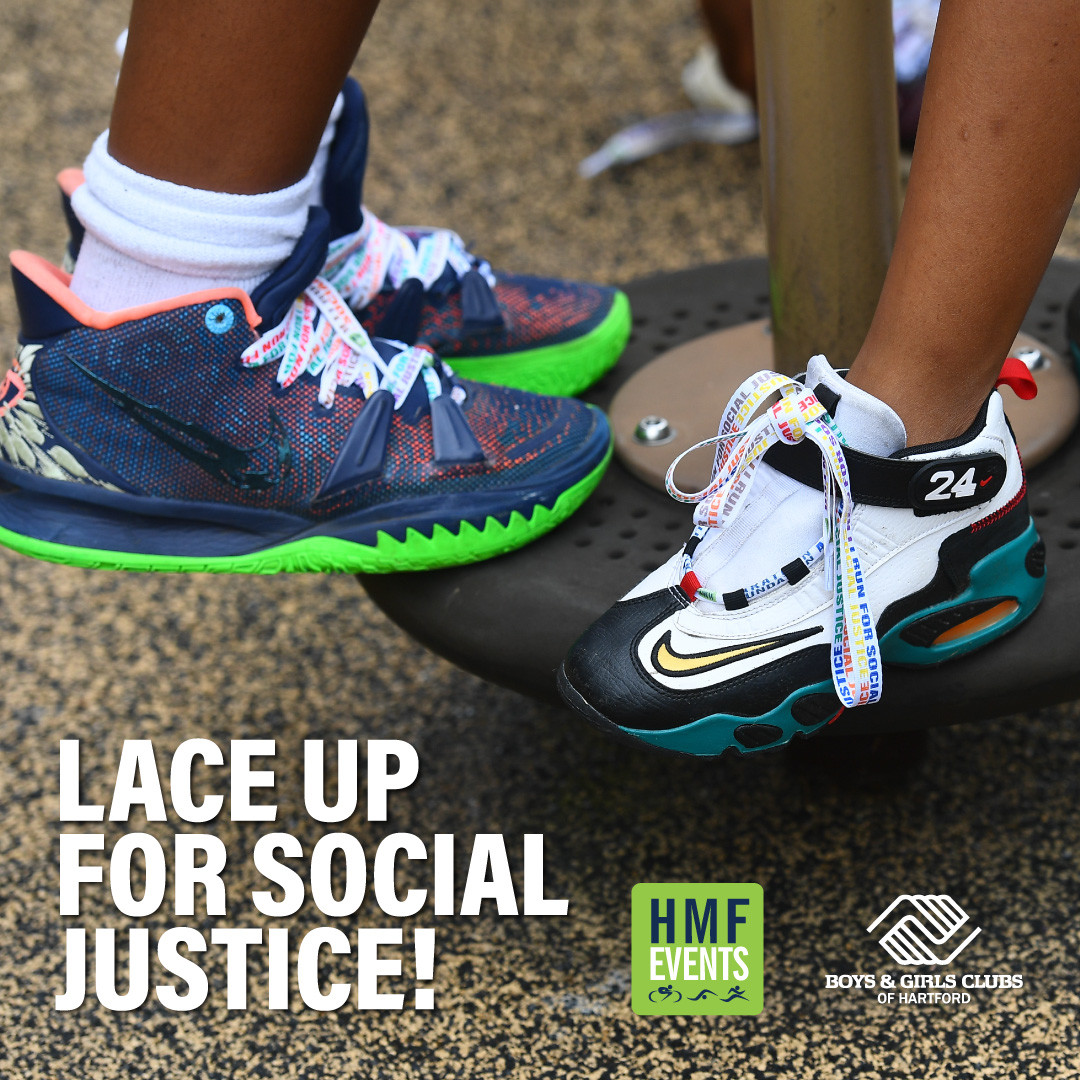
The Lace Up campaign runs in conjunction with the marathon's "Run United" theme for 2021, which is being celebrated through a special HMF FitKids running event on Saturday, October 2. Local youth will have the memorable experience of finishing a race under the iconic Soldiers Sailors Memorial Arch and crossing the grand finish line of the Eversource Hartford Marathon. A replica of the Black Lives Matter mural that is painted on Trinity Street in Hartford will also be unveiled along the sideboards of the finish line.
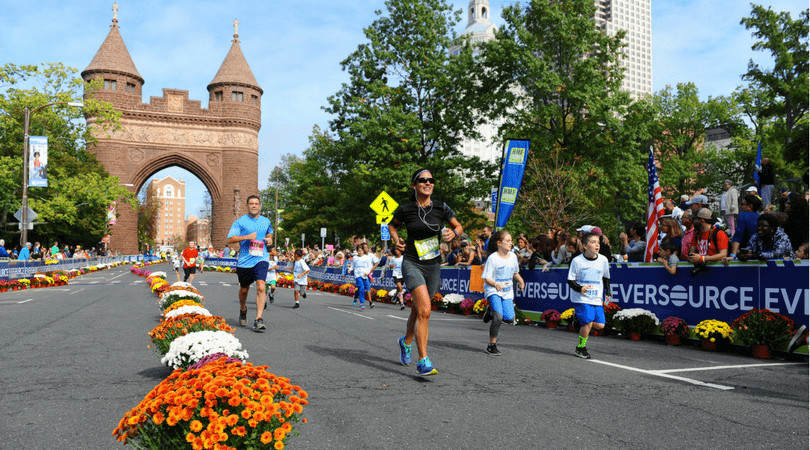
"We are proud that the events we produce welcome people from all walks of life to achieve goals and we celebrate each and every one of their accomplishments equally - that's no more evident than at the Eversource Hartford Marathon," said Beth Shluger, President and CEO of the Hartford Marathon Foundation. "We want to honor that social responsibility and raise funds for the incredible resources available through the Boys & Girls Clubs of Hartford to foster a more caring, accepting and equitable future for our youth."
"The Boys & Girls Clubs of Hartford are proud to be a part of the Eversource Hartford Marathon Lace Up for Social Justice Campaign. Now more than ever, our Boys & Girls Diversity, Equity and Inclusion programs are so important. We believe all young people should be afforded the guarantee of fair treatment, access and opportunity," said Samuel S. Gray, Jr., President and CEO of the Boys & Girls Clubs of Hartford.
In addition to the Lace Up campaign to raise funds for the benefit of the Boys & Girls Clubs of Hartford, the Eversource Hartford Marathon, Half Marathon, Team 13.1 Relay and Charity 5K will continue to benefit additional worthy causes in the community. The Official Charity program for the October 9 race features 19 organizations committed to rallying participants, supporters and volunteers to raise funds and awareness. More than $8.2 million has been raised for charity through the Eversource Hartford Marathon and Half Marathon since its inception in 1994.
Purchase laces, learn more about Official Charities or register for the Eversource Hartford Marathon events at www.hartfordmarathon.com.
(08/28/2021) ⚡AMPEversource Hartford Marathon
Be part of the biggest race day in Connecticut. Where runners, families, charities and volunteers come together in an inspiring display of community spirit. Enjoy a top-notch experience, from expo to post-race party: A plethora of resources and expertise. High-energy crowds. Pomp and circumstance filling the streets. Thorough course amenities, including fuel, pacers, security and medical services. Festive celebration with...
more...It is Going to Be a Busy 7 Weeks With All 6 World Marathon Majors Taking Place
For the first time ever, all six World Marathon Majors will be contested in the fall of the same year. Due to postponements caused by COVID-19, the Berlin, London, Tokyo, Chicago, Boston, and New York City marathons are all scheduled to take place within a seven-week timeframe.
For many athletes, these marathons will be their first 26.2 since the onset of the pandemic, and they’ve set big goals for the return of the sport.

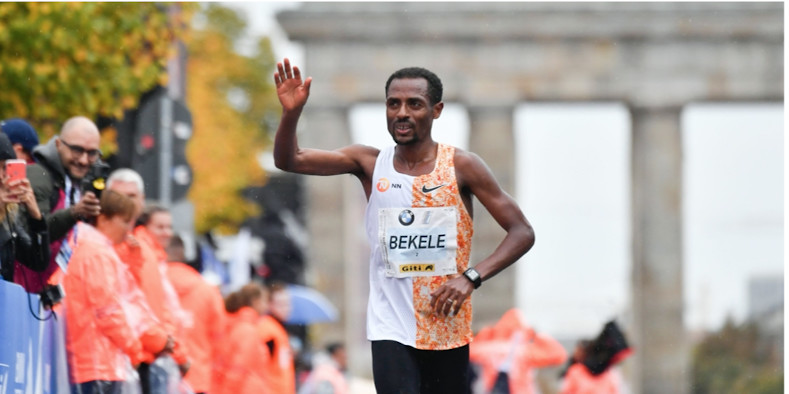
Between runners doubling in events to some chasing national records, the best marathoners in the world are taking full advantage of these highly anticipated competitive opportunities. Here, we outlined some quick takeaways and storylines we’ll be watching based on the early elite field announcements. (And we’ll keep this list updated if and when top runners throw their name into one of these amazing fields!)

Berlin Marathon—Sunday, September 26
MEN:
Kenenisa Bekele, Ethiopia (2:01:41)
Right now, the only elite runner confirmed for the Berlin Marathon is Kenenisa Bekele. Berlin will be the first of two marathons in 42 days for the Ethiopian runner, who is also scheduled to race the New York City Marathon on November 7, a grueling double that will mark Bekele’s first races since March 2020.
As three-time Olympic champion told Sports Illustrated, he is ready for the challenge.
“For a whole year, I couldn’t race and it’s been really difficult for athletes,” Bekele said. “I want to take this chance and see what is possible.”
London Marathon—Sunday, October 3
Eight weeks after winning silver at the Tokyo Olympics, Brigid Kosgei aims to defend her title in London. The world record-holder from Kenya will be going for her third consecutive victory in London against a stacked field that includes defending New York City Marathon champion Joyciline Jepkosgei and two-time Tokyo Marathon winner Birhane Dibaba.
On the men’s side, Shura Kitata will also be looking to defend his title in London after a disappointing performance in Tokyo. The Ethiopian standout struggled in the heat during the Olympic marathon in Sapporo and dropped out of the race, but he’s aiming for redemption on a course where he experienced a breakthrough last year.
“I was disappointed to have to pull out of the Olympic Games Marathon, but I just did not adapt to the weather well,” Kitata told World Athletics. “It was very cold in Ethiopia prior to leaving for Tokyo and when we got there the weather took its toll on my body and made my breathing very hard. But I’m healthy and looking forward to racing in the Virgin Money London Marathon again. I am preparing very well and my coach has me very ready to defend my title in London.”
Chicago Marathon—Sunday, October 10
Almost a year after she nearly broke Deena Kastor’s American marathon record, Sara Hall is gearing up to again chase the elusive time set 15 years ago. In Chicago, Hall aims to continue her breakthrough streak, which started during the 2020 COVID-adjusted season, and run under the record of 2:19:36.
“It has been too long since I’ve been back, and when I thought about where I wanted to chase the American record, I thought it would be more exciting to do it at home, in the U.S., and Chicago is such an epic race,” Hall said in a statement. “I’m really excited to have my best marathon yet on U.S. soil.”
After dropping out of the 2020 Olympic Marathon Trials, Hall made an impressive comeback with a runner-up finish at the London Marathon last October, and a victory at the Marathon Project in December. Hall’s winning time of 2:20:32 is her personal best and the second-fastest performance ever by an American woman.
Hall will have stiff competition up front with Ruth Chepngetich in the field. The Kenyan marathoner set the half marathon world record in April. She had an off day at the Tokyo Games and dropped out of the marathon around the 20-mile mark. Chicago will be the 2019 world champion’s first major marathon since the Olympics and her first race on U.S. soil.
Another American to watch will be Keira D’Amato; she made headlines in 2020 with huge improvements on the track and the roads, which helped her land her first professional contract with Nike at 36 years old. D’Amato was expected to be an Olympic team contender in the 10,000 meters, but she withdrew from the U.S. Olympic Track and Field Trials, citing a hamstring injury. The Chicago Marathon will be D’Amato’s first race since February.
Galen Rupp, who placed eighth in 2:11:41 at the Tokyo Olympics on August 8, is returning to race the marathon in Chicago. This marathon holds some significance for Rupp, who became the first American male athlete since Khalid Khannouchi to win the race in 2017. The last time he competed in the Windy City was during his comeback to the sport after having Achilles surgery. In the 2019 race, he dropped out just before the 23-mile mark, but he’s looking to improve this time around.
“My goal is winning,” Rupp said in a statement. “I want to come back and win. 2019 left a sour taste in my mouth. I didn’t finish that race so I cannot wait to get back out there and come back stronger than ever. It has been a wild ride since then. I’m healthy, I’m happy, and it’s going to be tremendous to come back.”
Boston Marathon—Monday, October 11
Boston will have one of the deepest elite fields on the women’s side with nine women who have run under 2:22, including Olympic bronze medalist Mare Dibaba and 2017 Boston Marathon winner Edna Kiplagat.
The race will also be Des Linden’s first of two marathons this fall. The 2018 Boston Marathon champion is entered in the New York City Marathon on November 7, a shorter than normal timeframe between major marathons. Boston will be Linden’s first major marathon since she finished fourth at the 2020 Olympic Marathon Trials. This spring, Linden set the 50K world record by averaging 5:47 pace for more than 31 miles.
Fellow Americans Jordan Hasay and Molly Huddle will also be returning to Boston after the event took a two-year hiatus due to the pandemic.
​
In the men’s field, several past podium finishers are making their return to Boston, including Kenyan standouts Wilson Chebet, Felix Kandie, and Paul Lonyangata. A large American contingent will be led by four-time Olympian Abdi Abdirahman, who finished 41st in the marathon at the Tokyo Games. Including Abdirahman, eight of the top 12 finishers from the U.S. Olympic Marathon Trials are scheduled to compete.
New York City Marathon—Sunday, November 7
The field assembled for the women’s race, especially the American contingent, is the most stacked marathon of all the fall races. Tokyo Olympians Molly Seidel, Sally Kipyego, and Aliphine Tuliamuk are all slated to return to competition in the Big Apple after representing Team USA in Sapporo.
Fellow podium finisher Peres Jepchirchir of Kenya is also returning to the distance after dominating the marathon to win gold in her first Olympic Games. She has the fastest personal best among the field after running 2:17:16 in Valencia last year. Including Jepchirchir, the New York City field includes four women who have run under 2:21.
Outside of the Olympic team, a handful of the top Americans are also gearing up for fast times in the city. Emily Sisson, Kellyn Taylor, Stephanie Bruce, Roberta Groner, and Laura Thweatt are scheduled to compete. And Des Linden will be racing her second marathon of the fall after competing in Boston on October 11.
Along with Bekele’s double, Abdi Nageeye’s performance will draw fans in to watch the men’s race in New York City. The runner from the Netherlands secured a silver medal in the Tokyo marathon by crossing the finish line in 2:09:58, a huge improvement from his 11th-place finish in Rio. He’s finished in the top 10 twice at the Boston Marathon, but this fall will mark his debut in New York City and he’s feeling confident in his chances.
“For me, winning the silver medal in the Olympic Games was not a surprise,” Nageeye said in a statement. “There were many good athletes in the race, but I knew my preparation had been good. I was ready for the conditions, and most importantly I believed in myself. I will take that same focus into my preparations for New York, and my belief and confidence in my abilities is even higher than it was in Sapporo. There is nothing I want more than to bring a New York City victory back home along with my Olympic medal.”
There will also be a couple of highly anticipated marathon debuts, including Kibiwott Kandie and Ben True. Kandie is the half marathon world record-holder and a world championships silver-medalist. True will be aiming for redemption after finishing fourth in the 10,000 meters and narrowly missing out on making Team USA at the Olympic Trials in June.
(08/28/2021) ⚡AMPby Runner’s World


